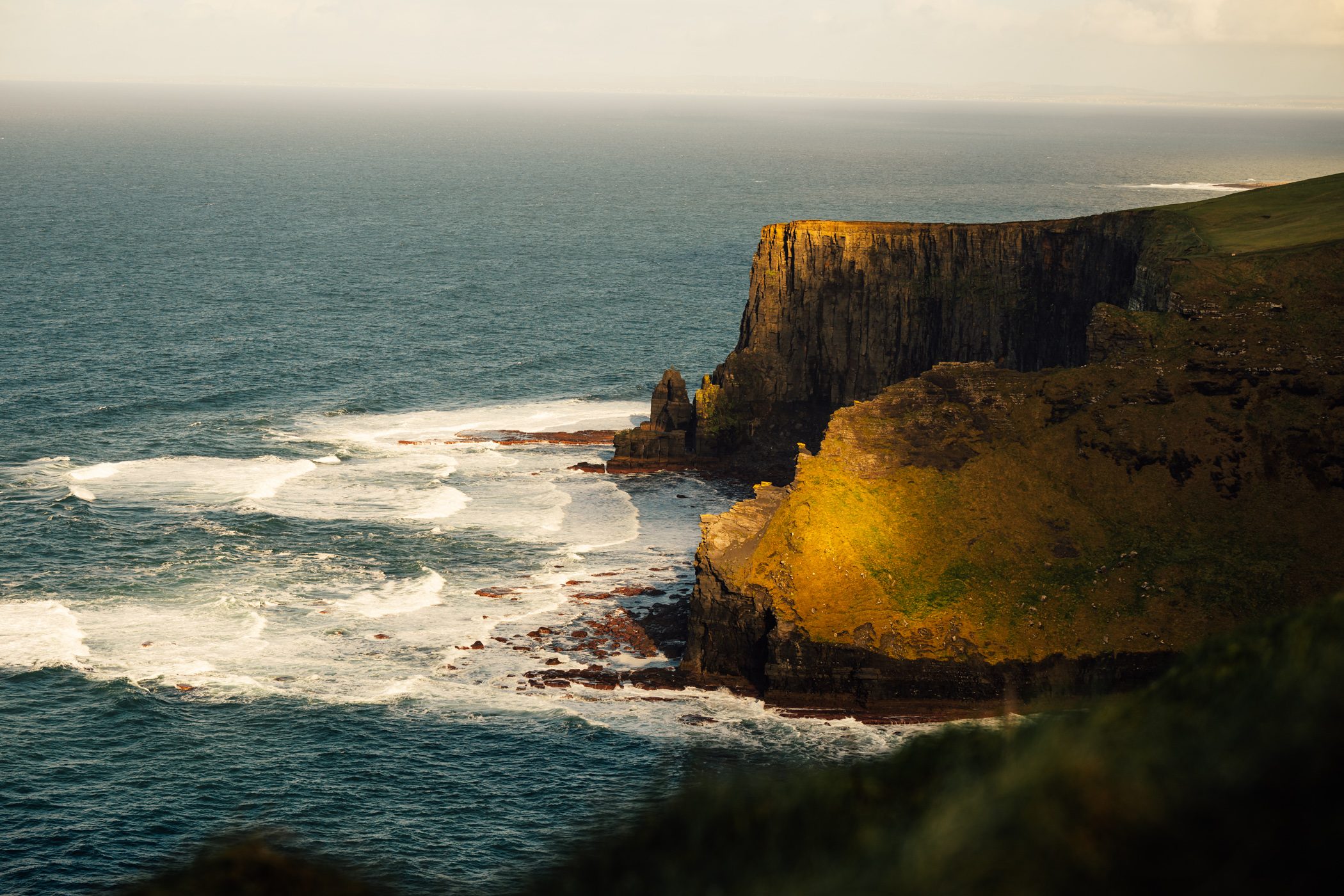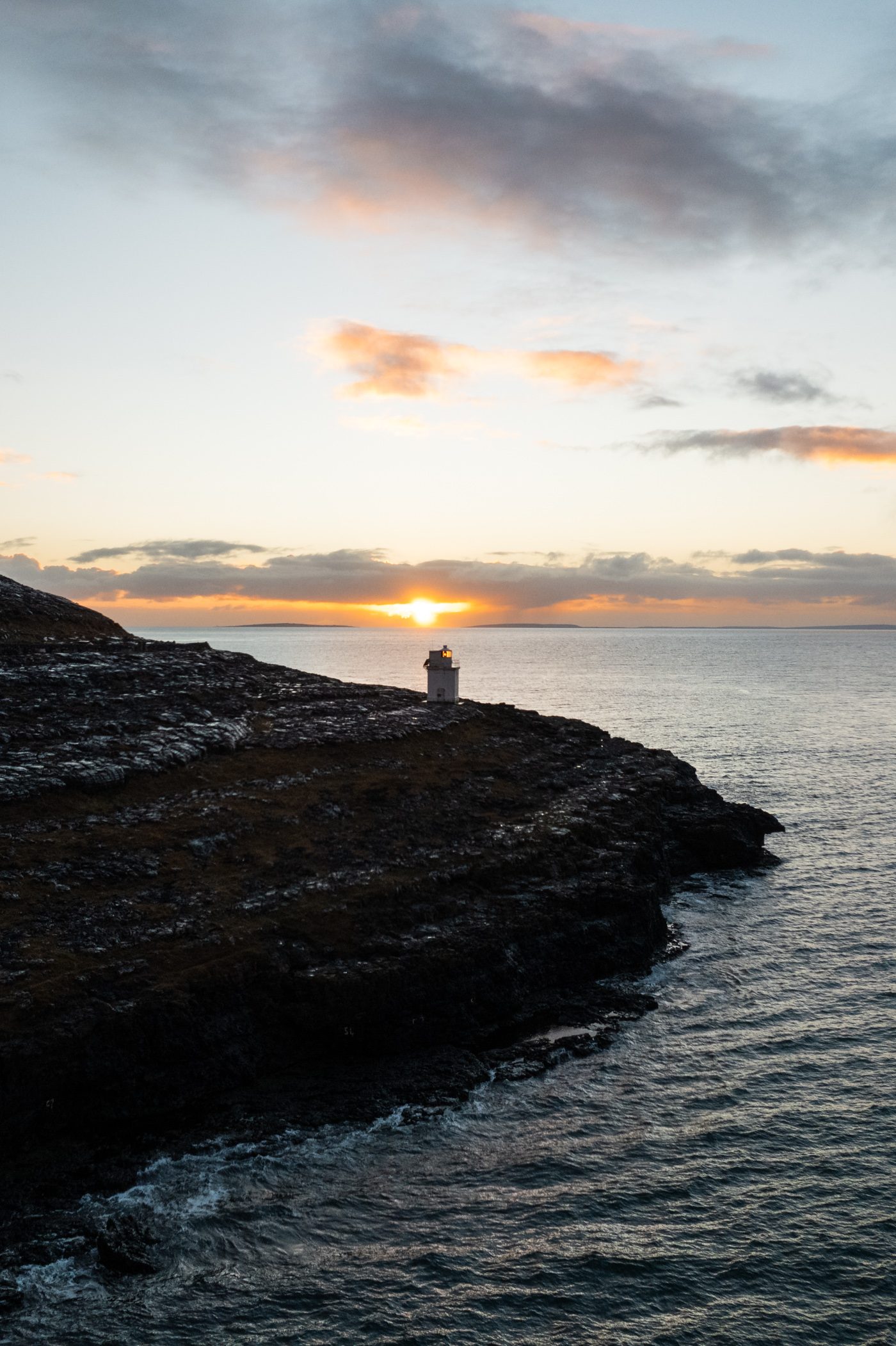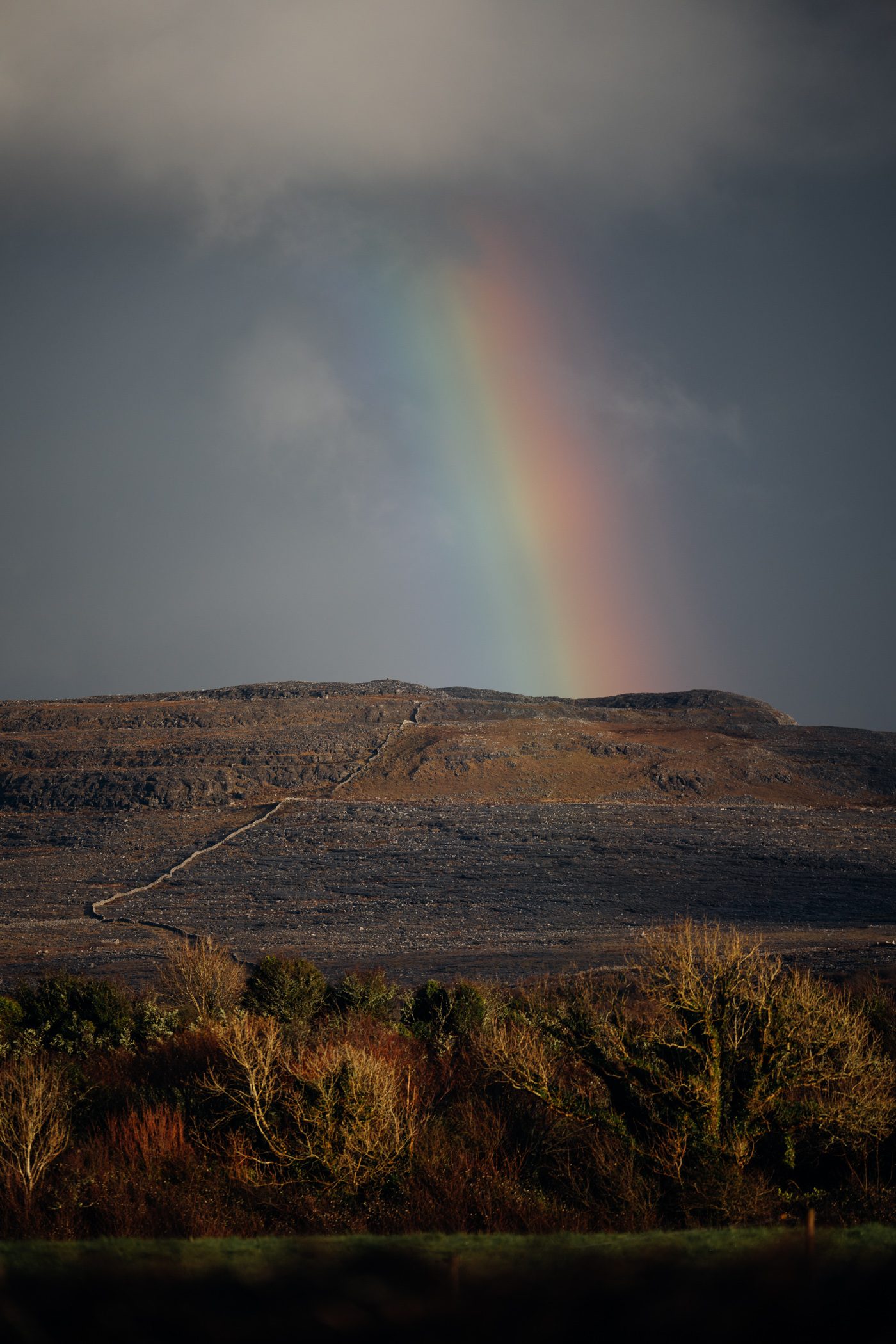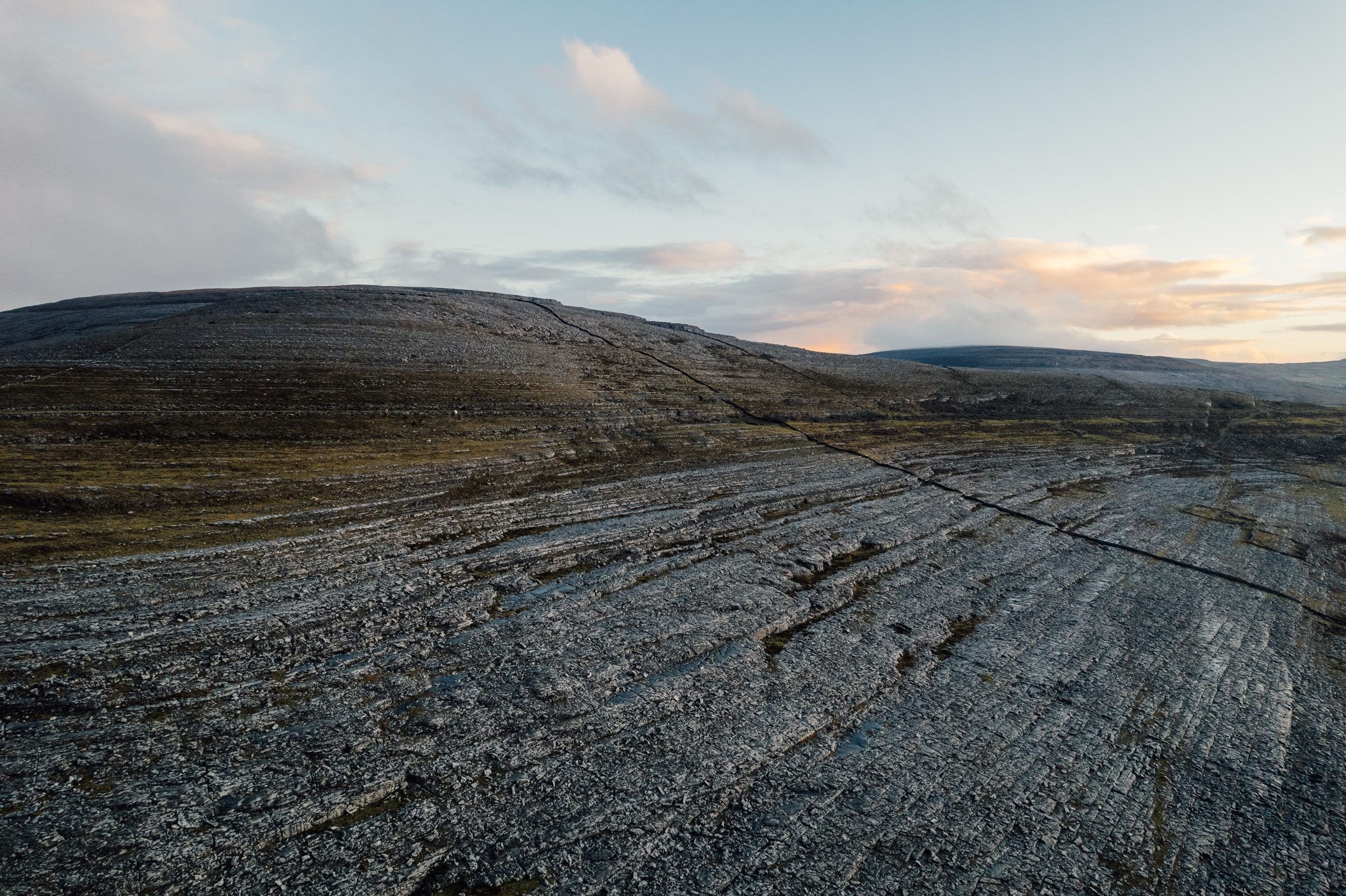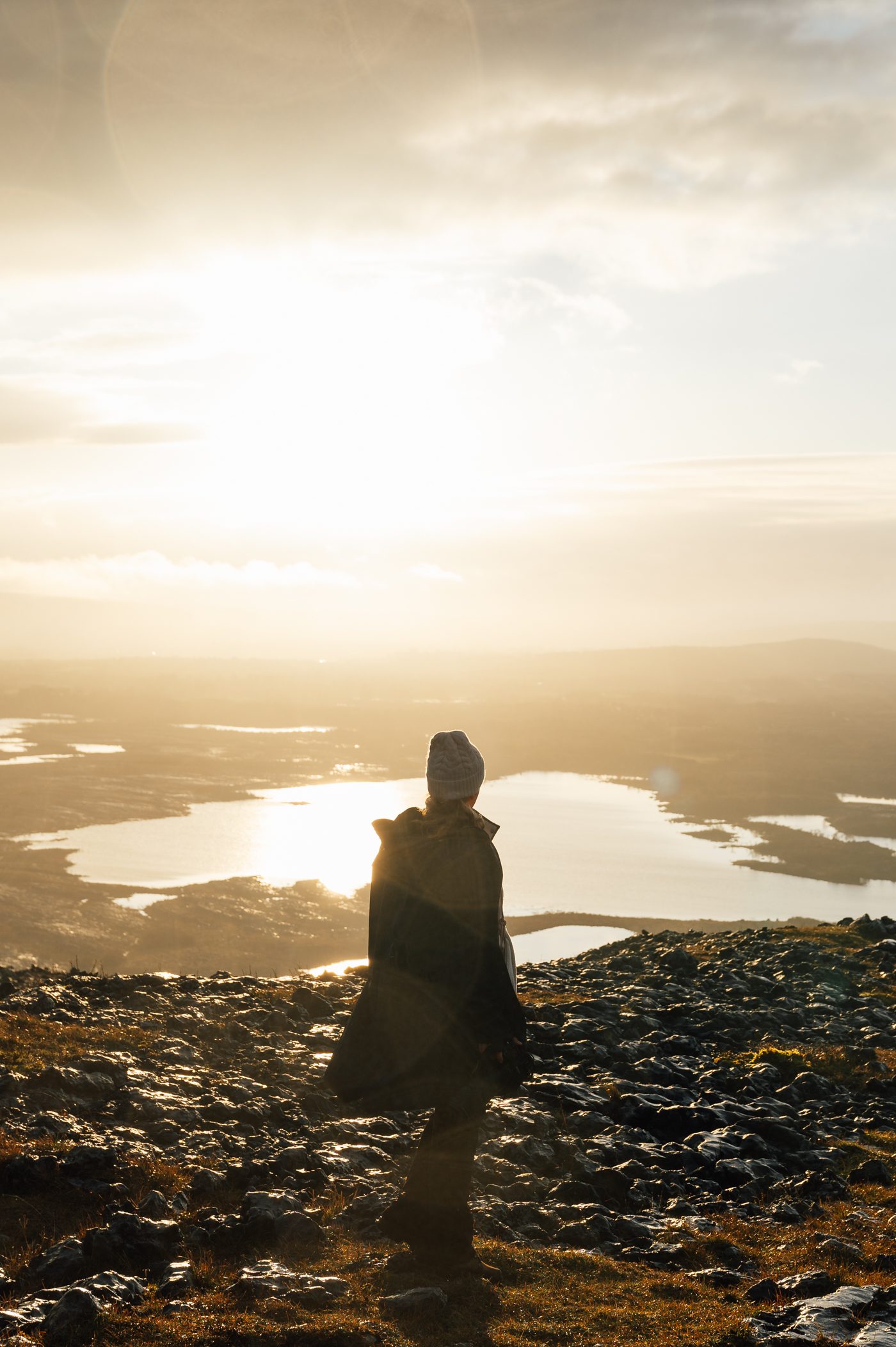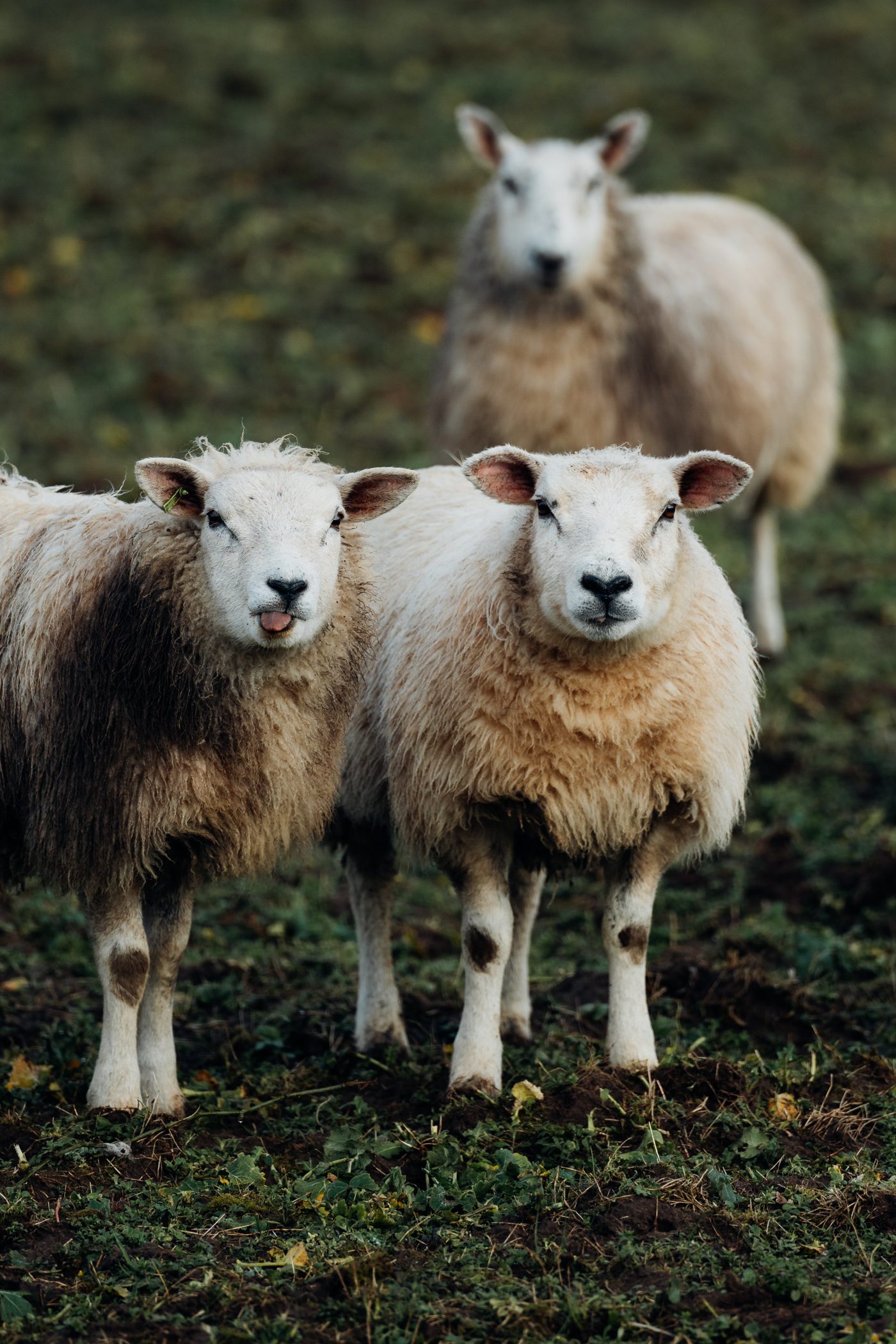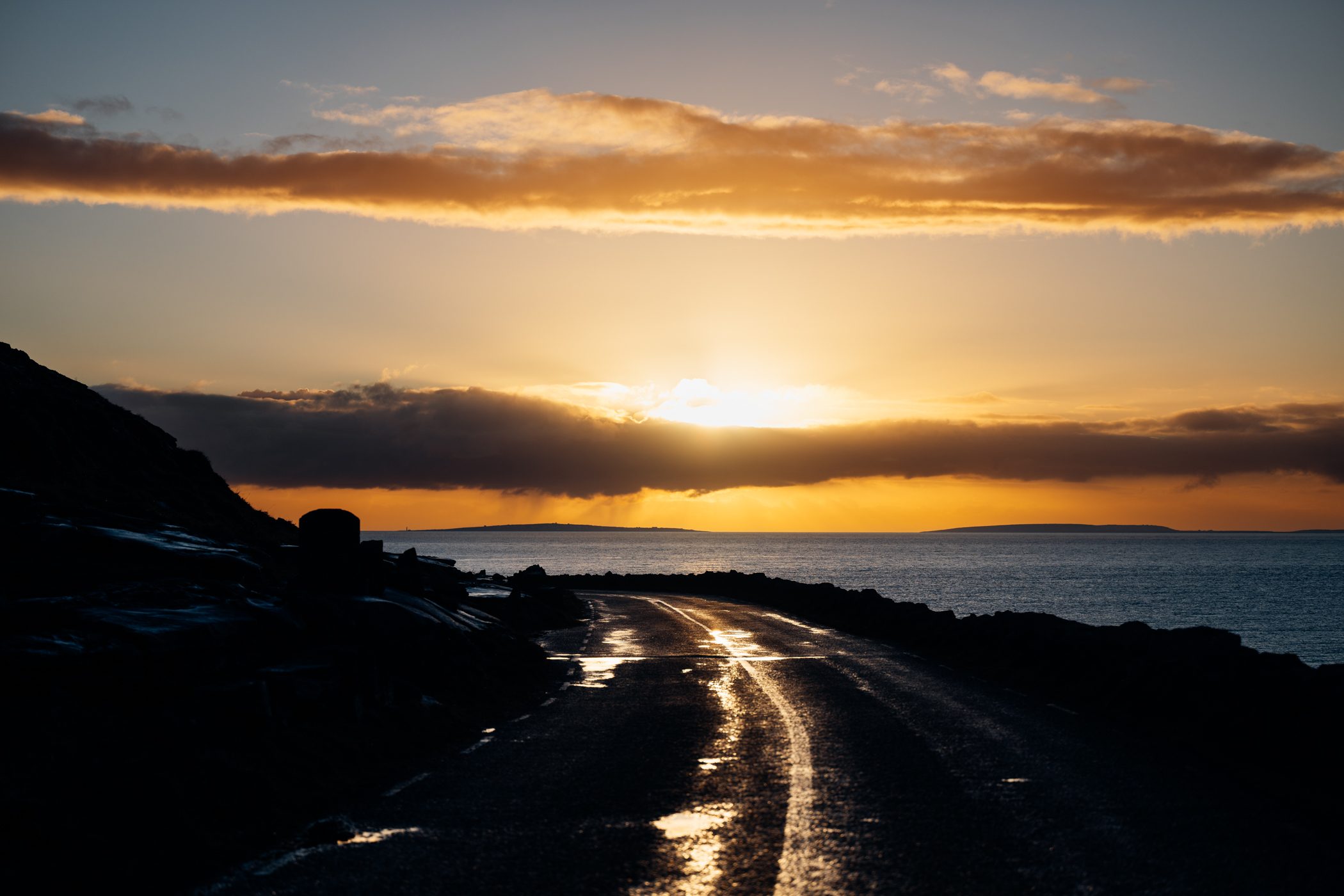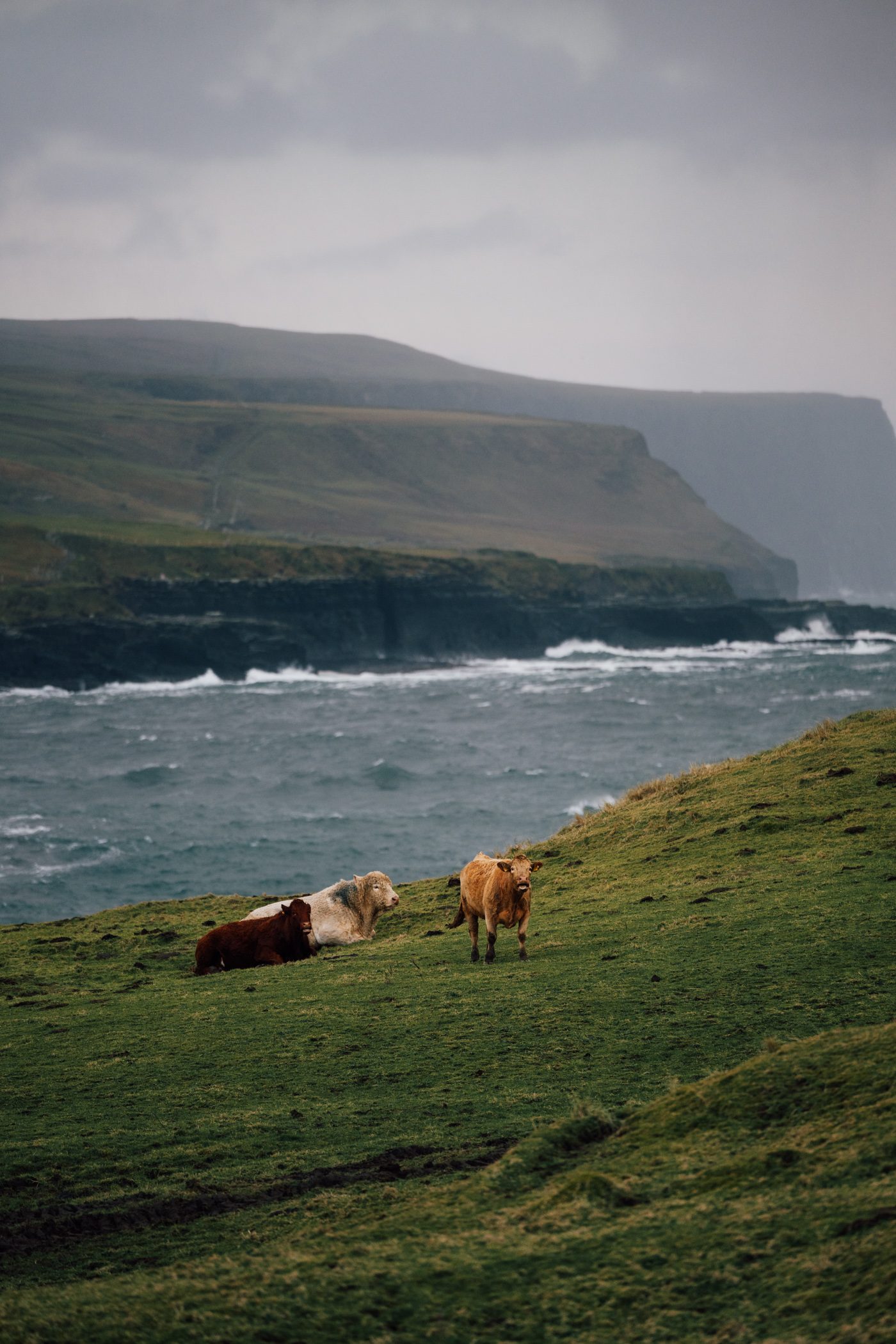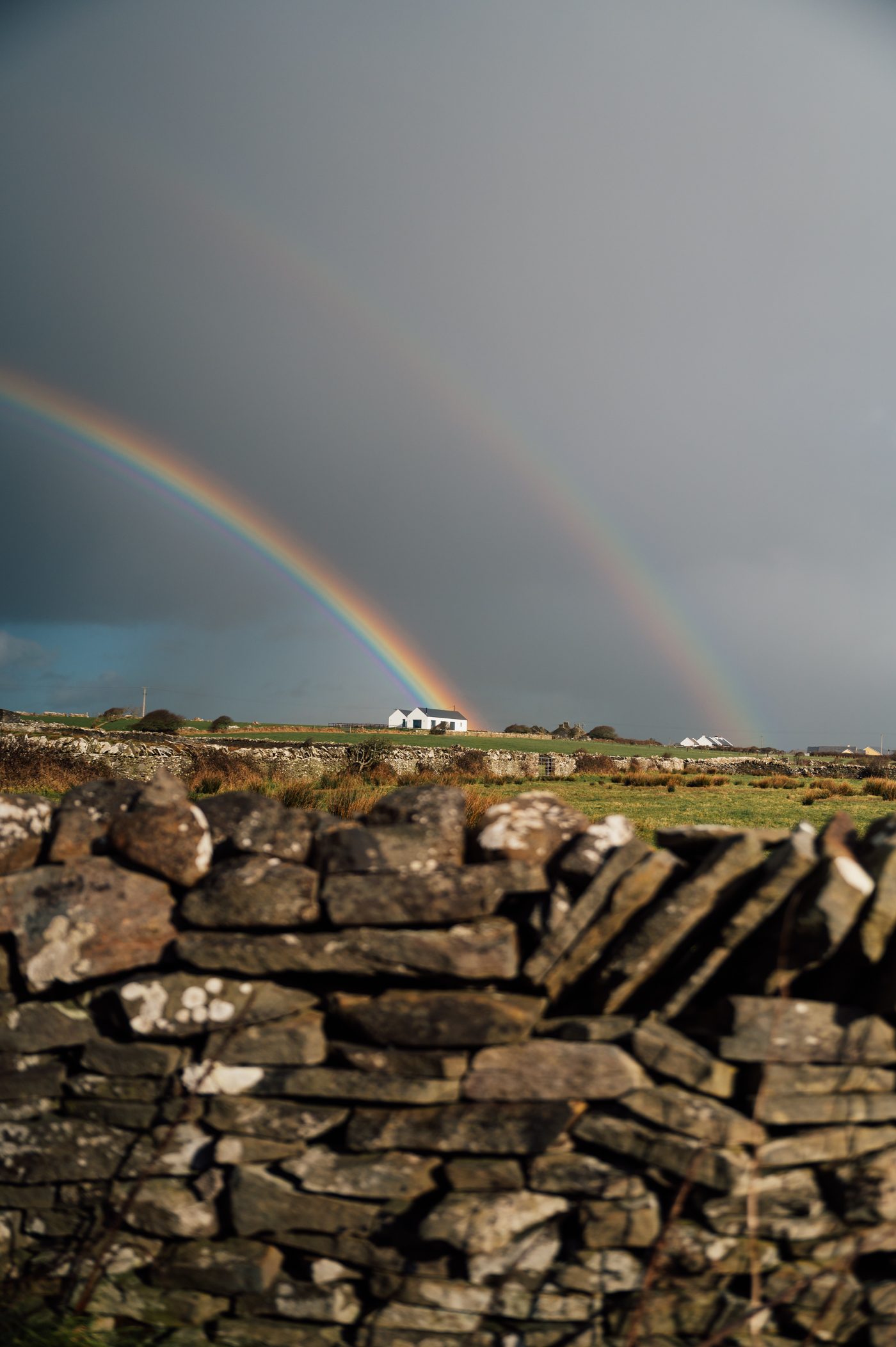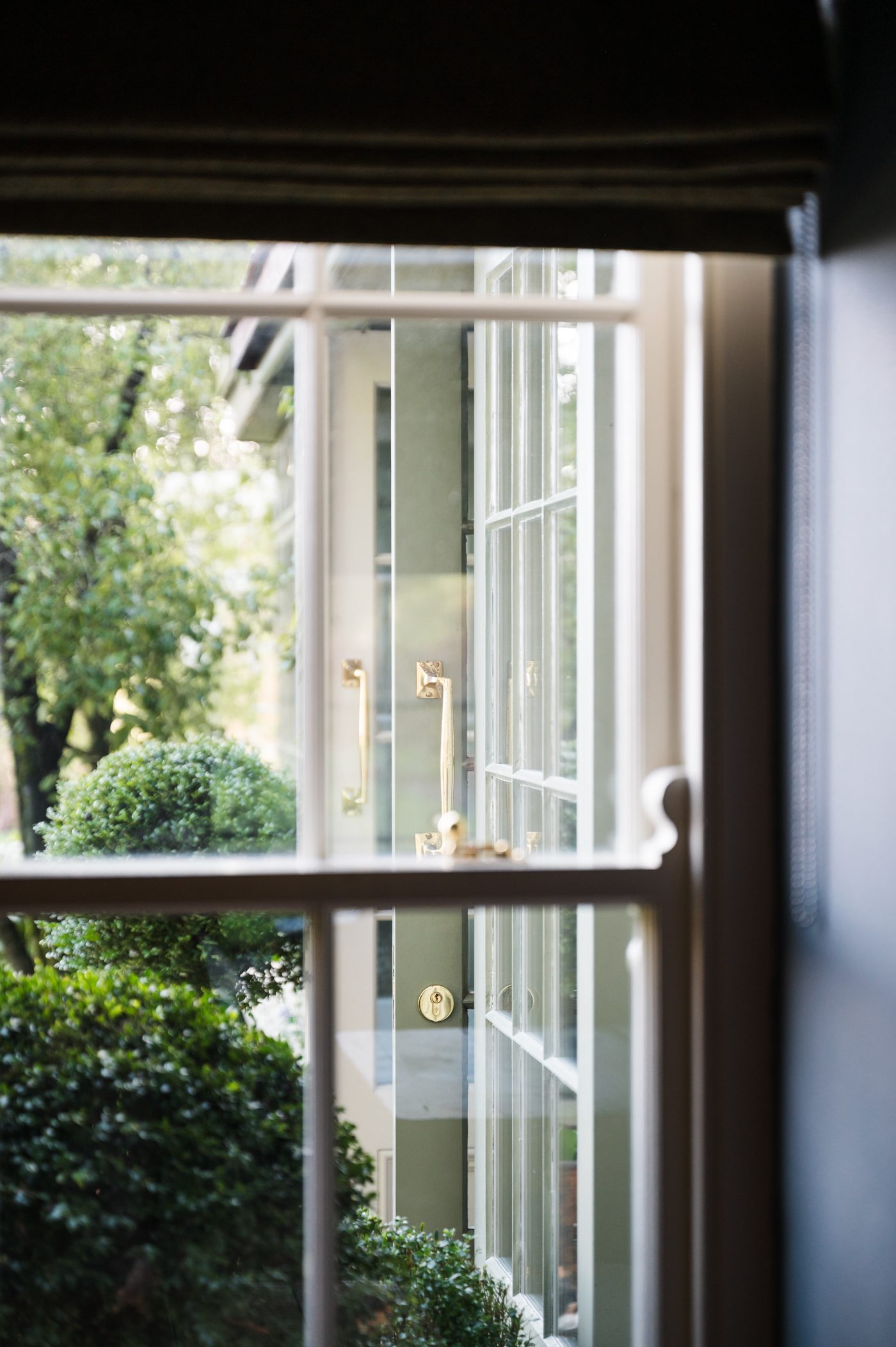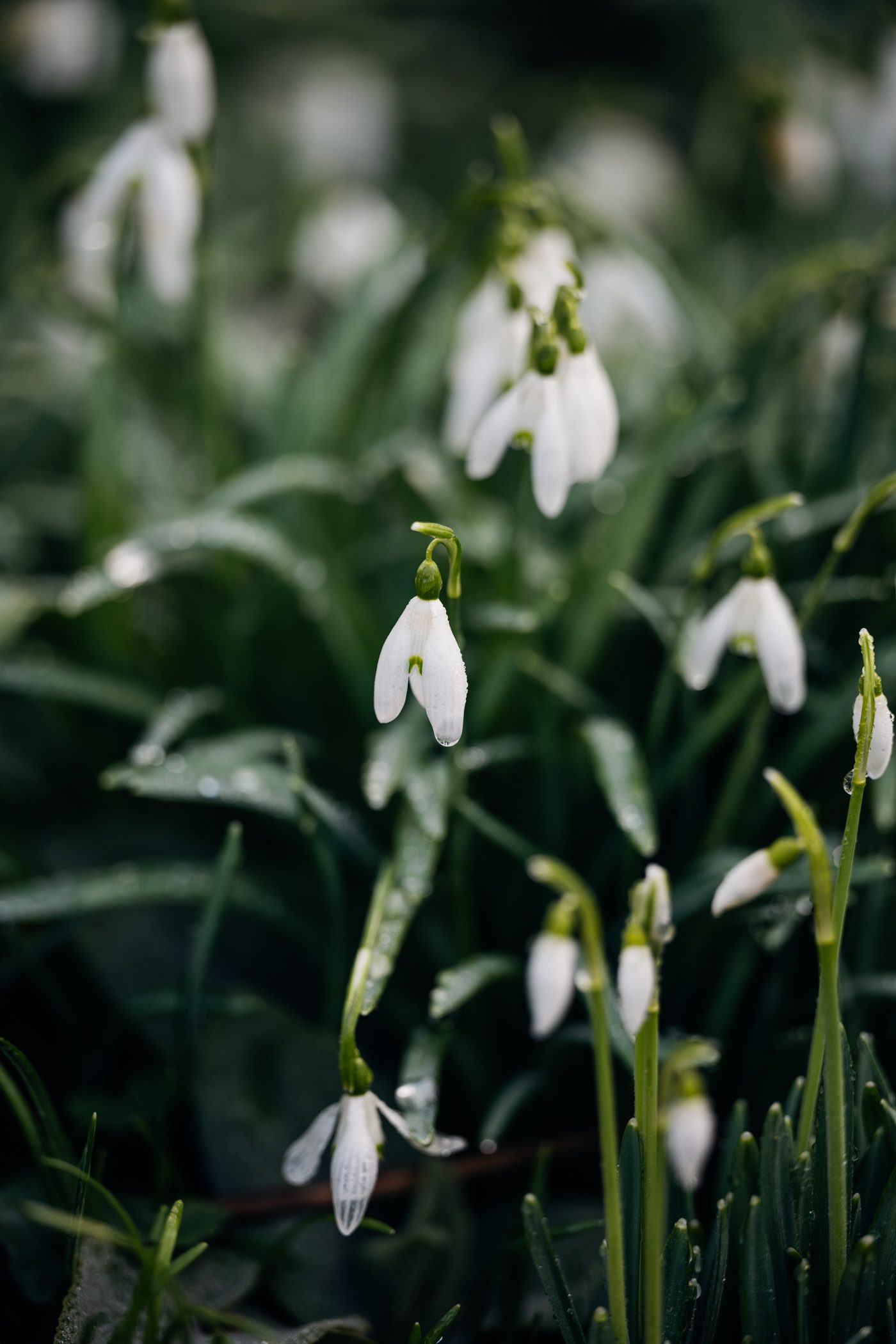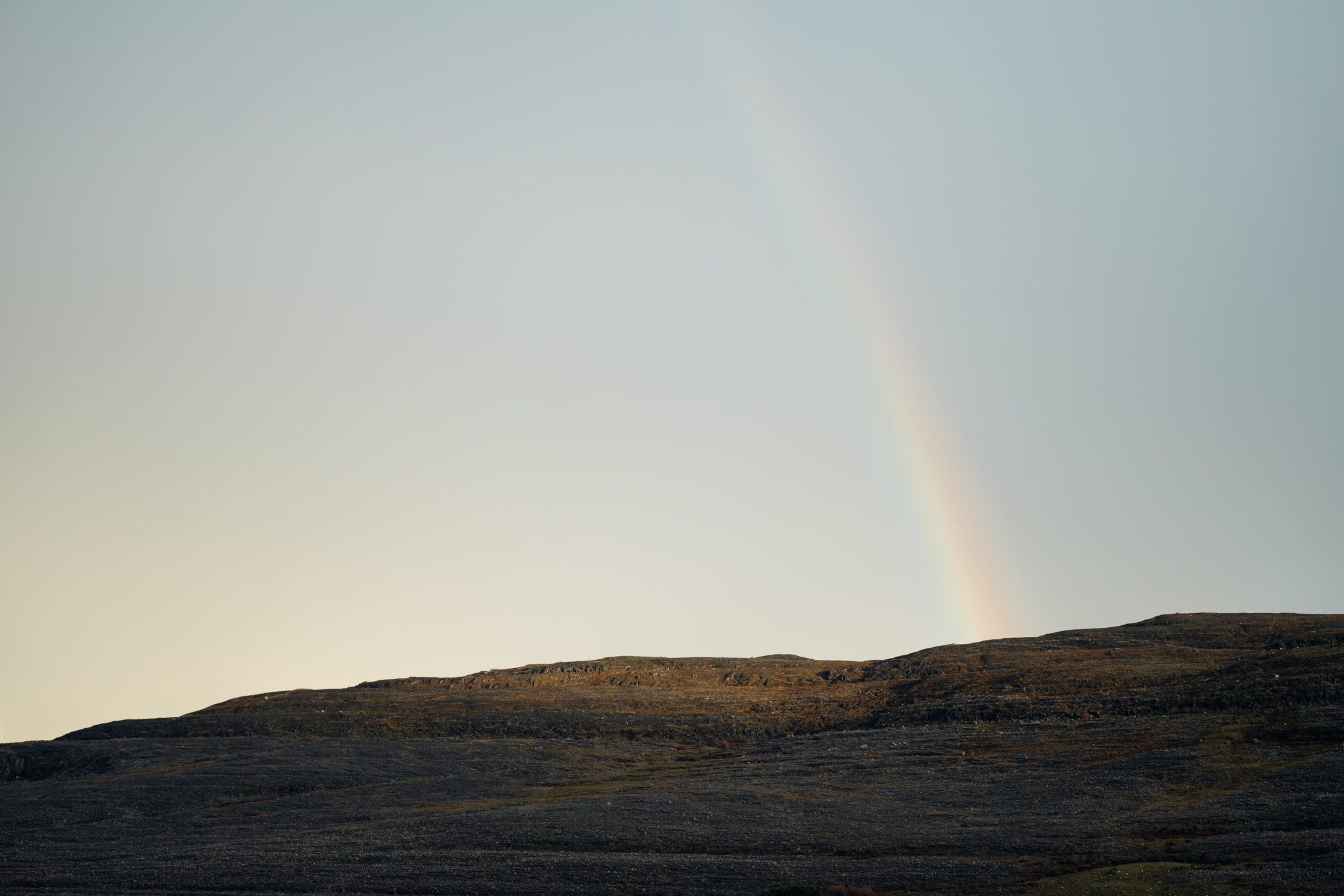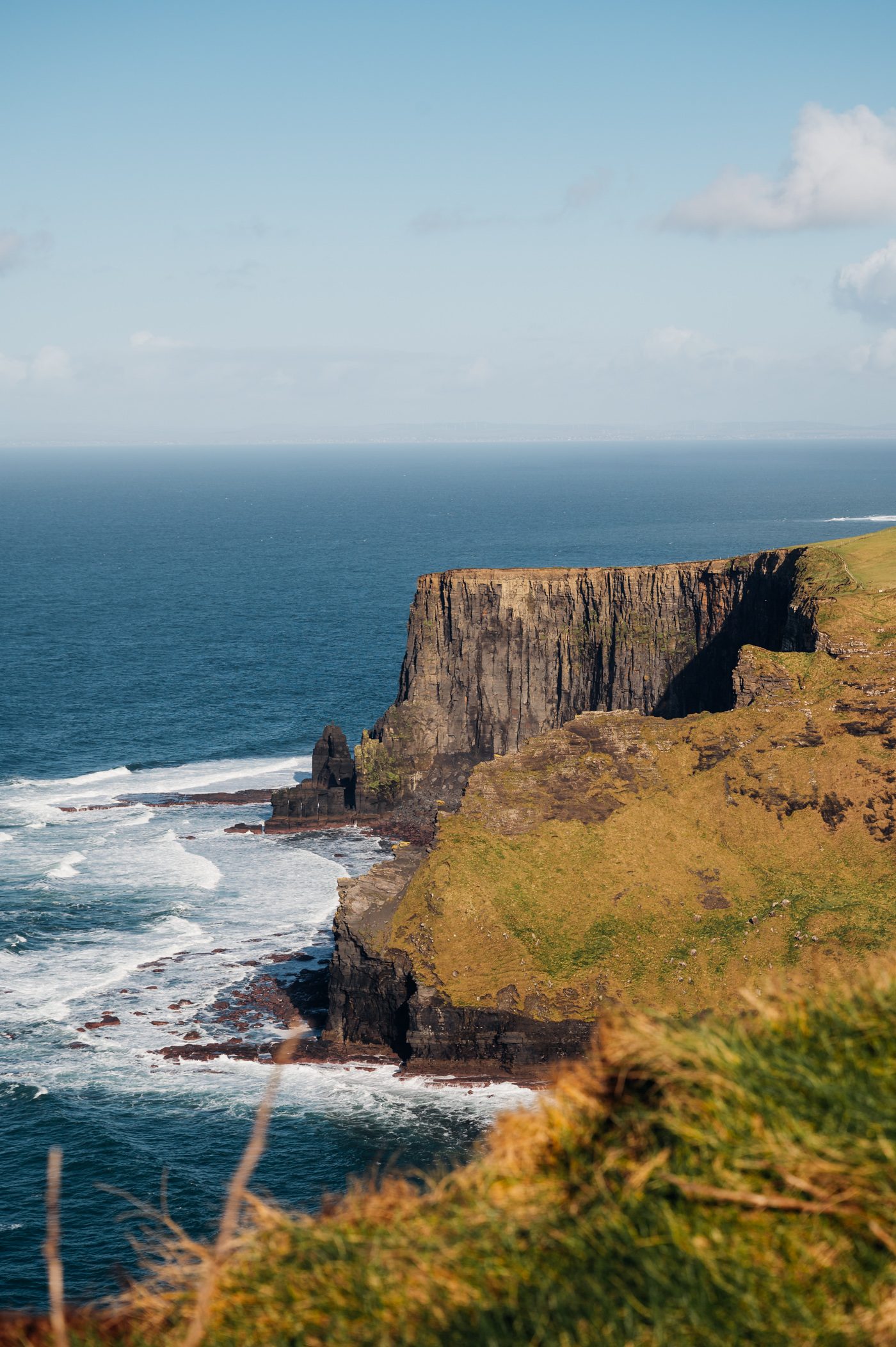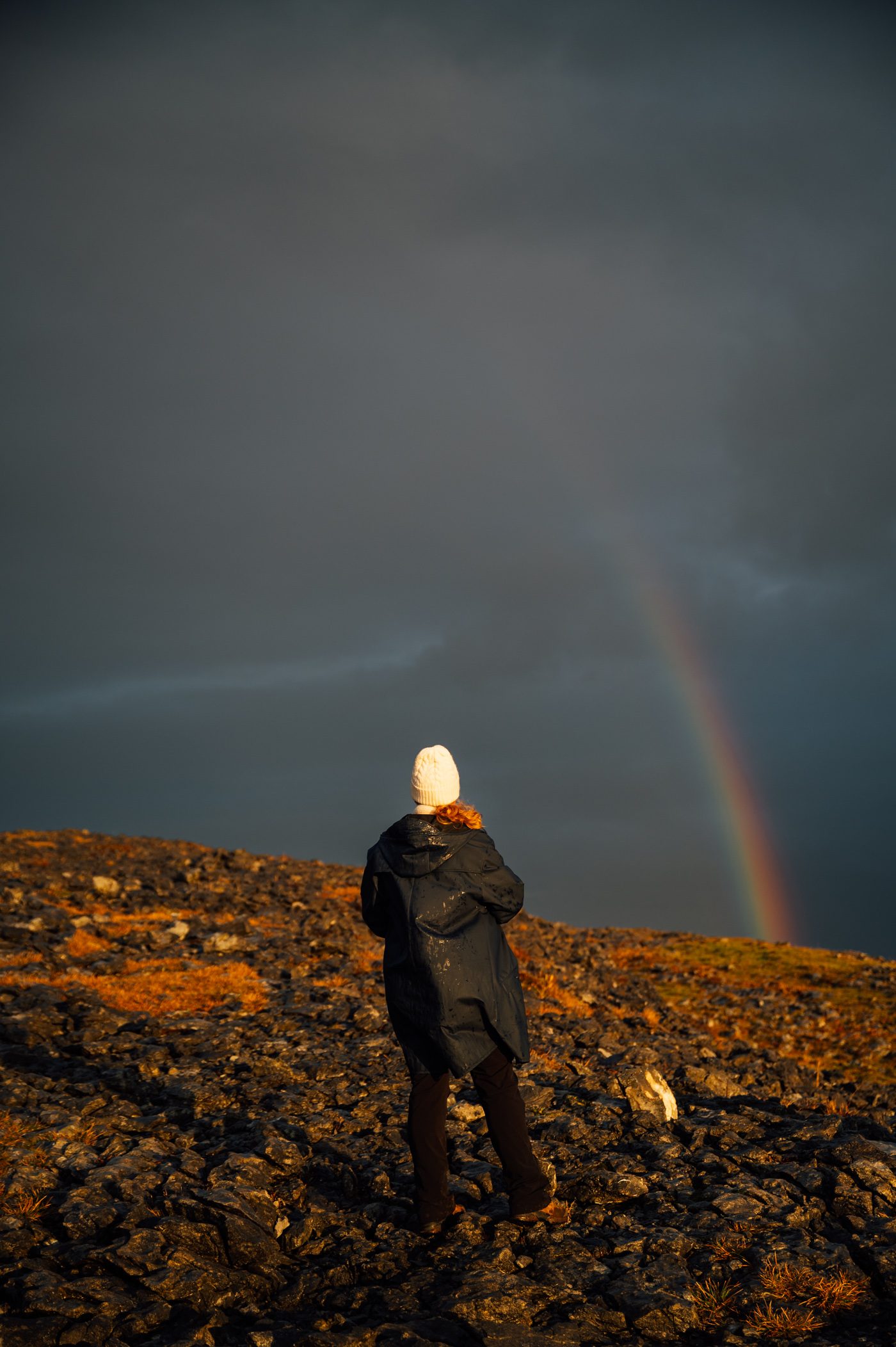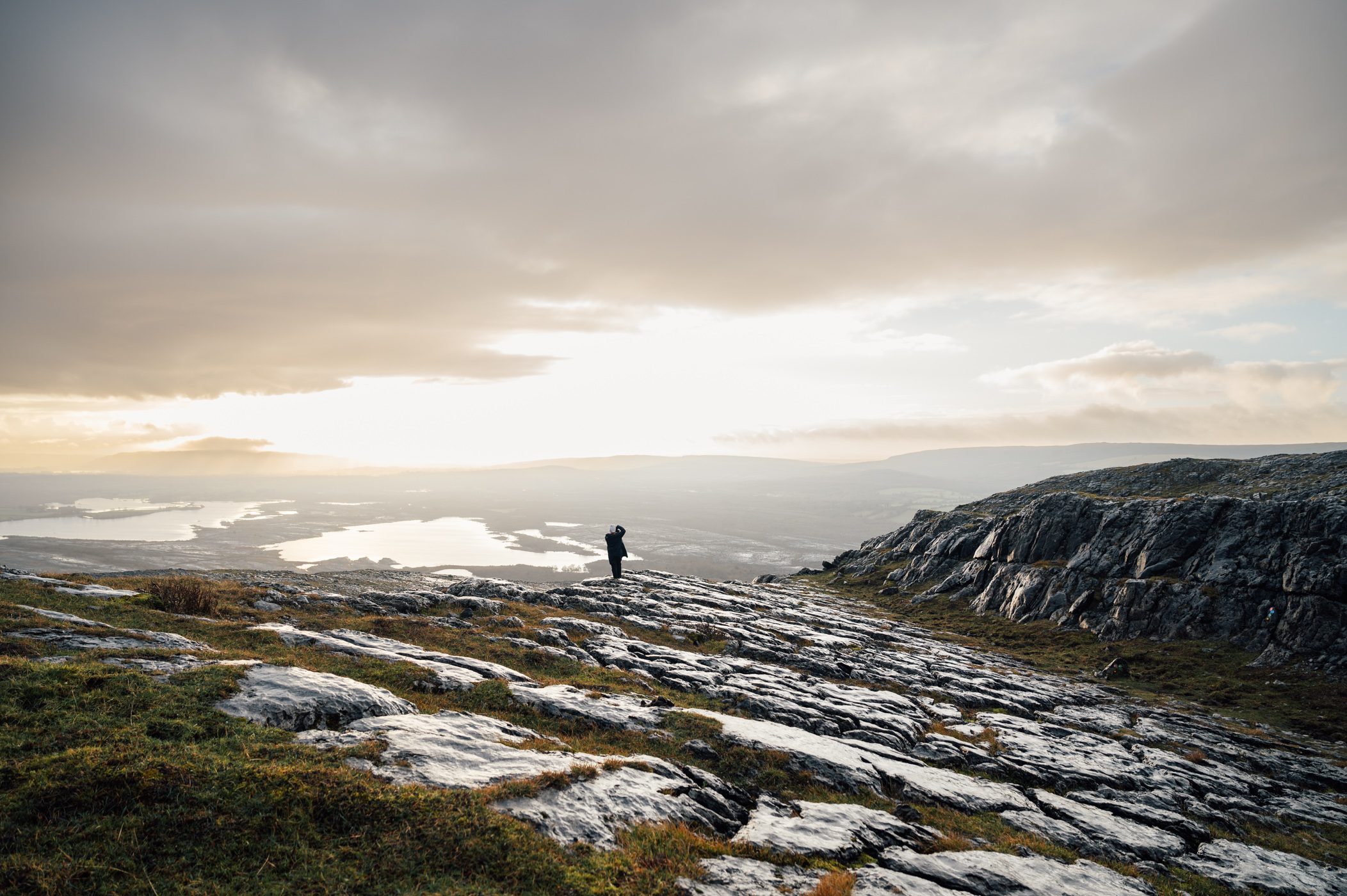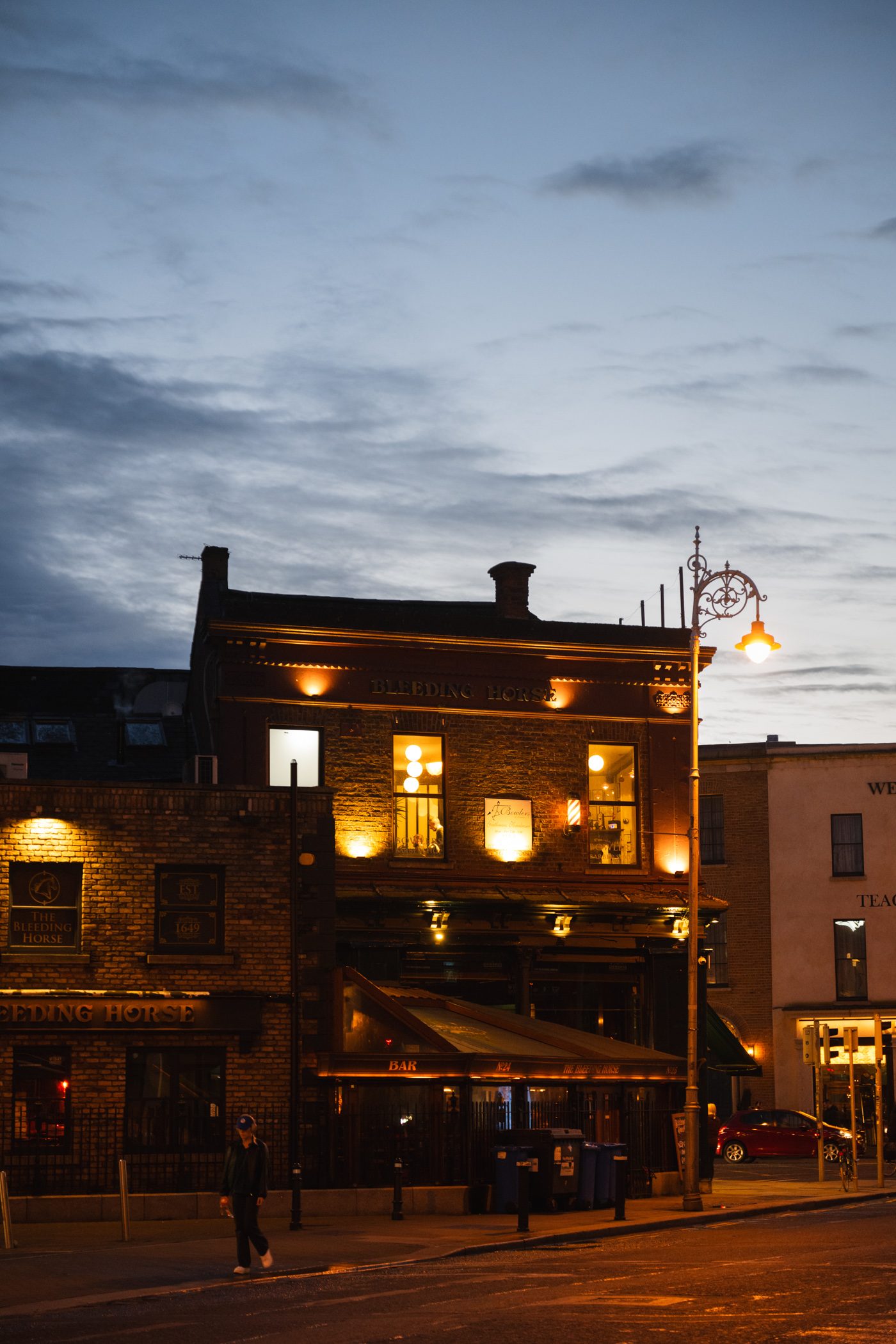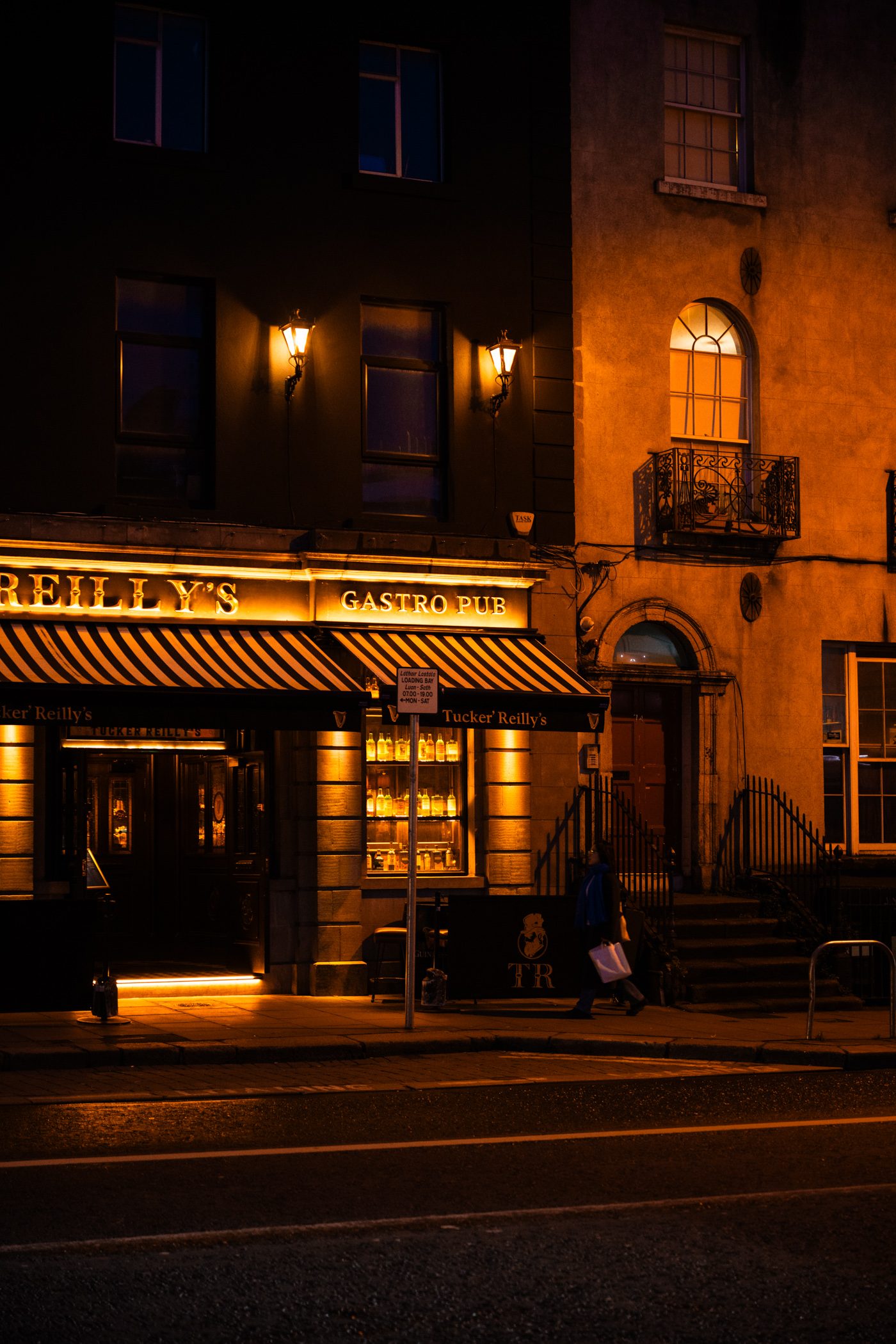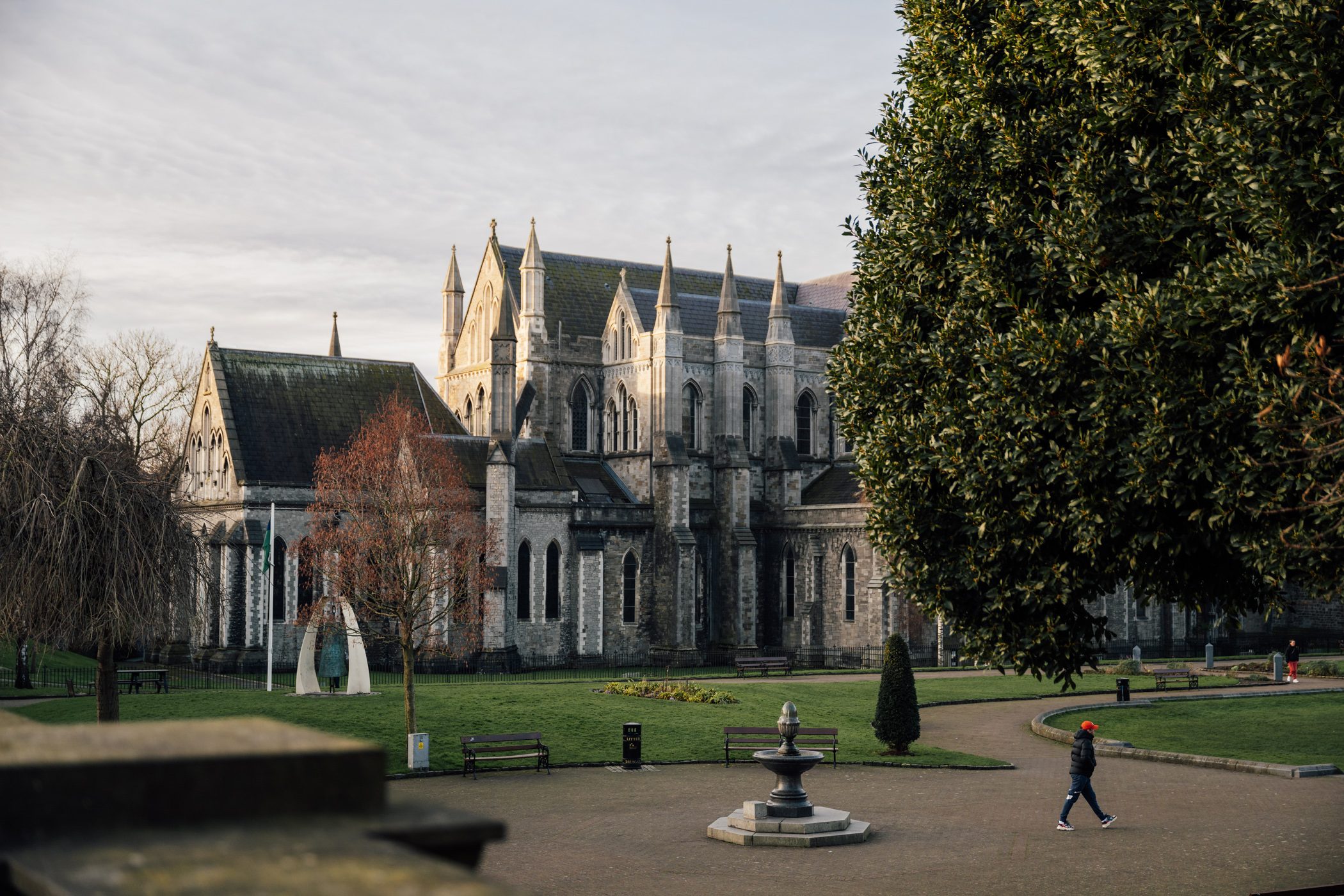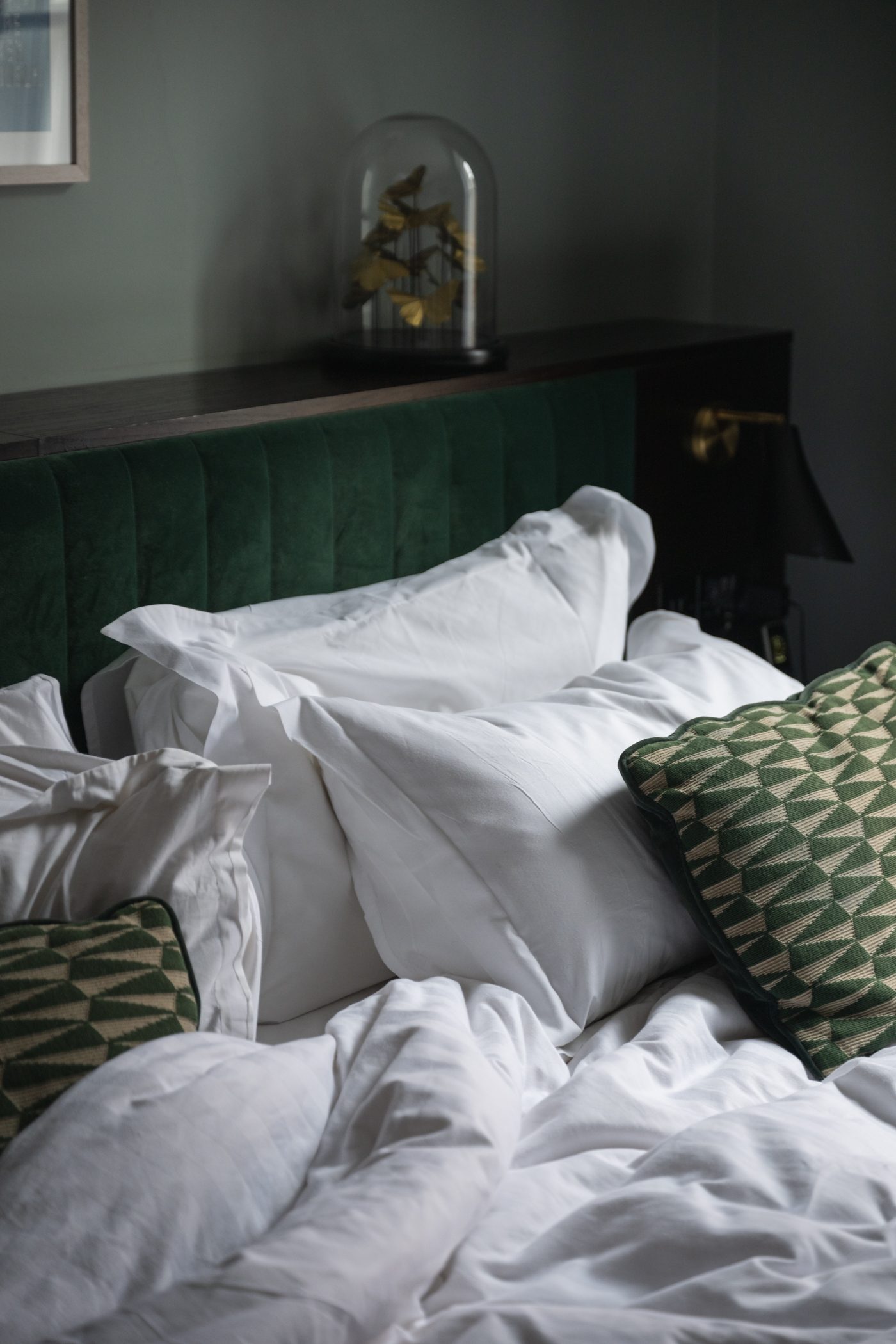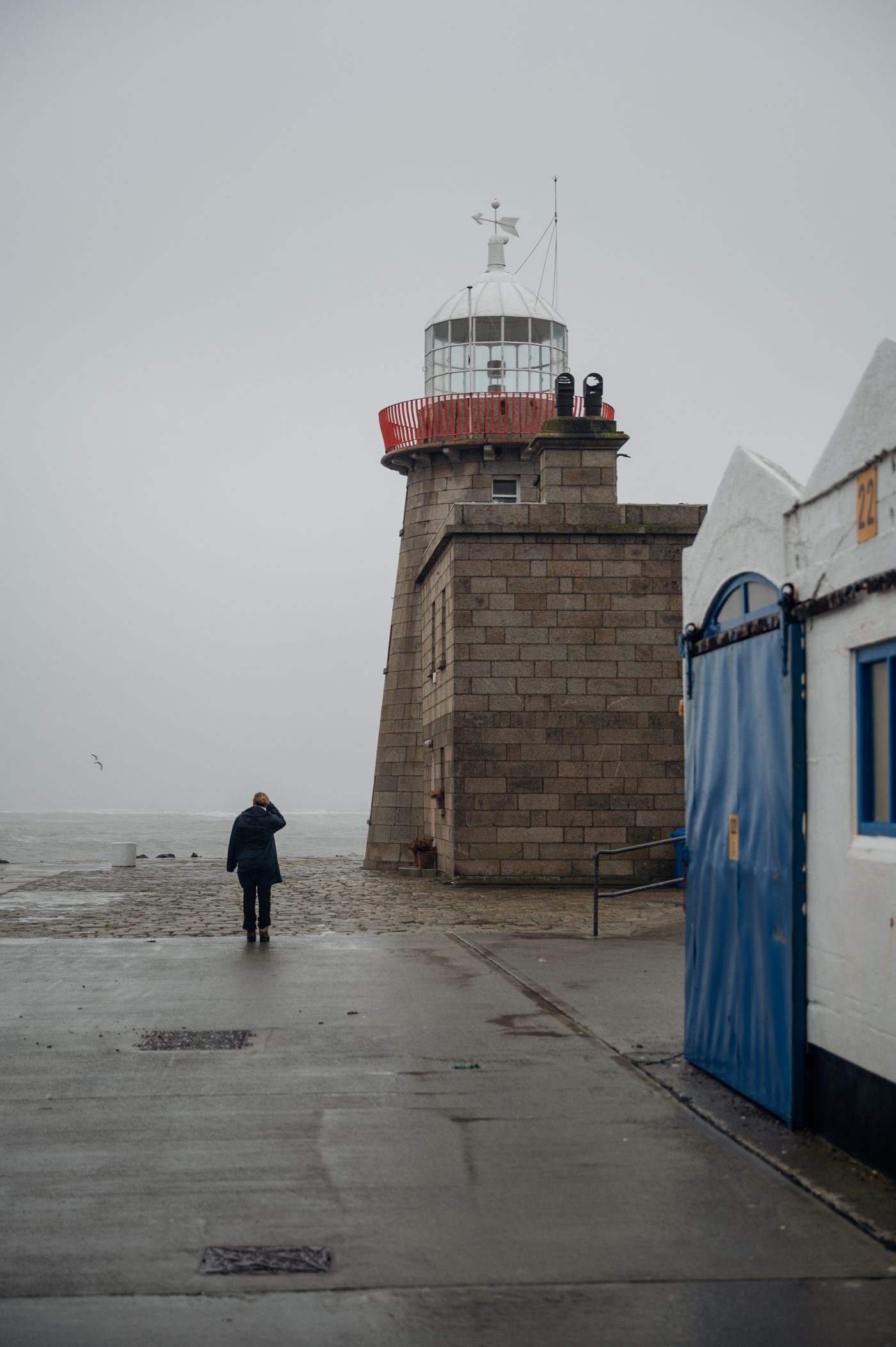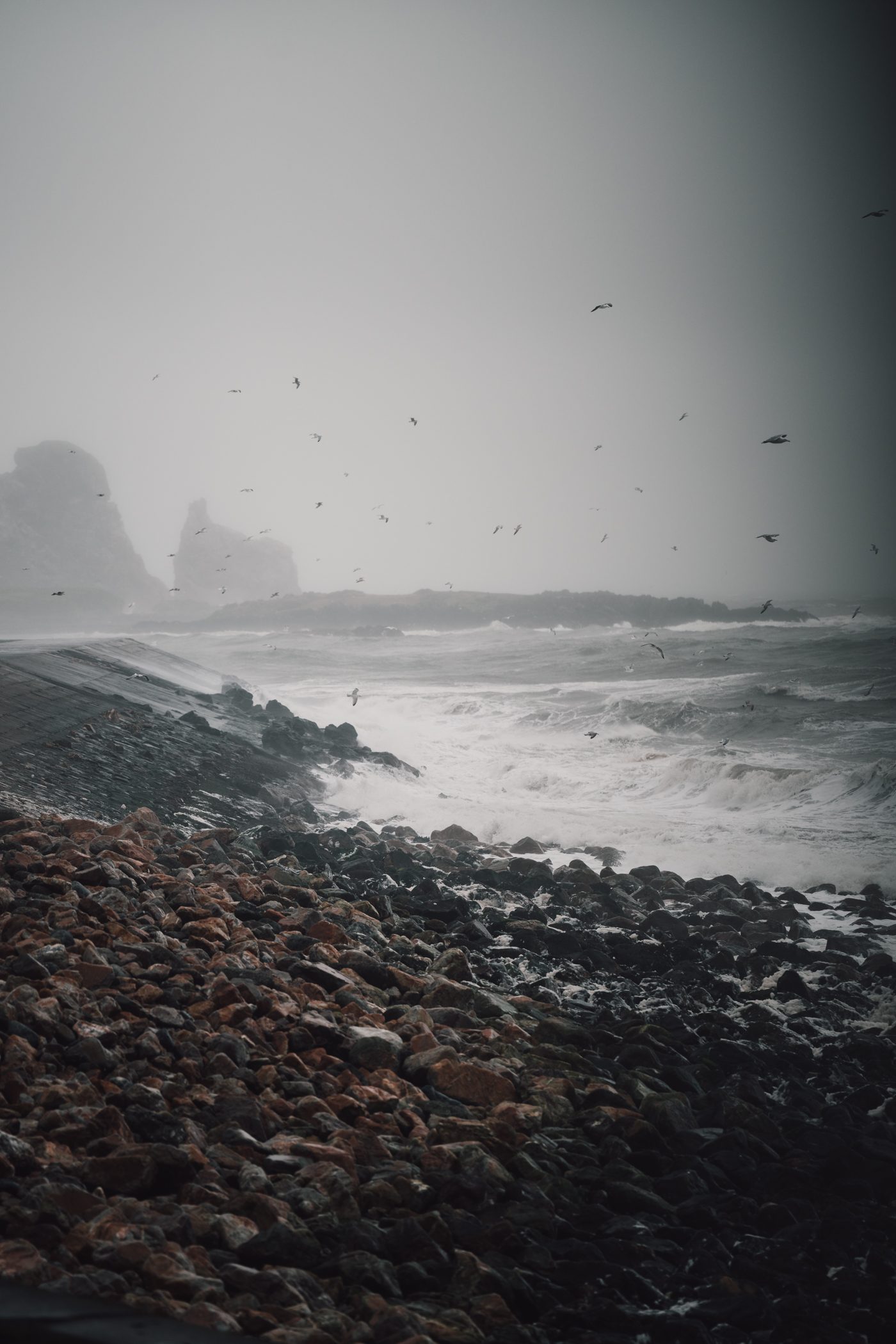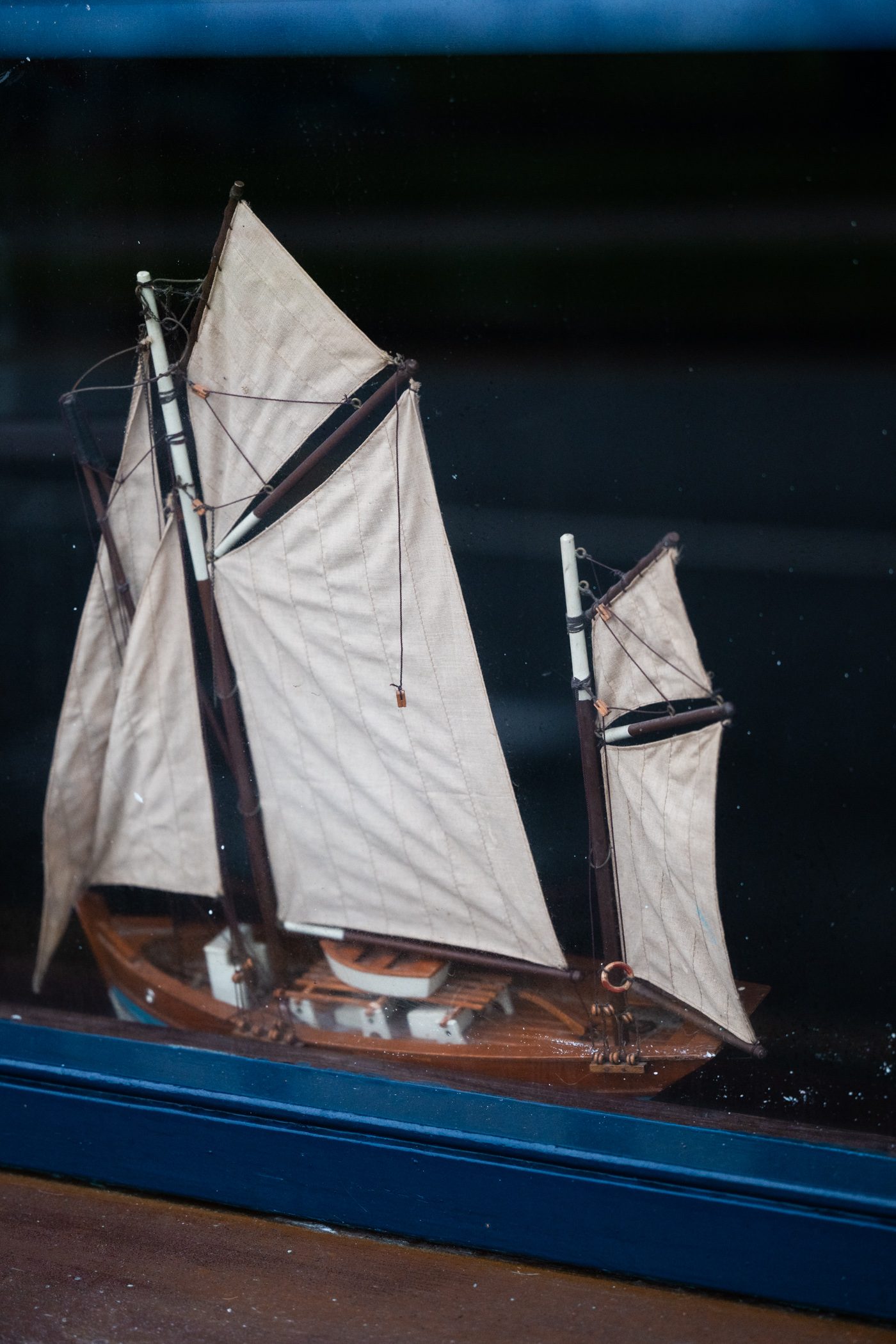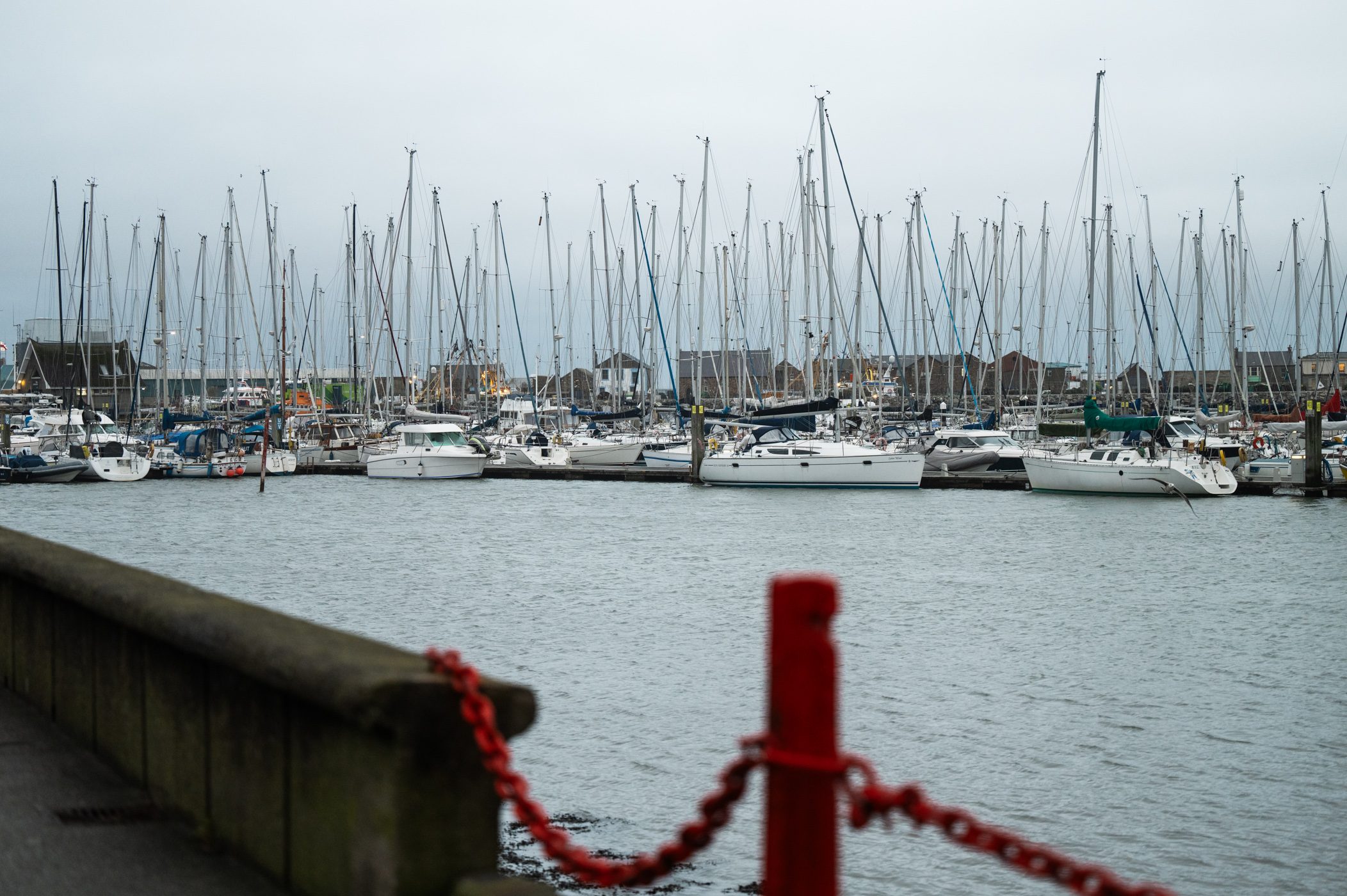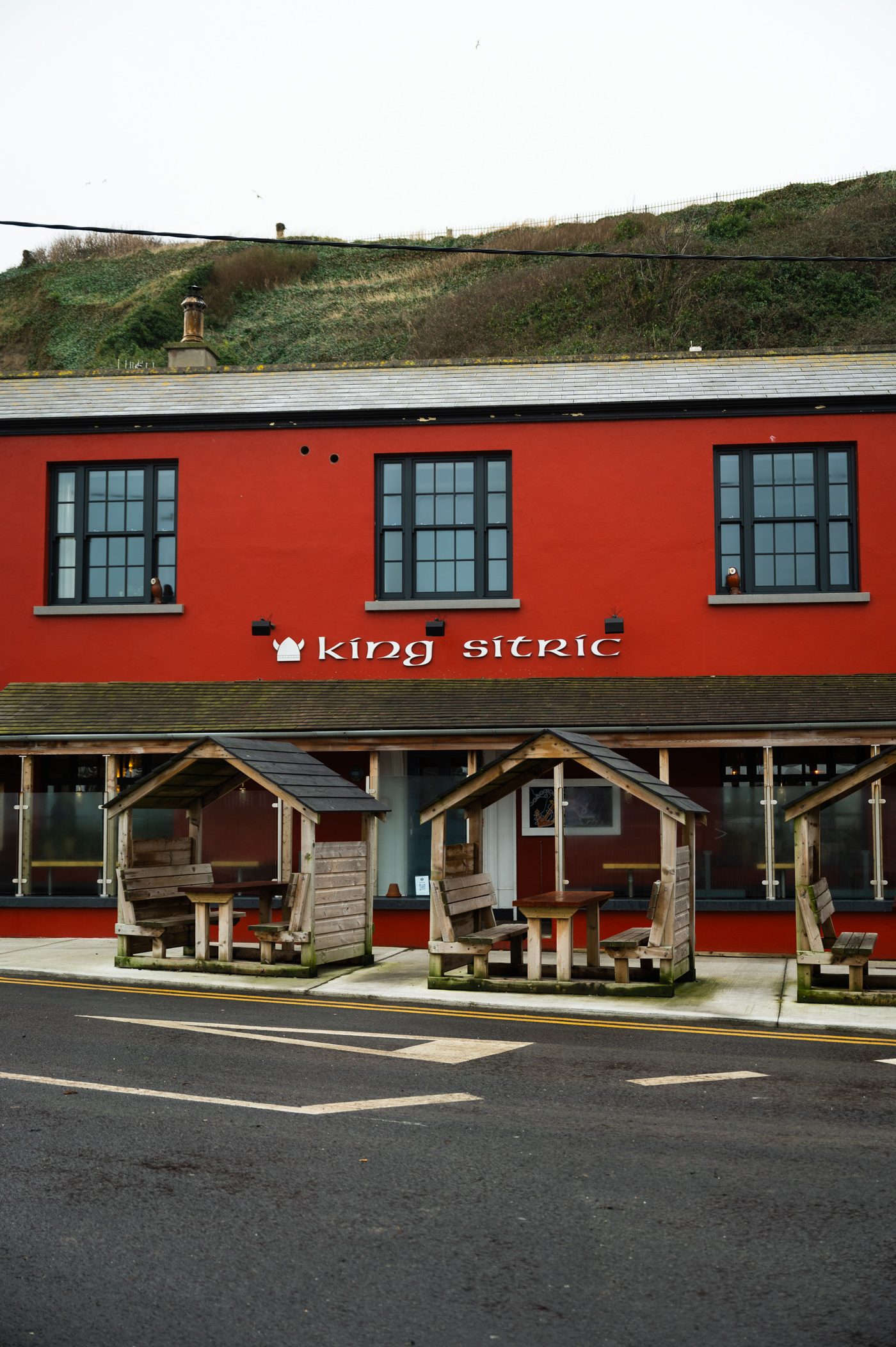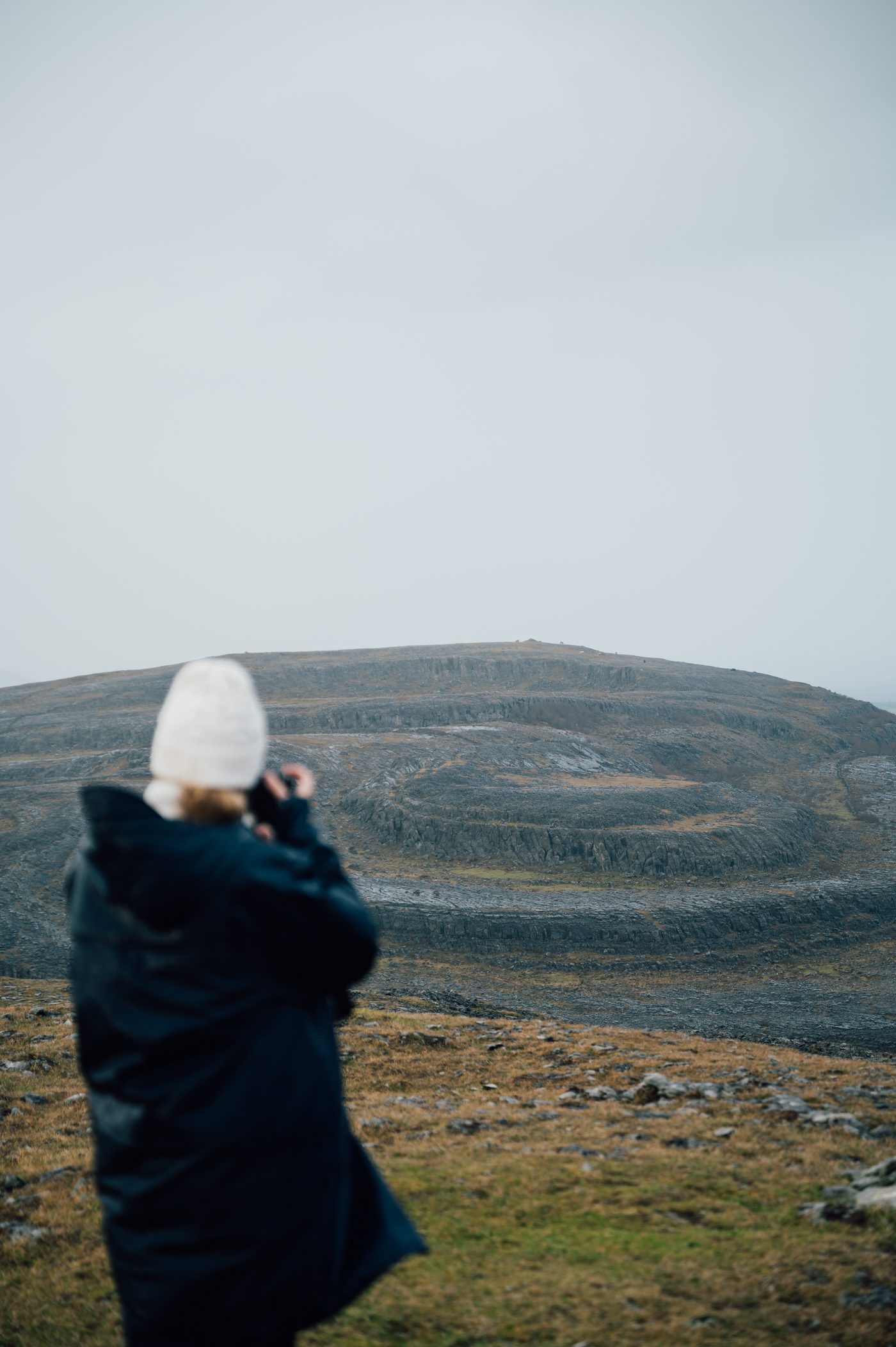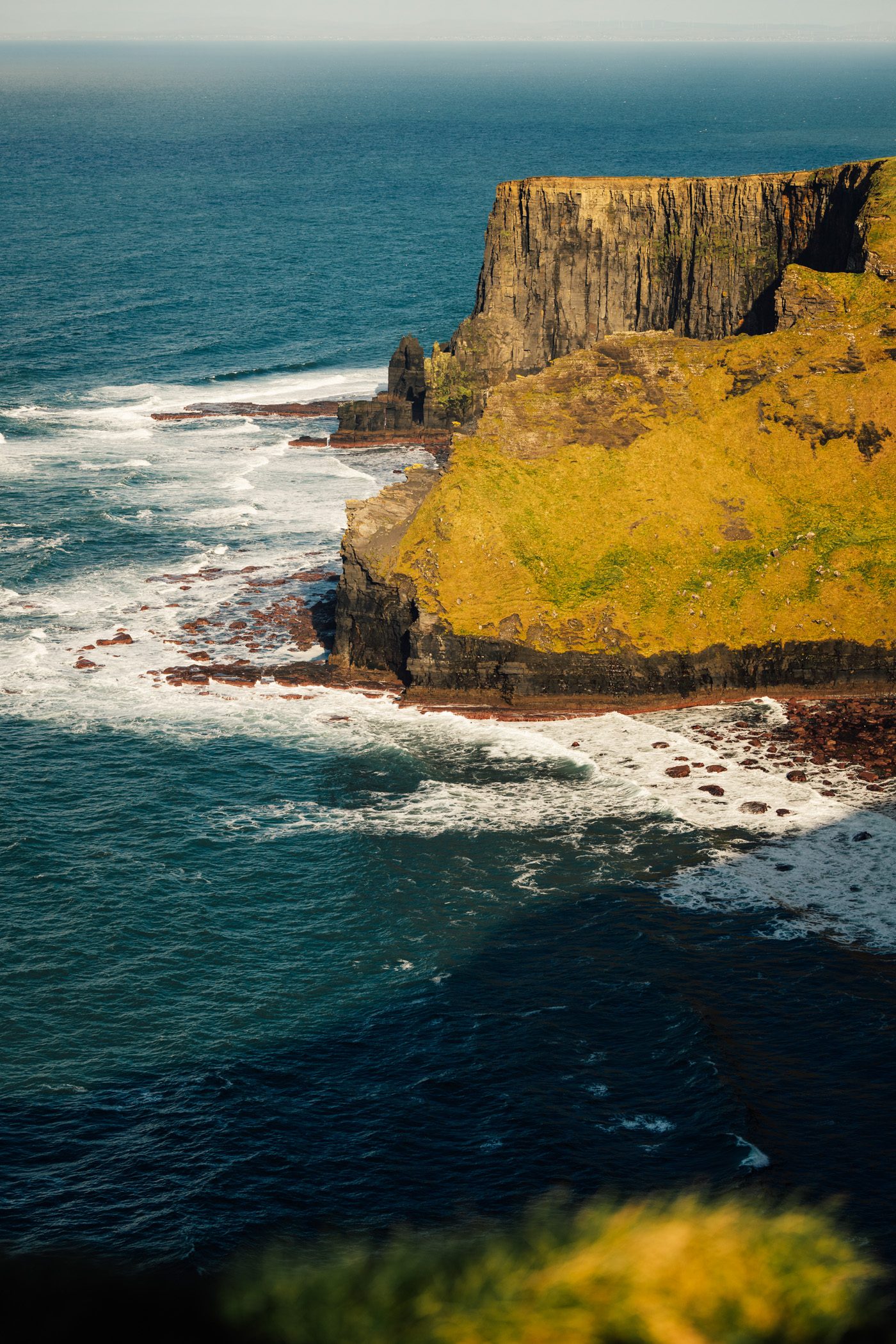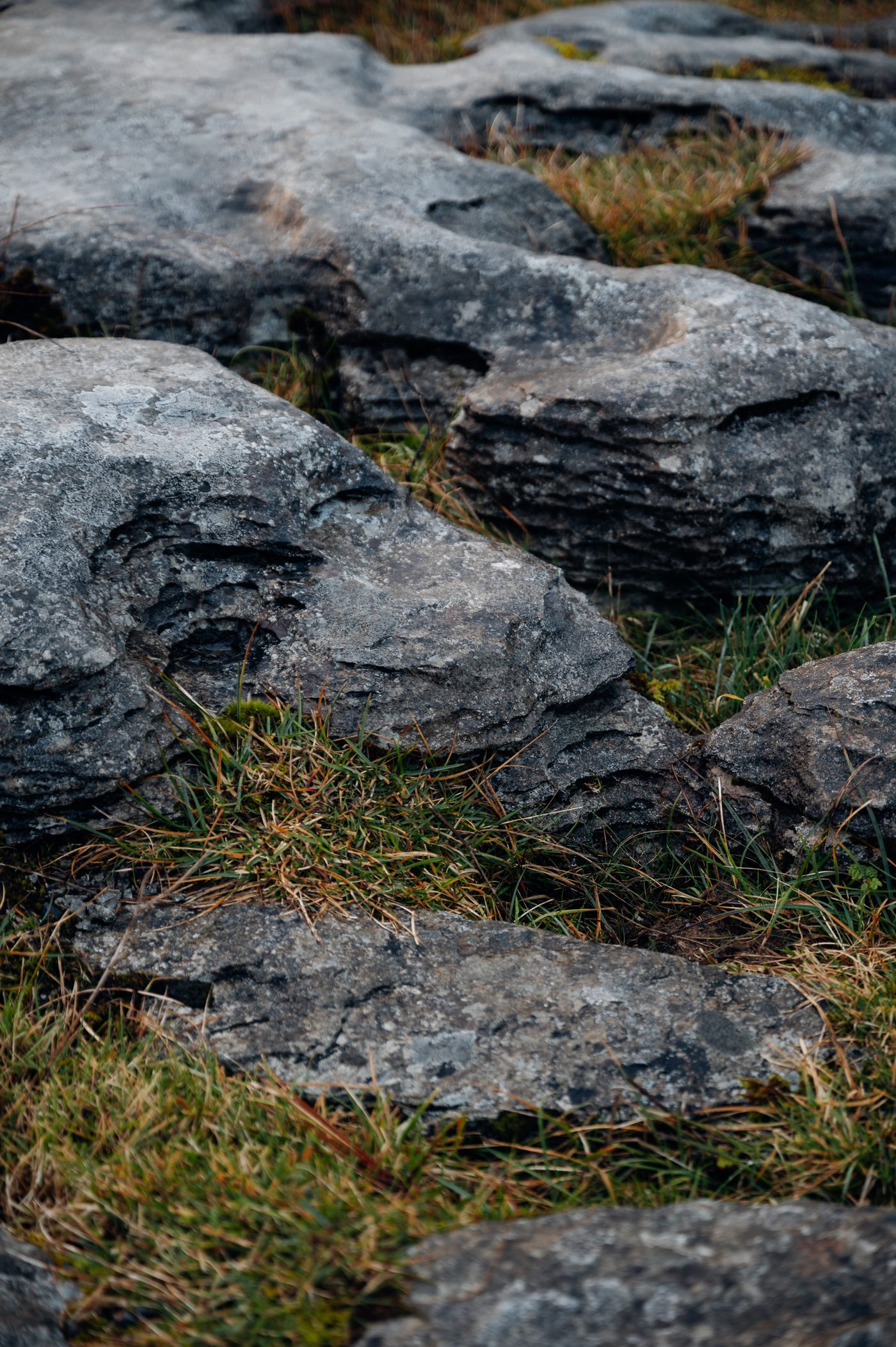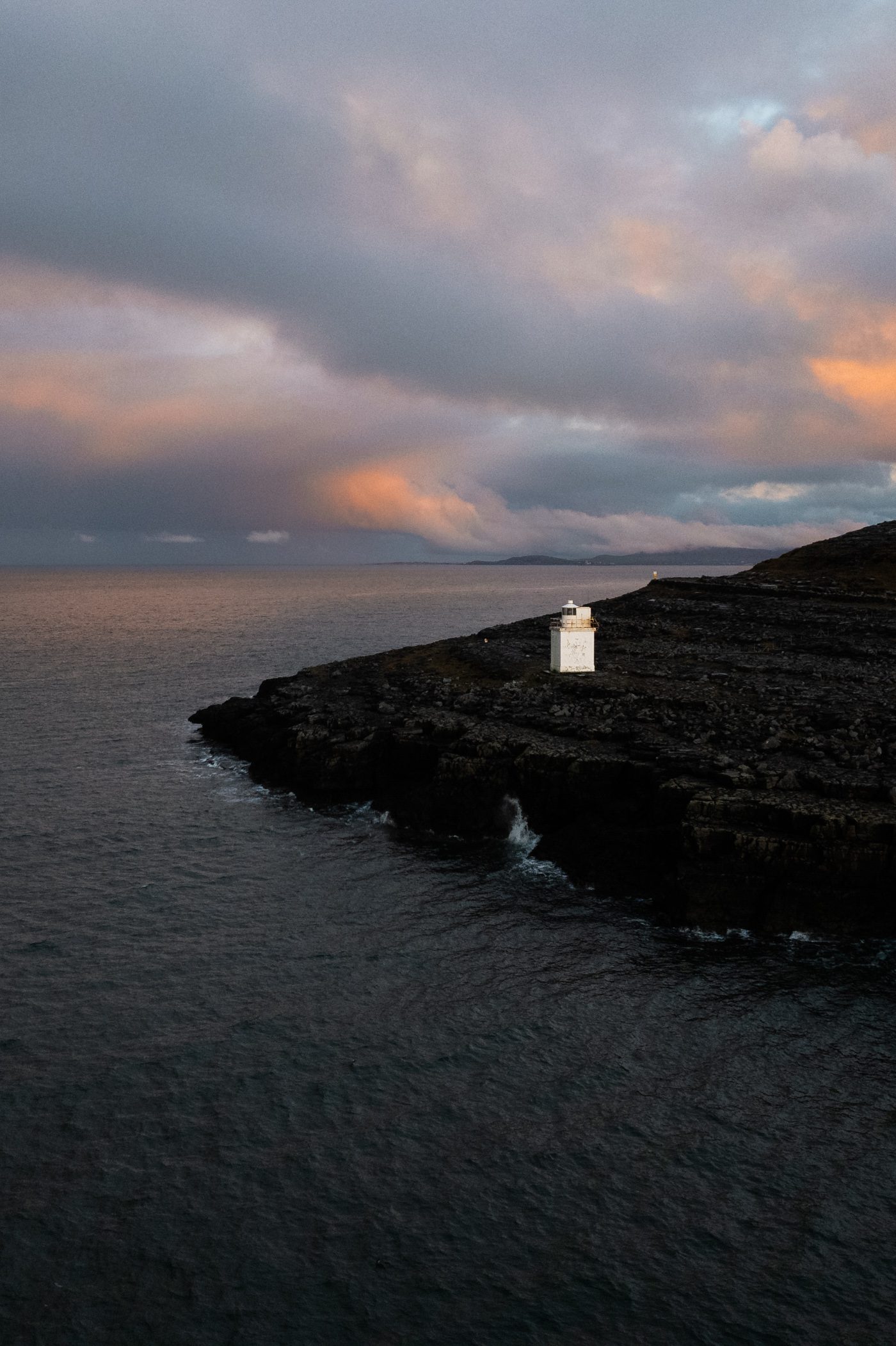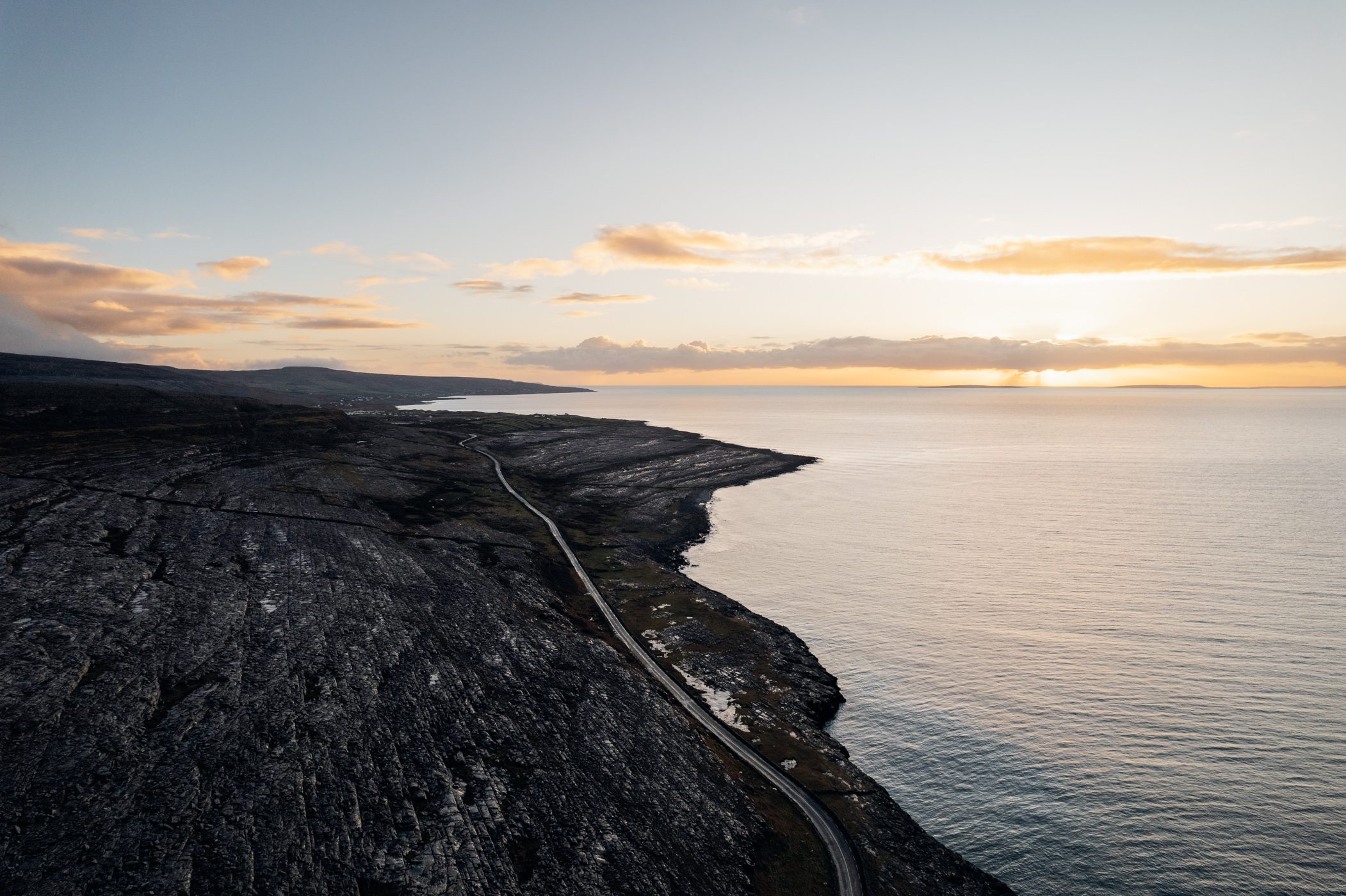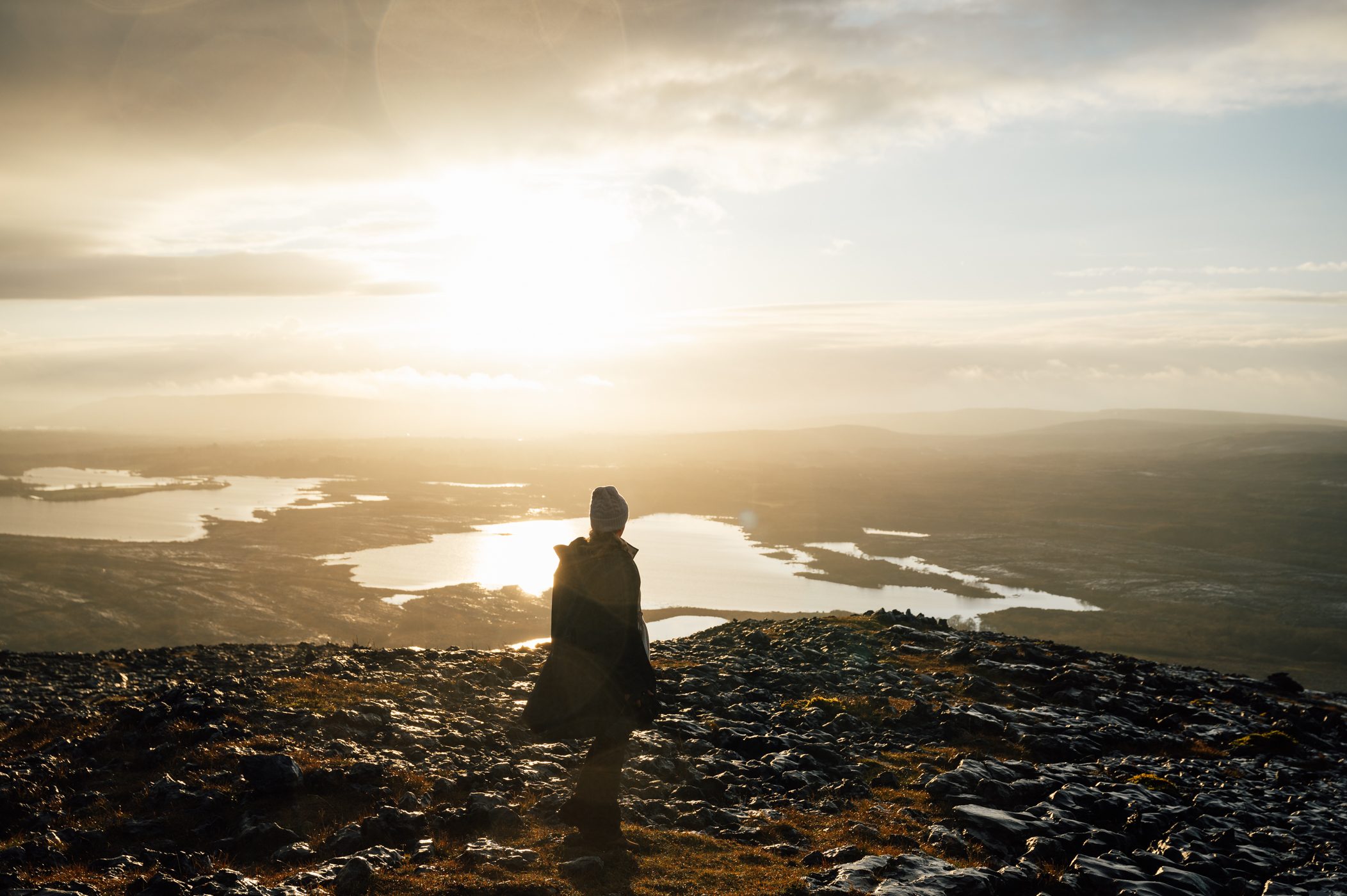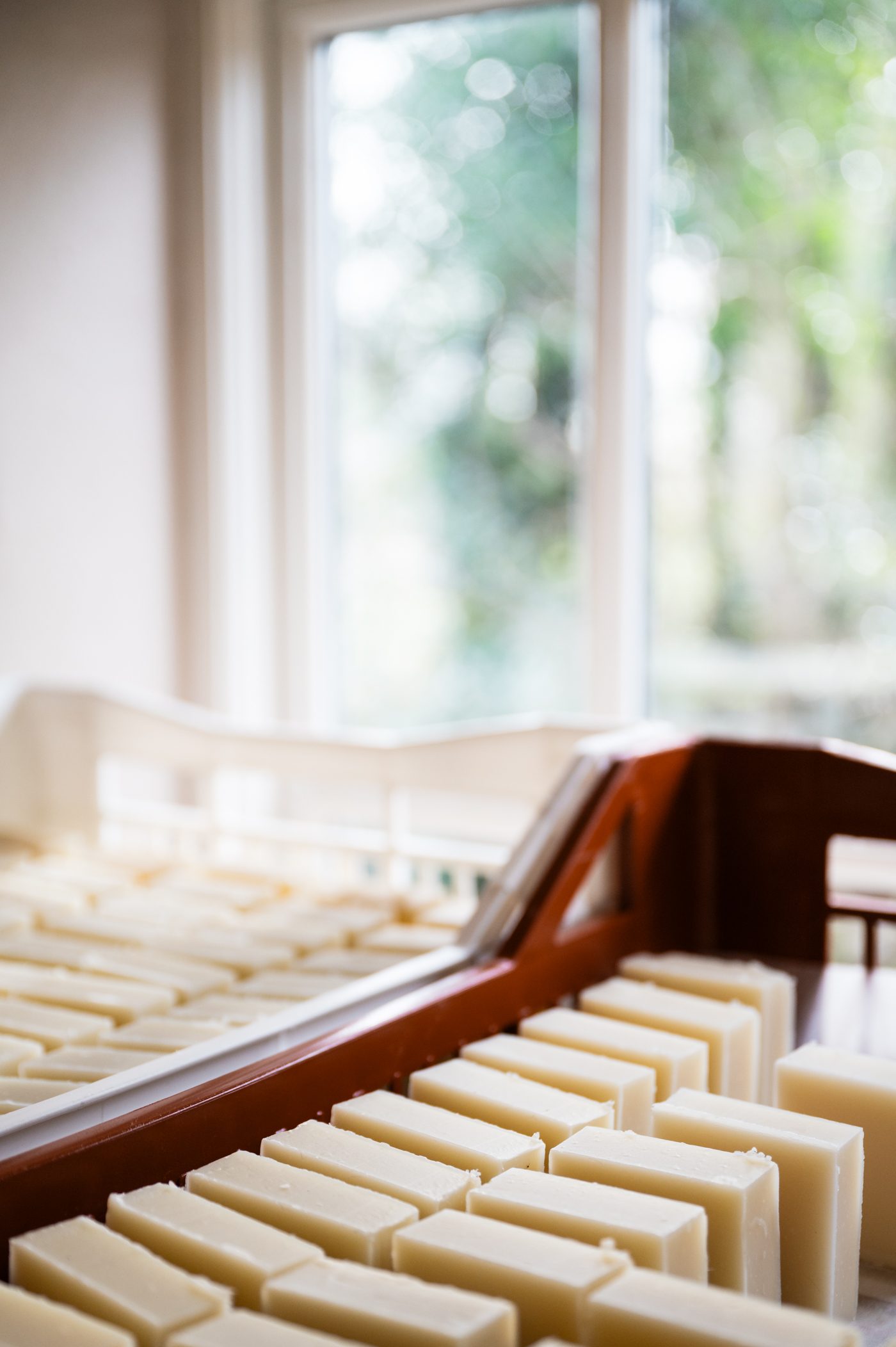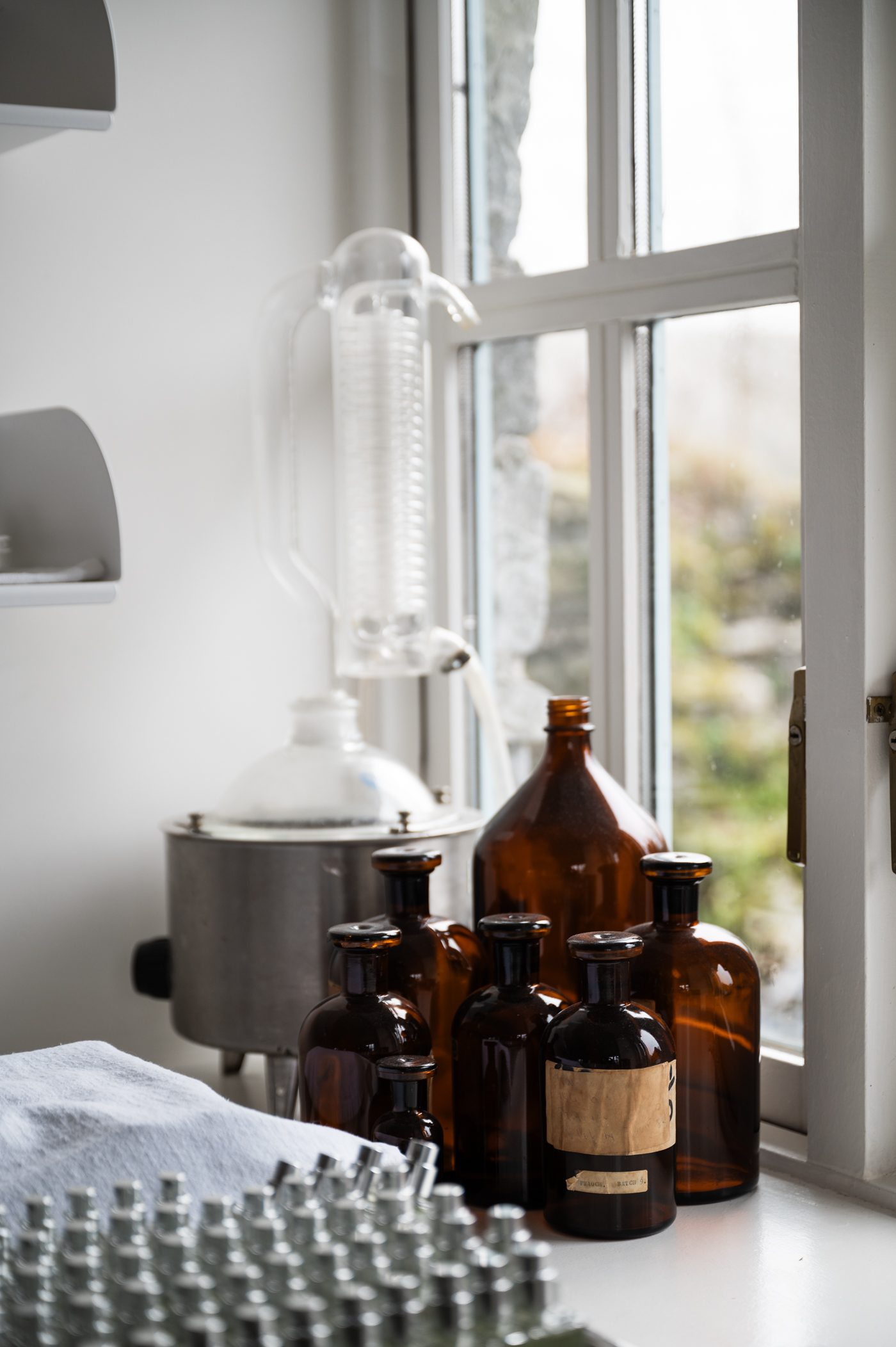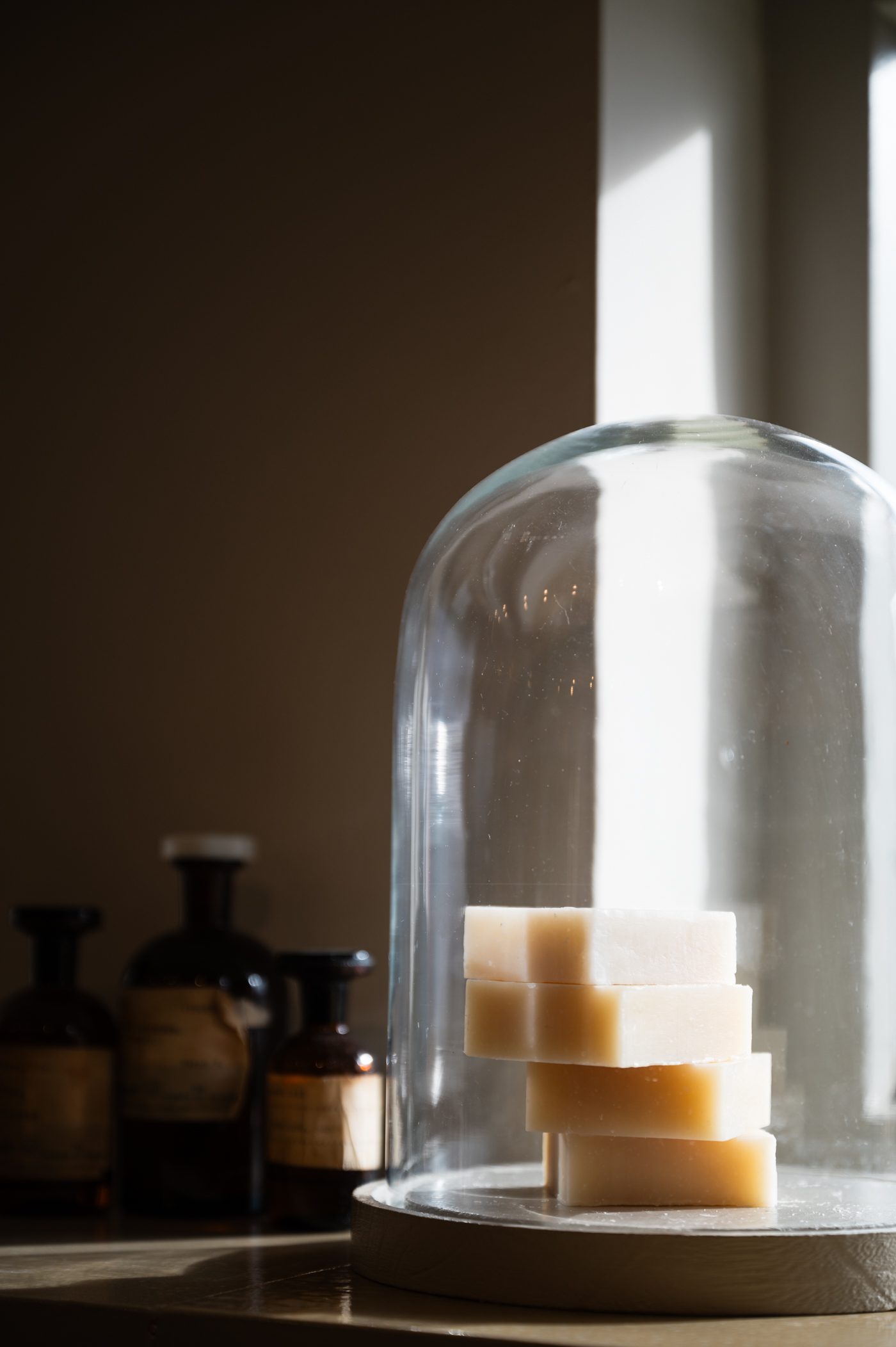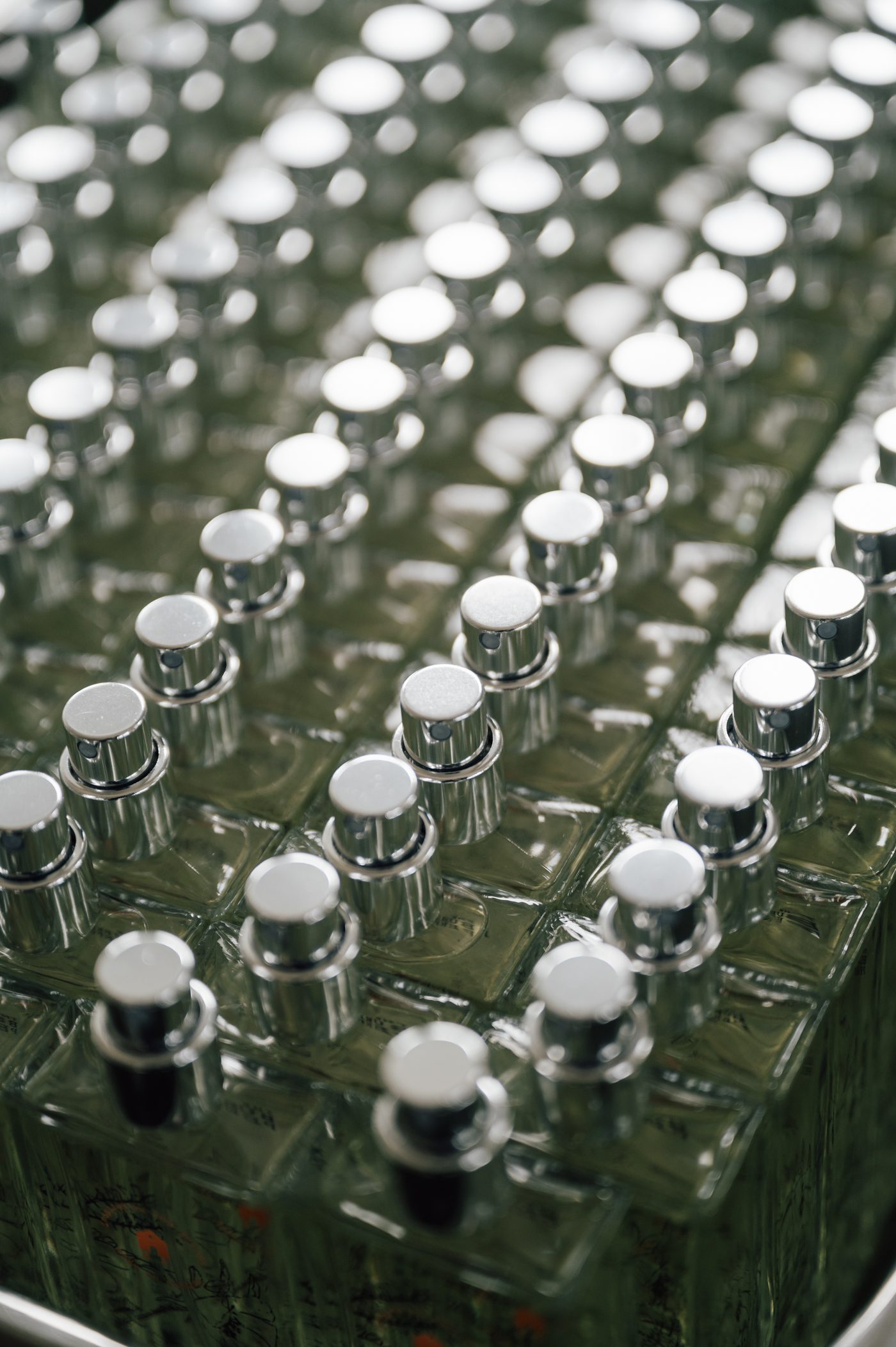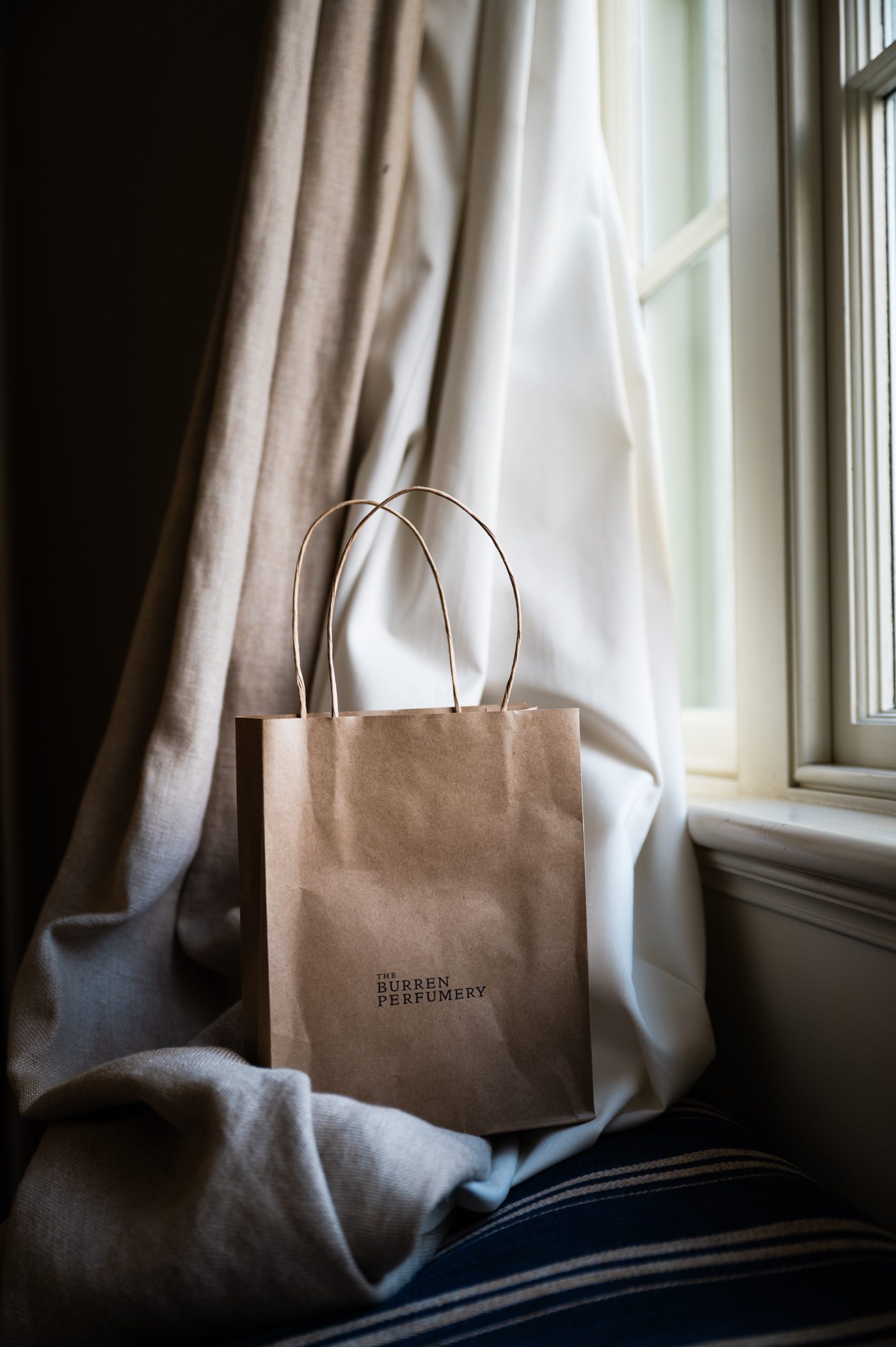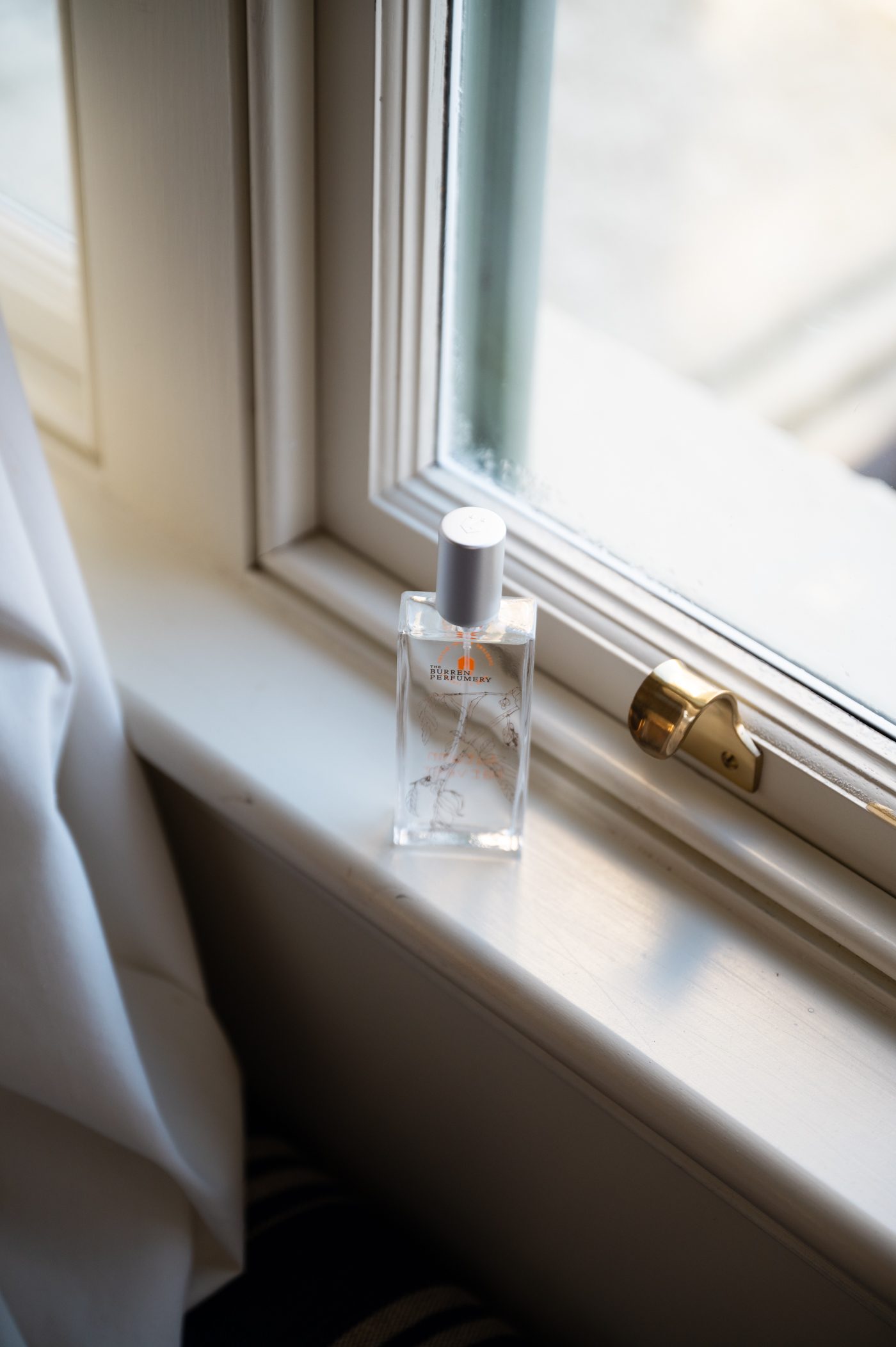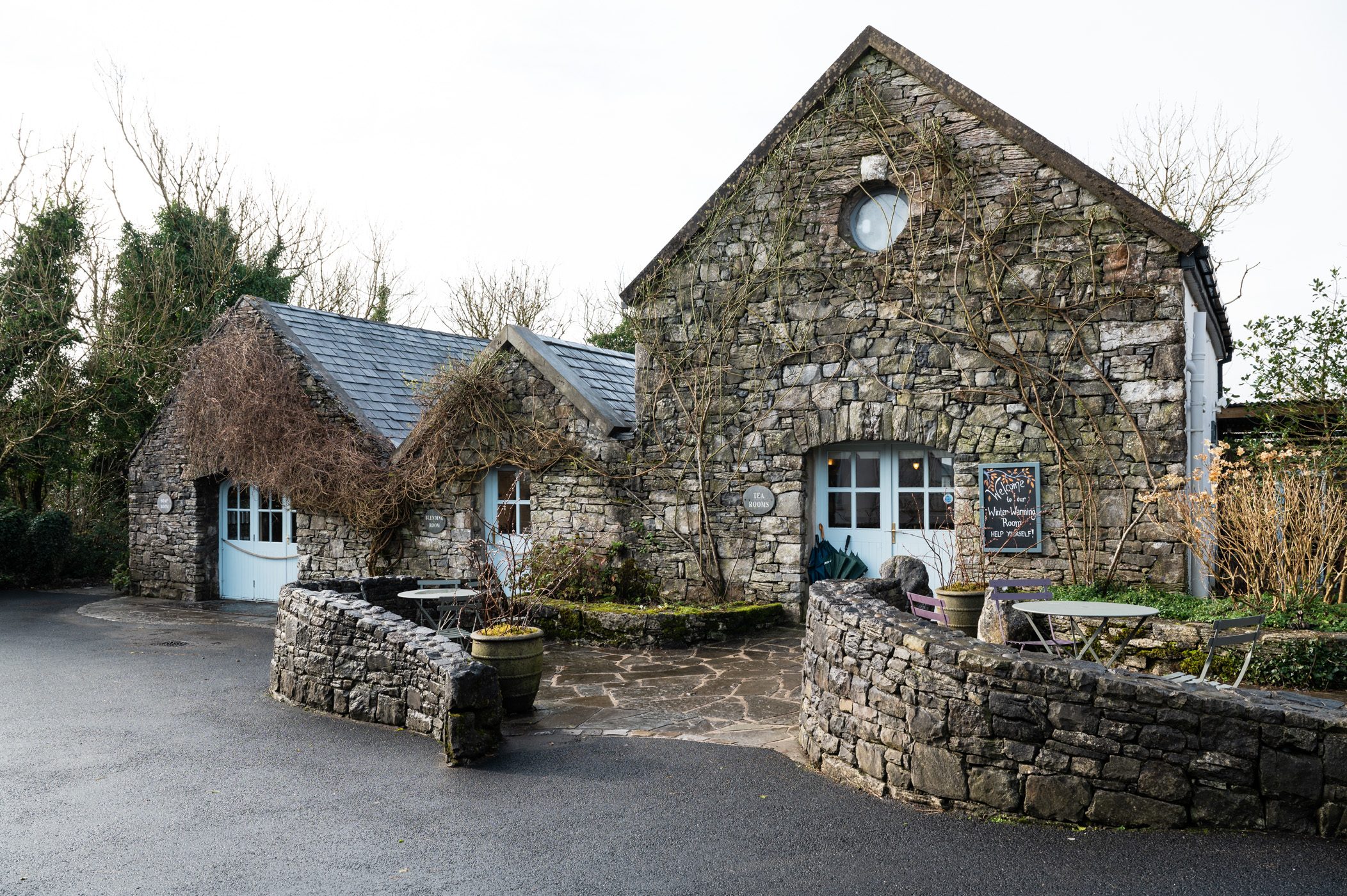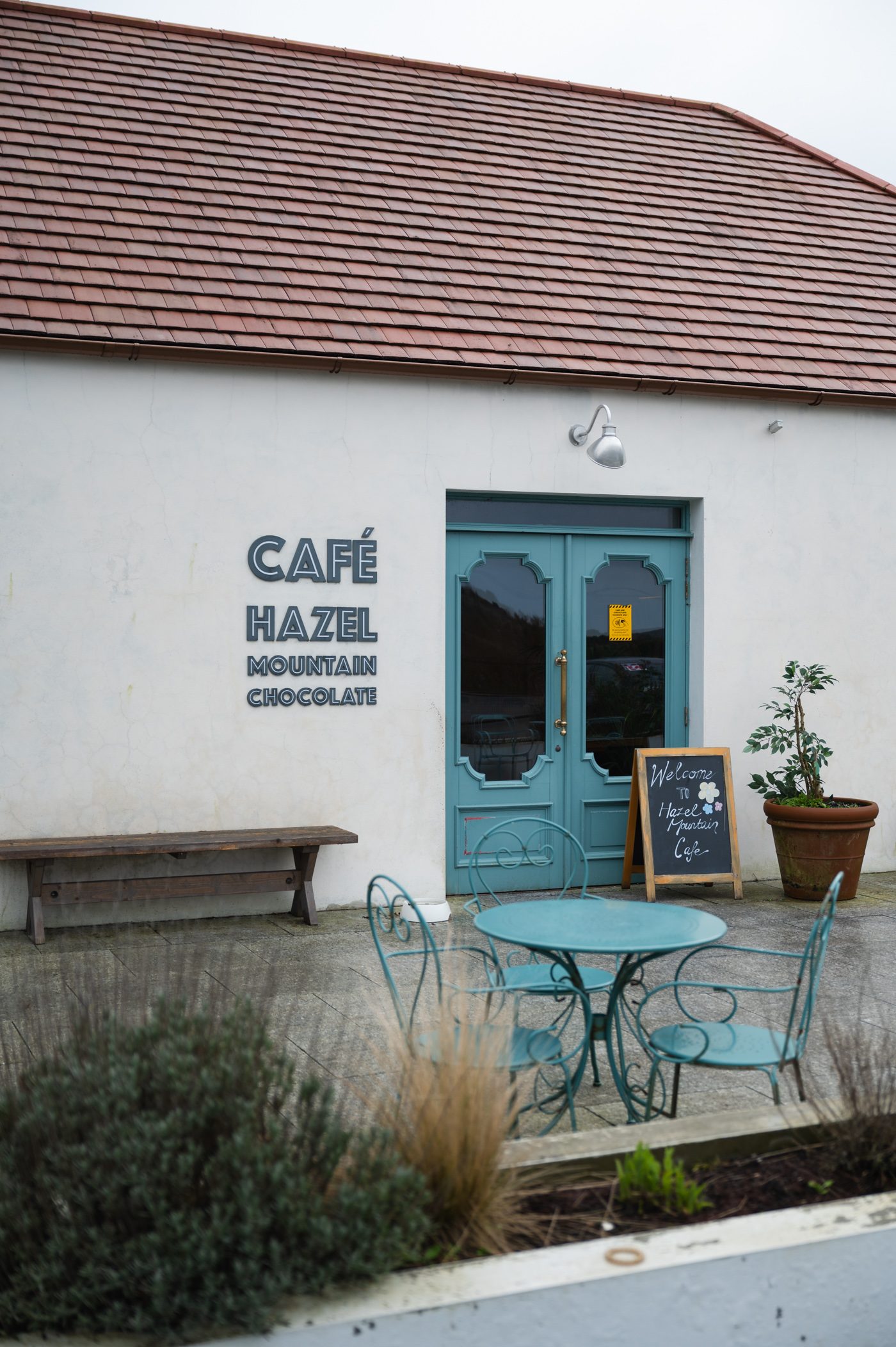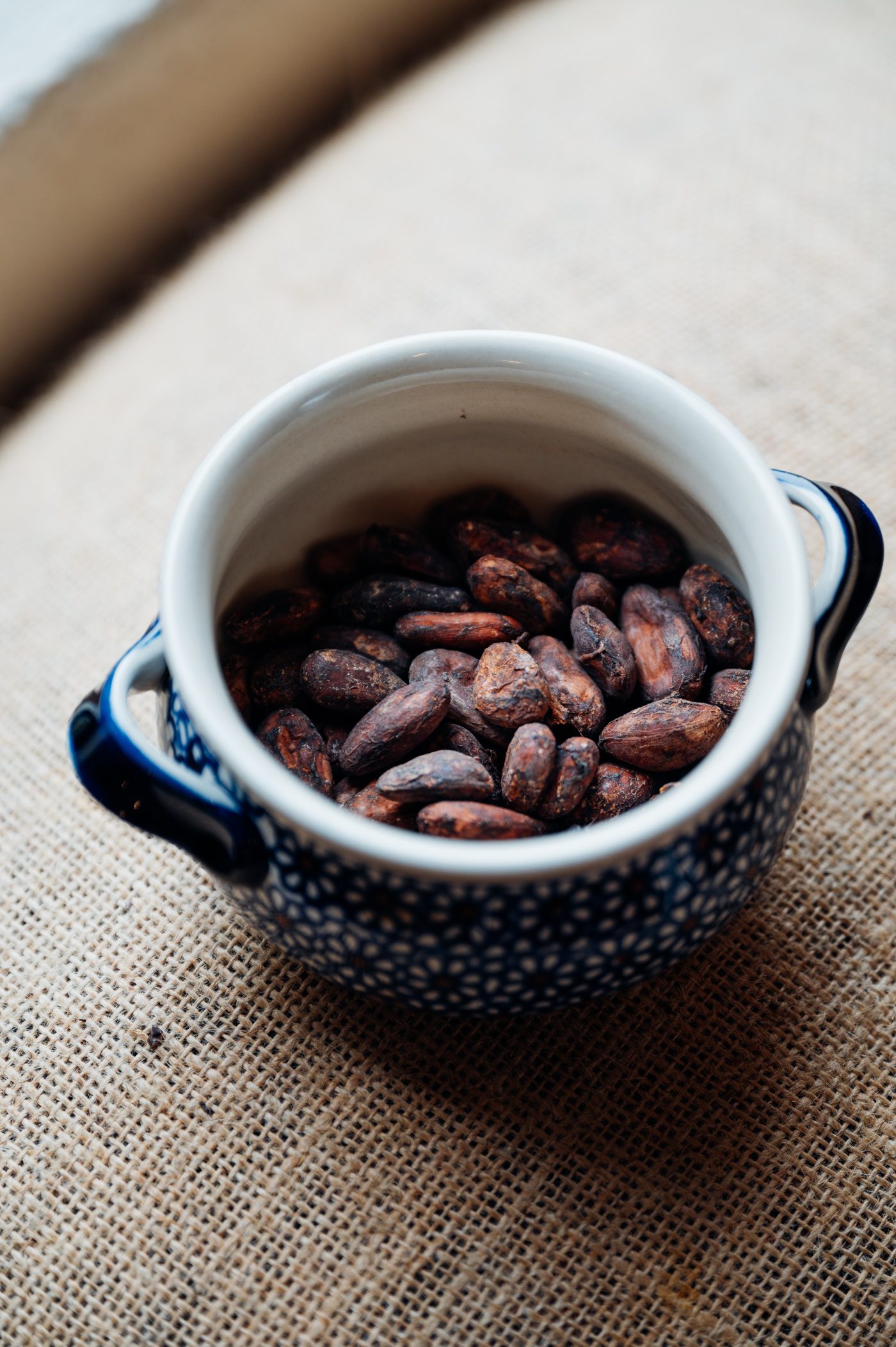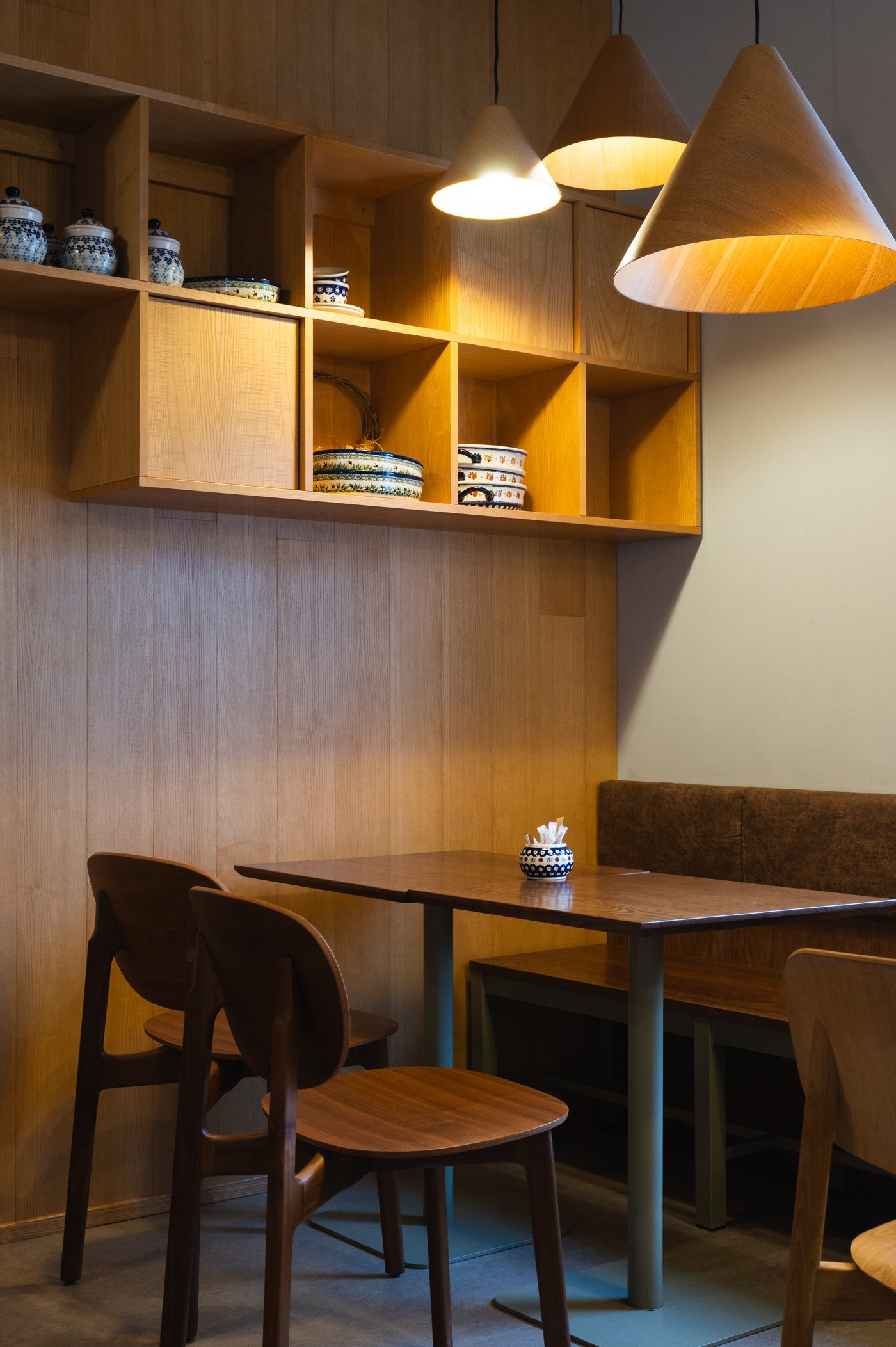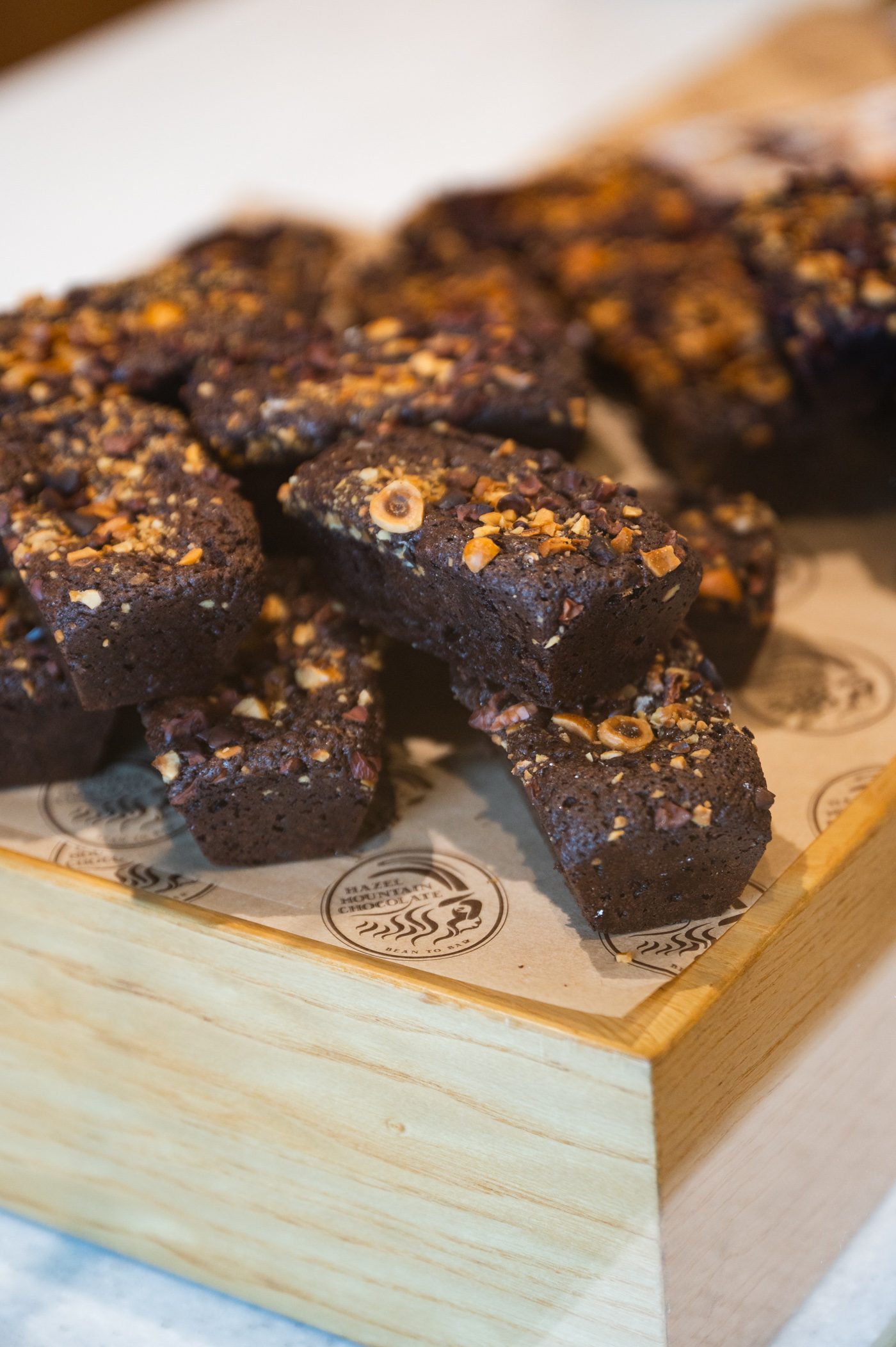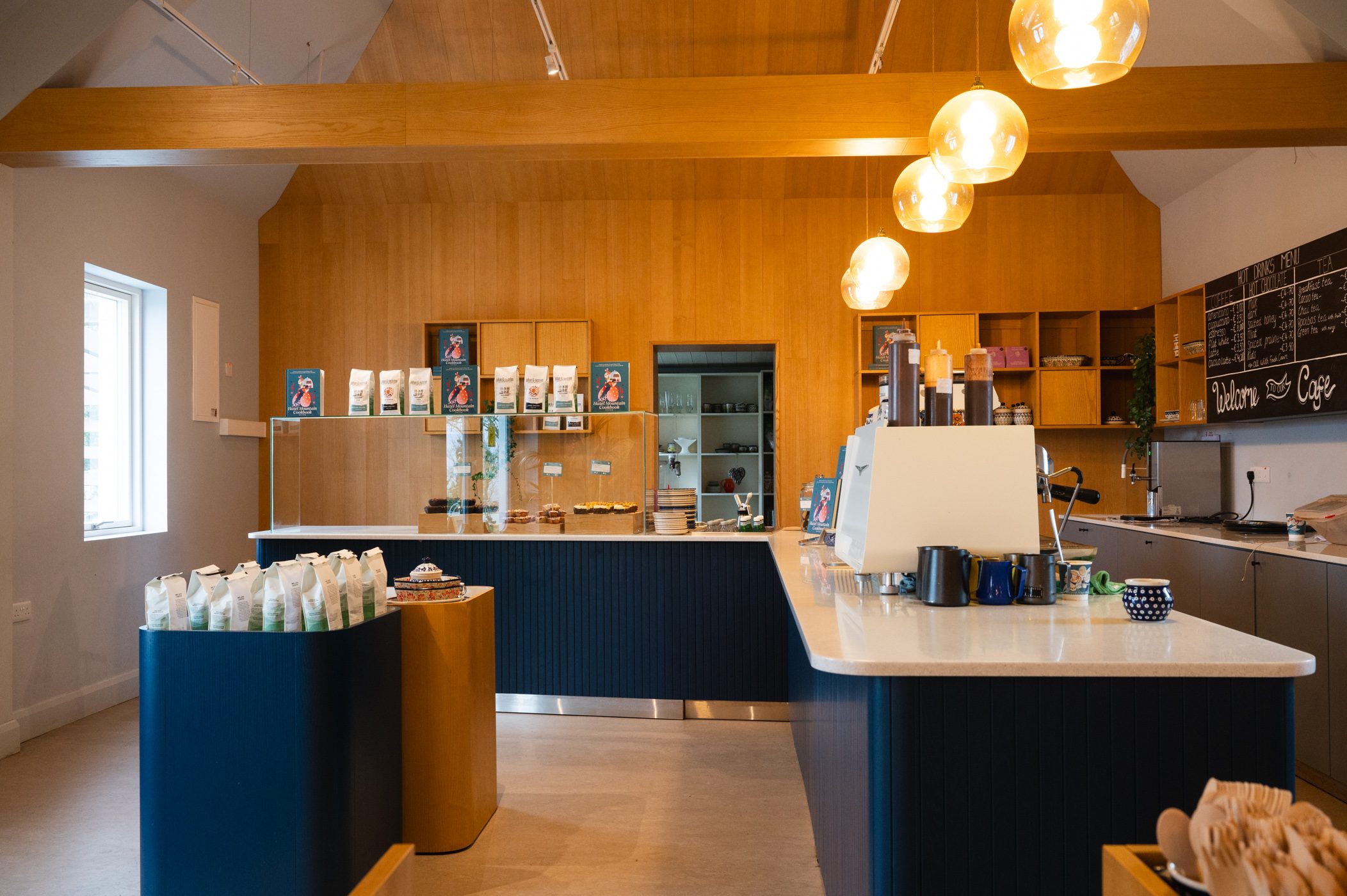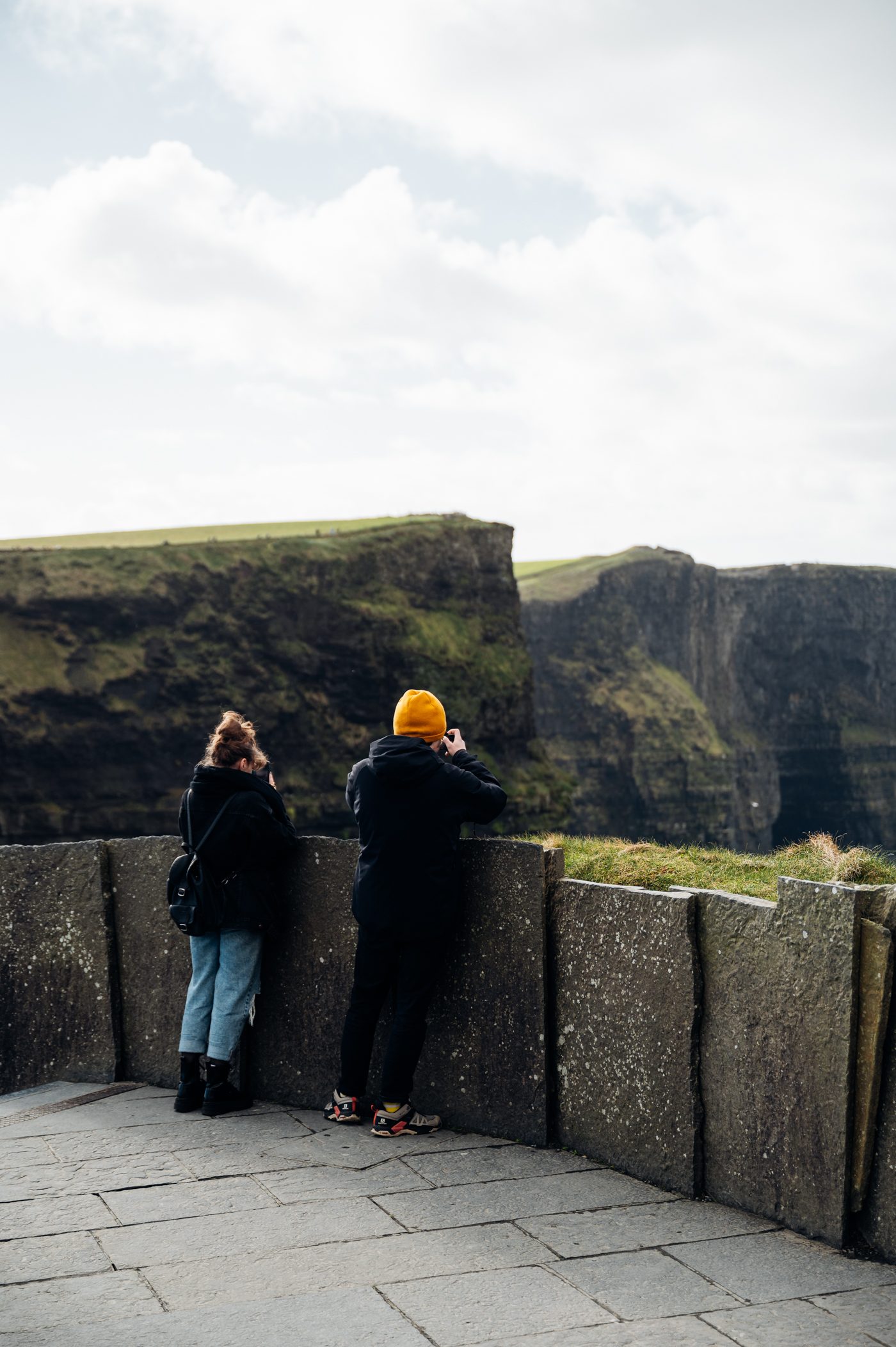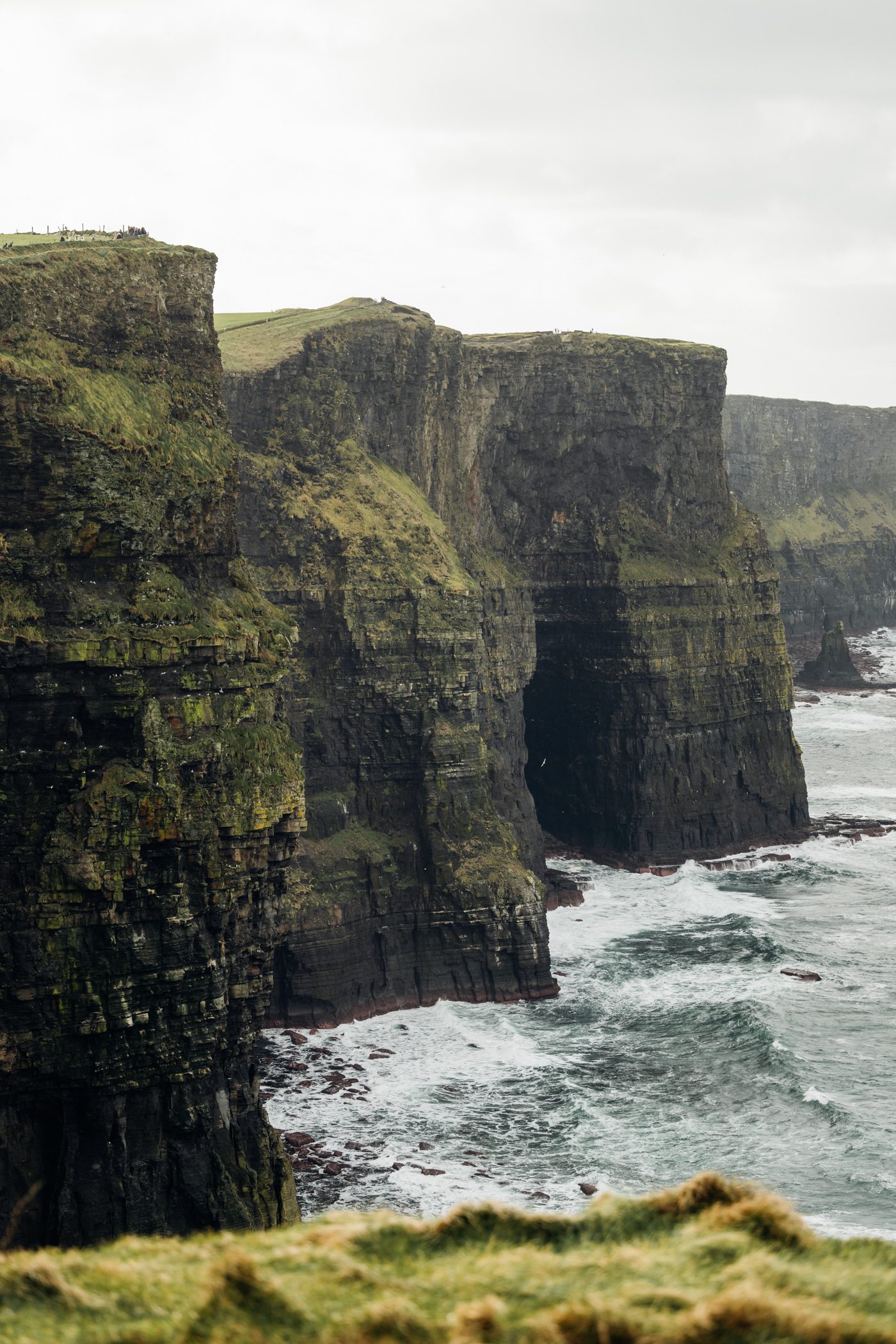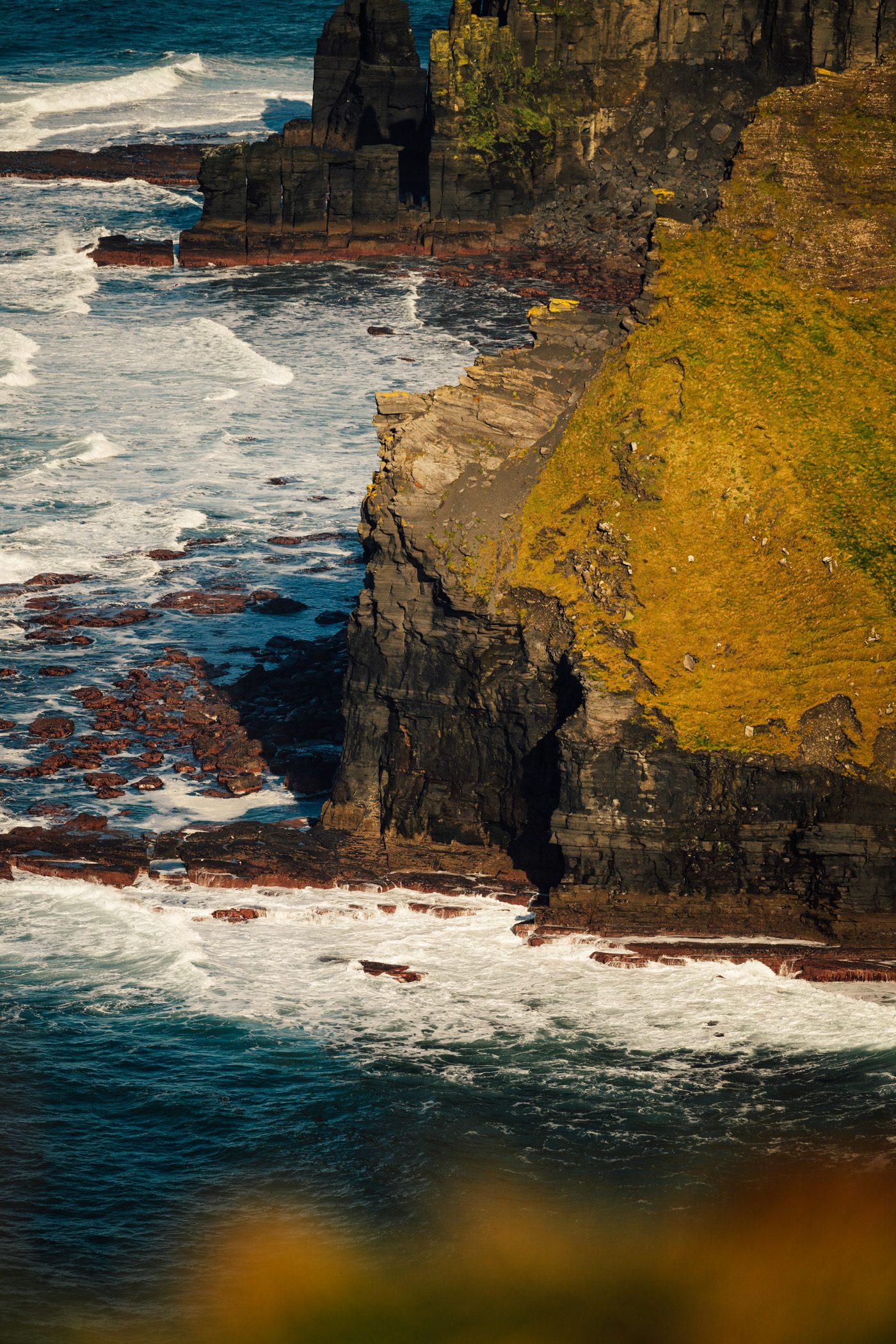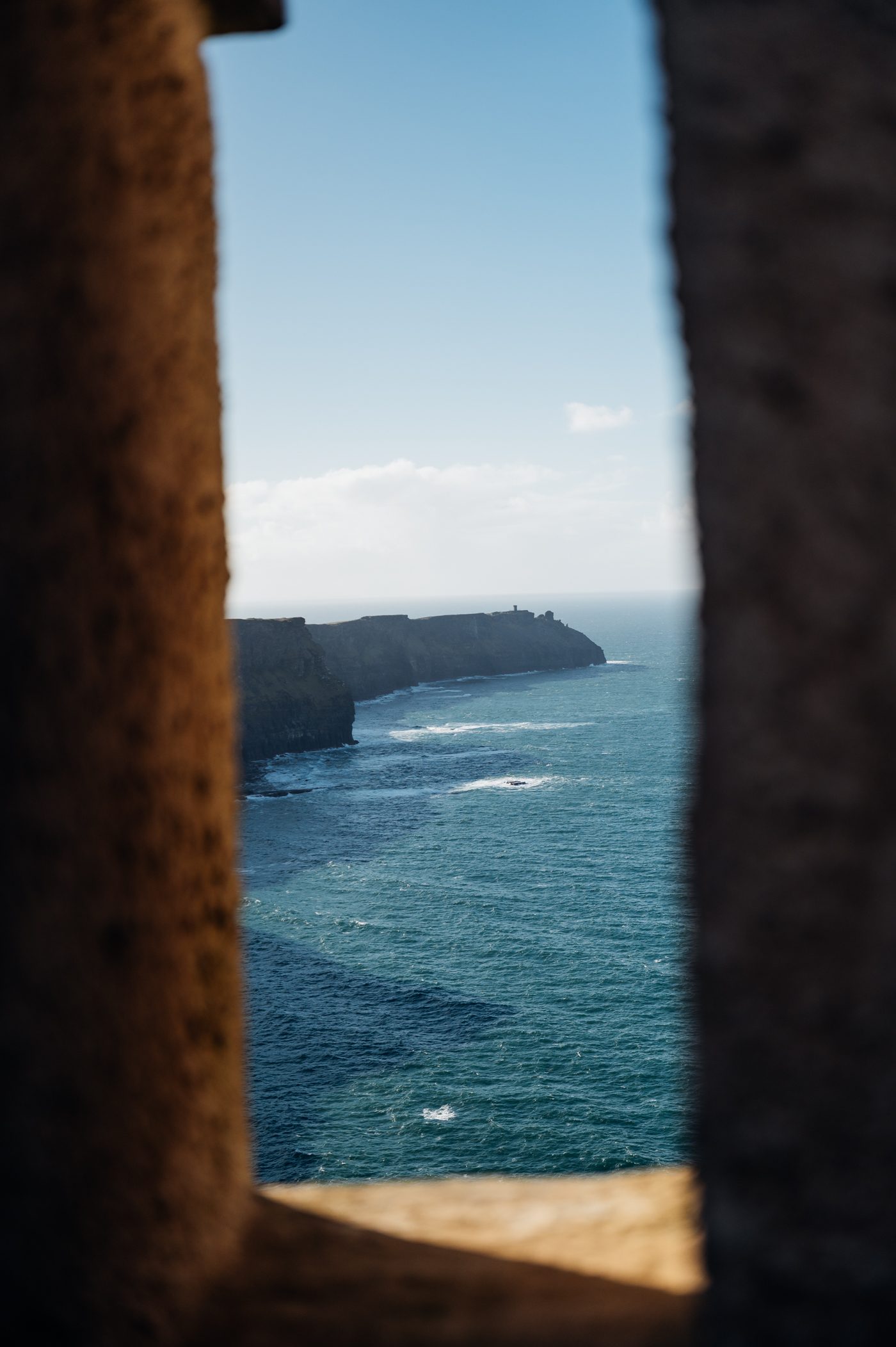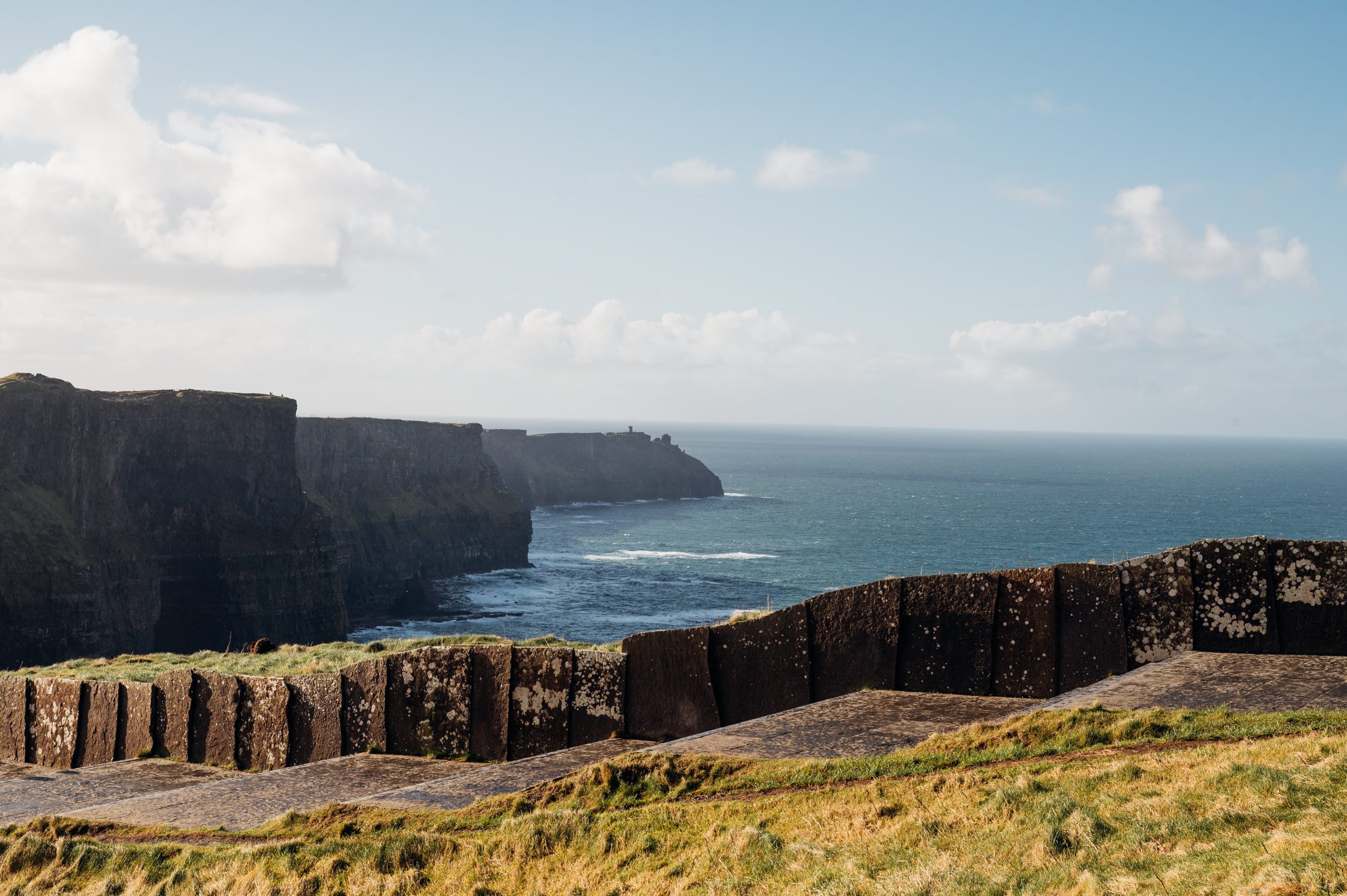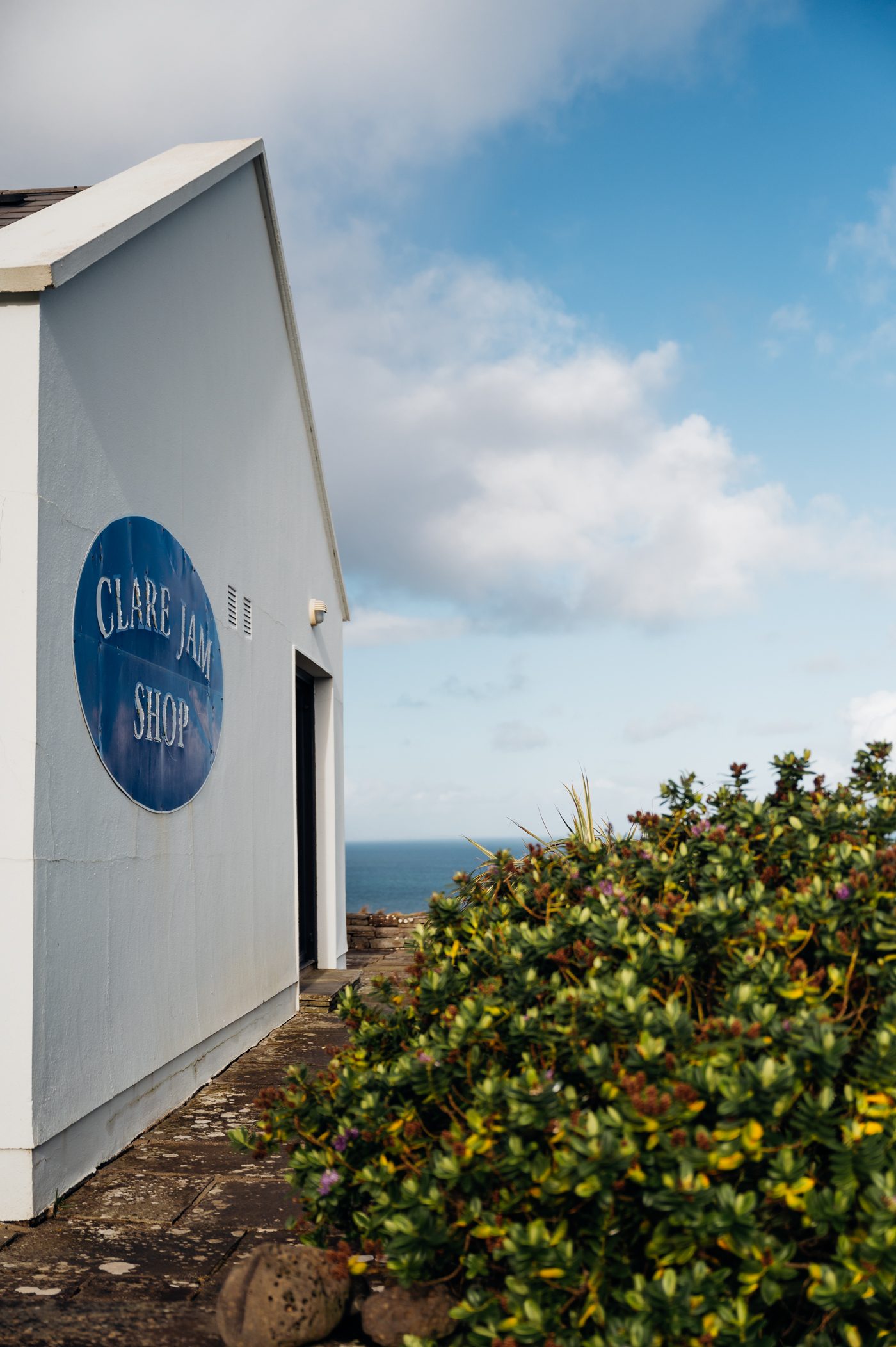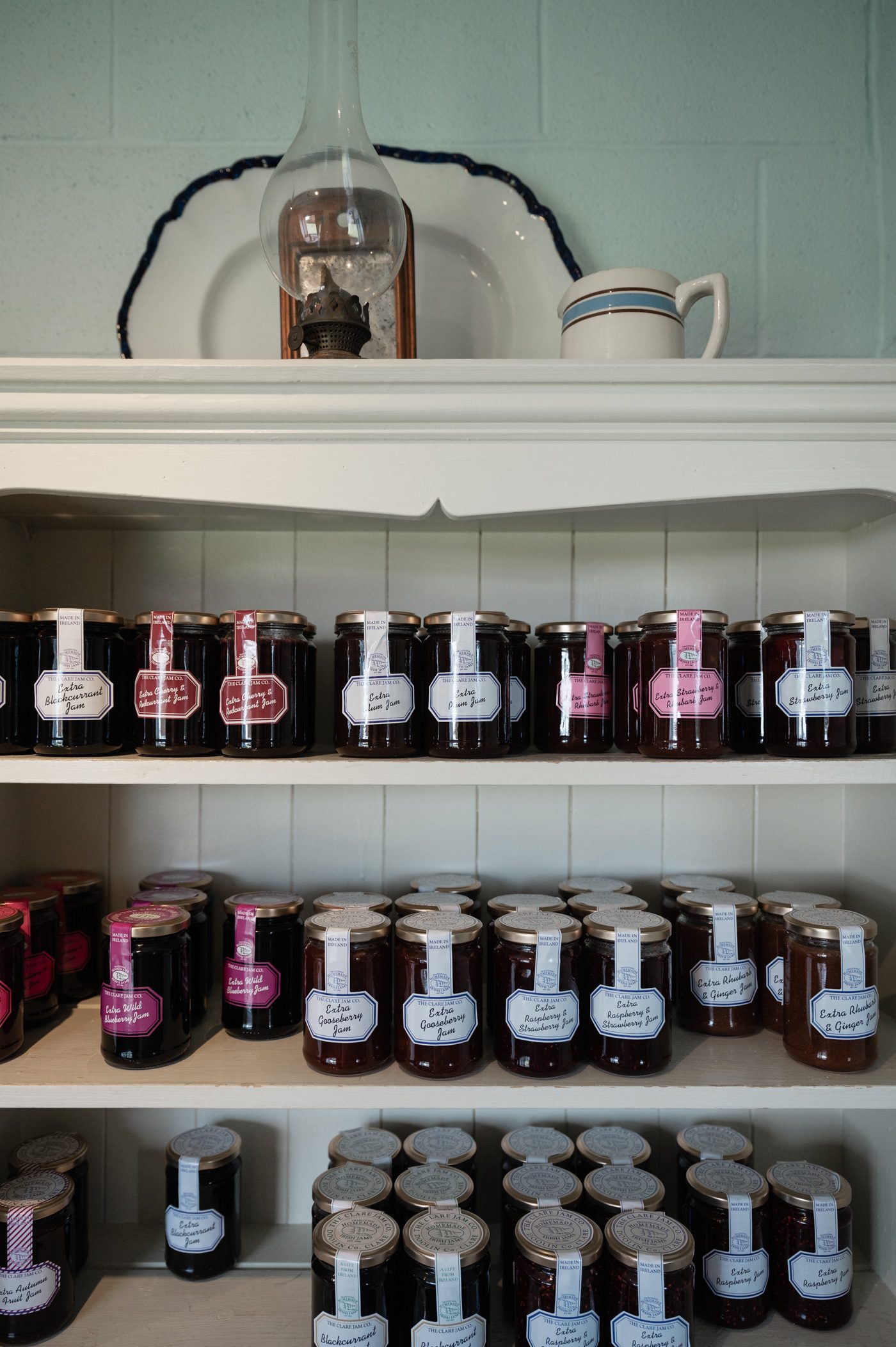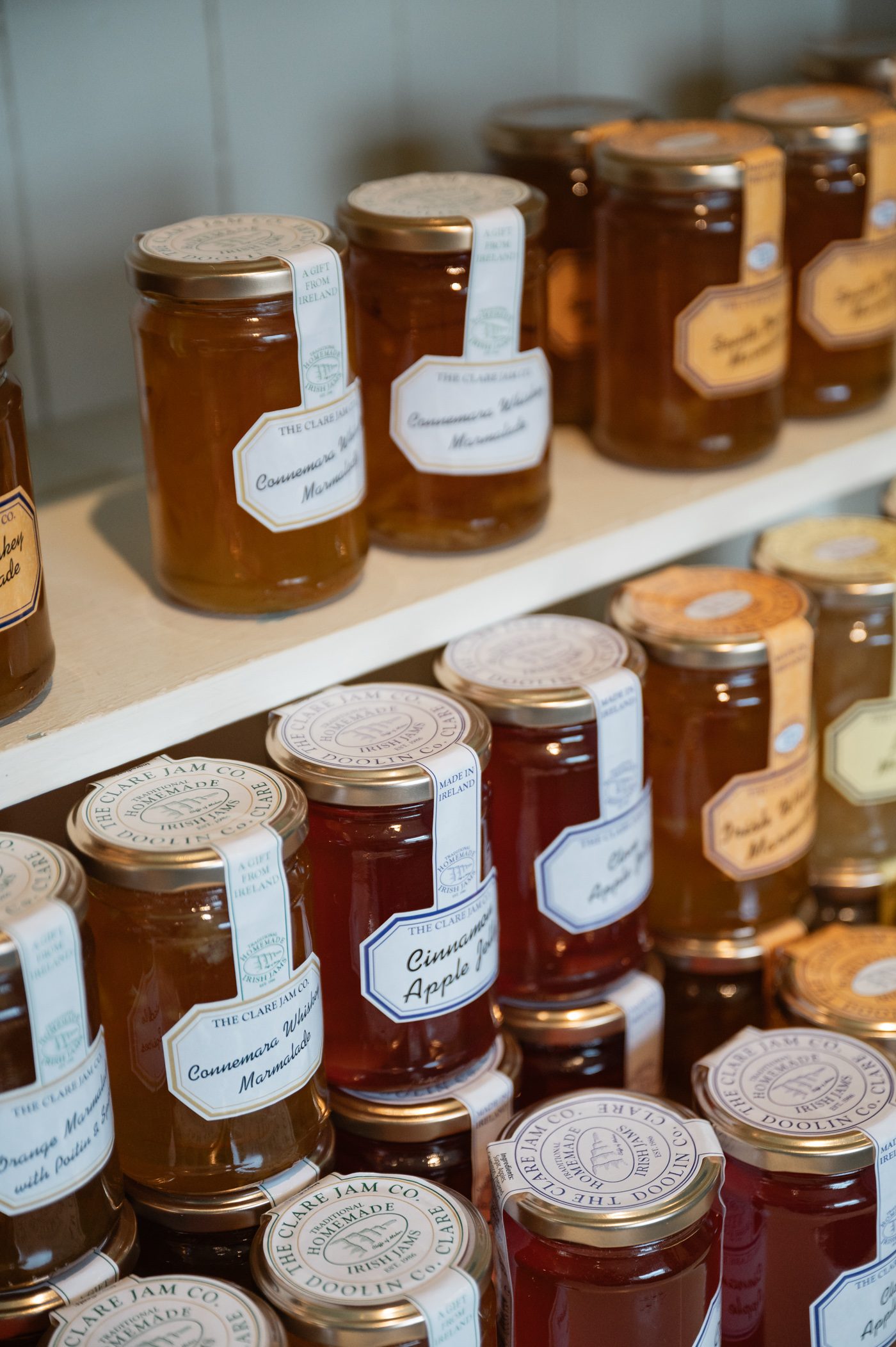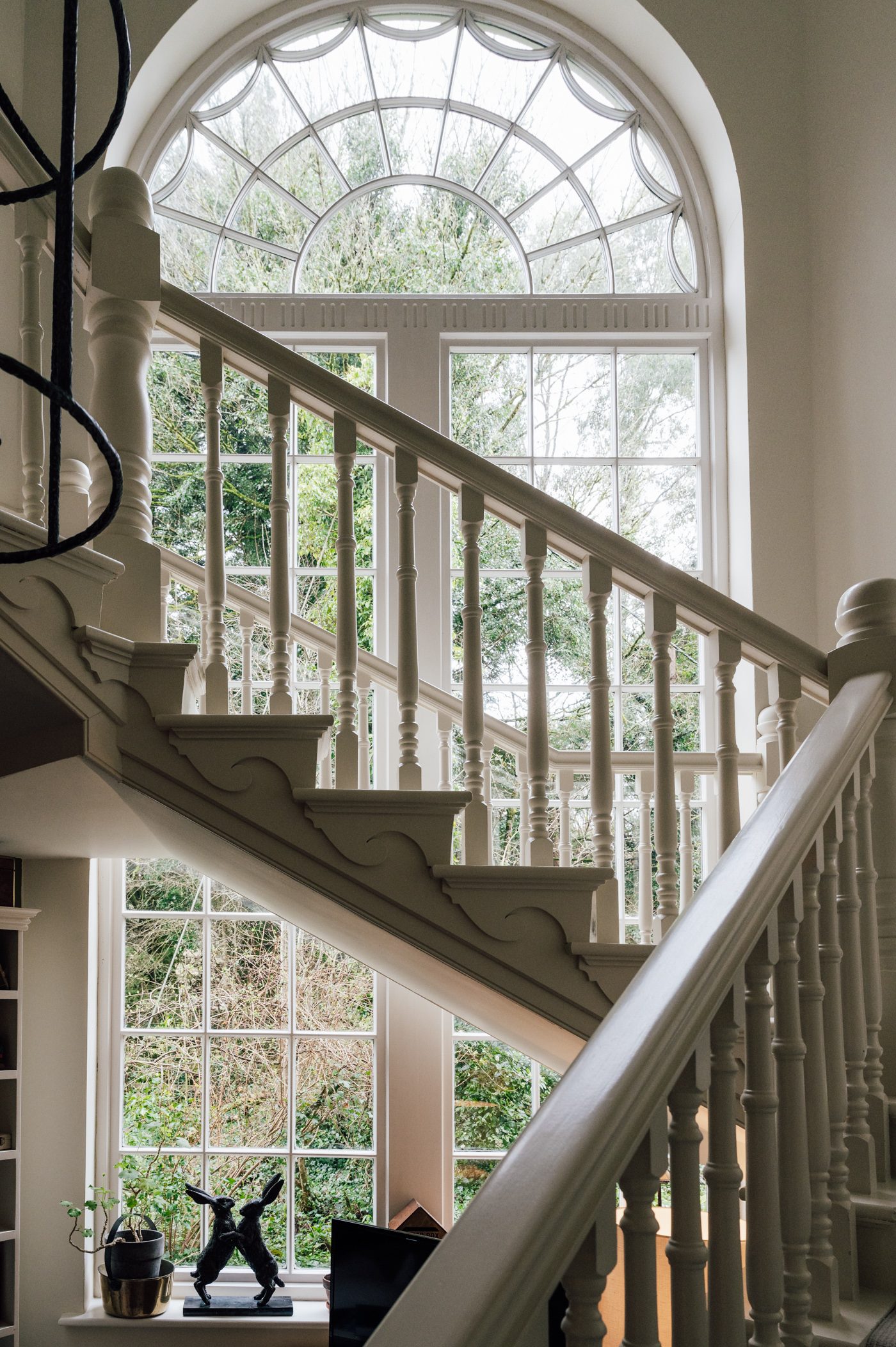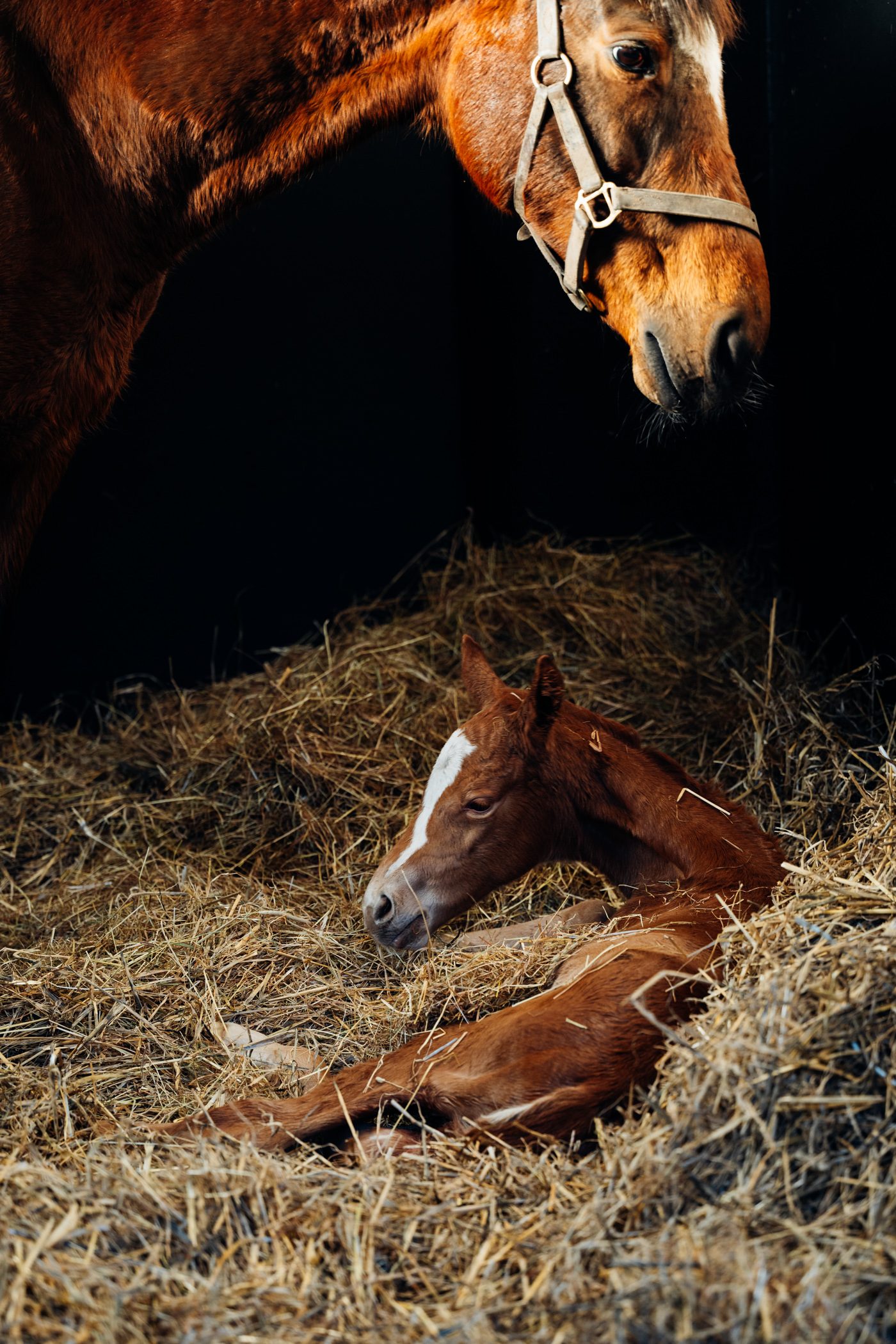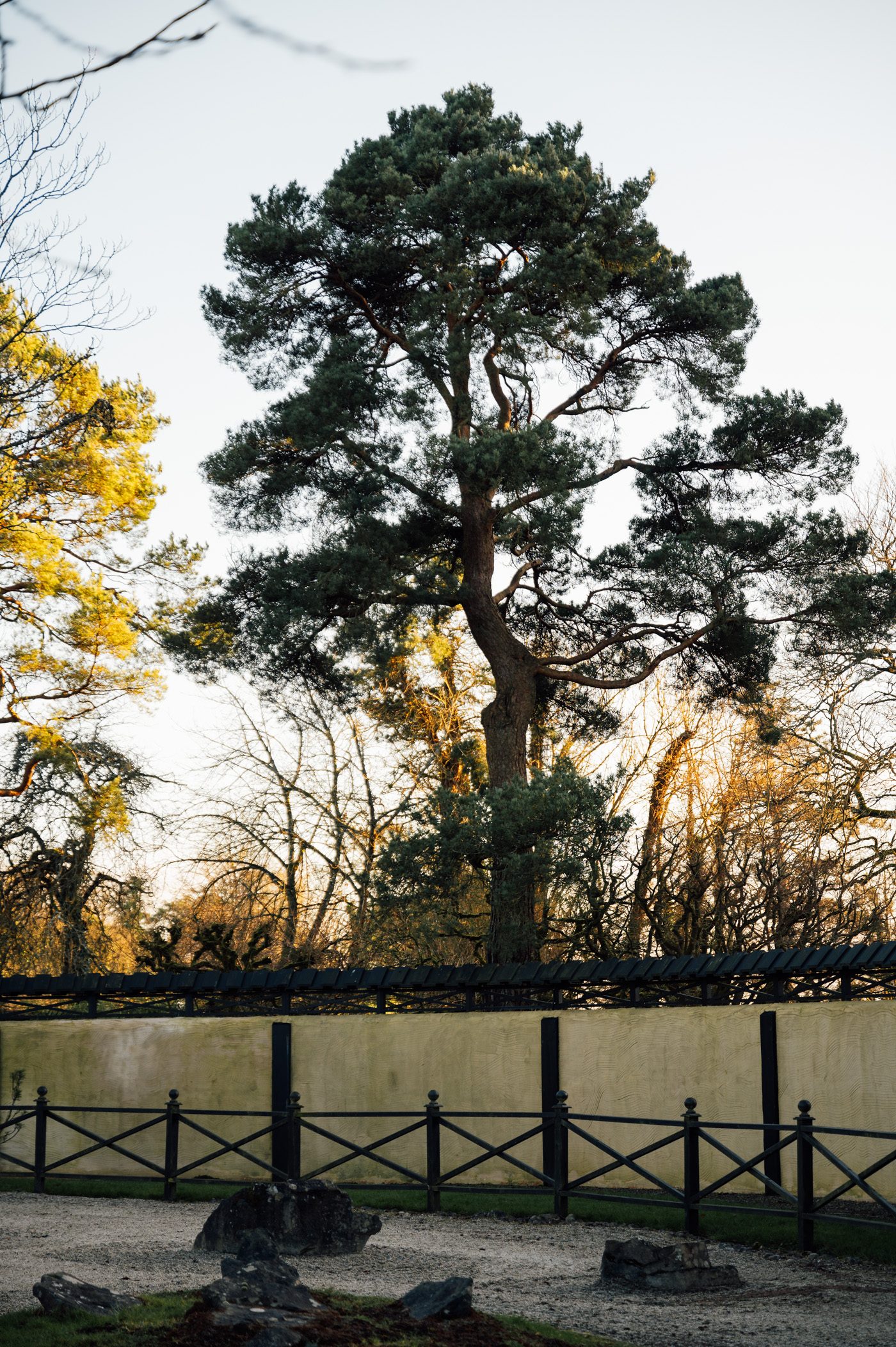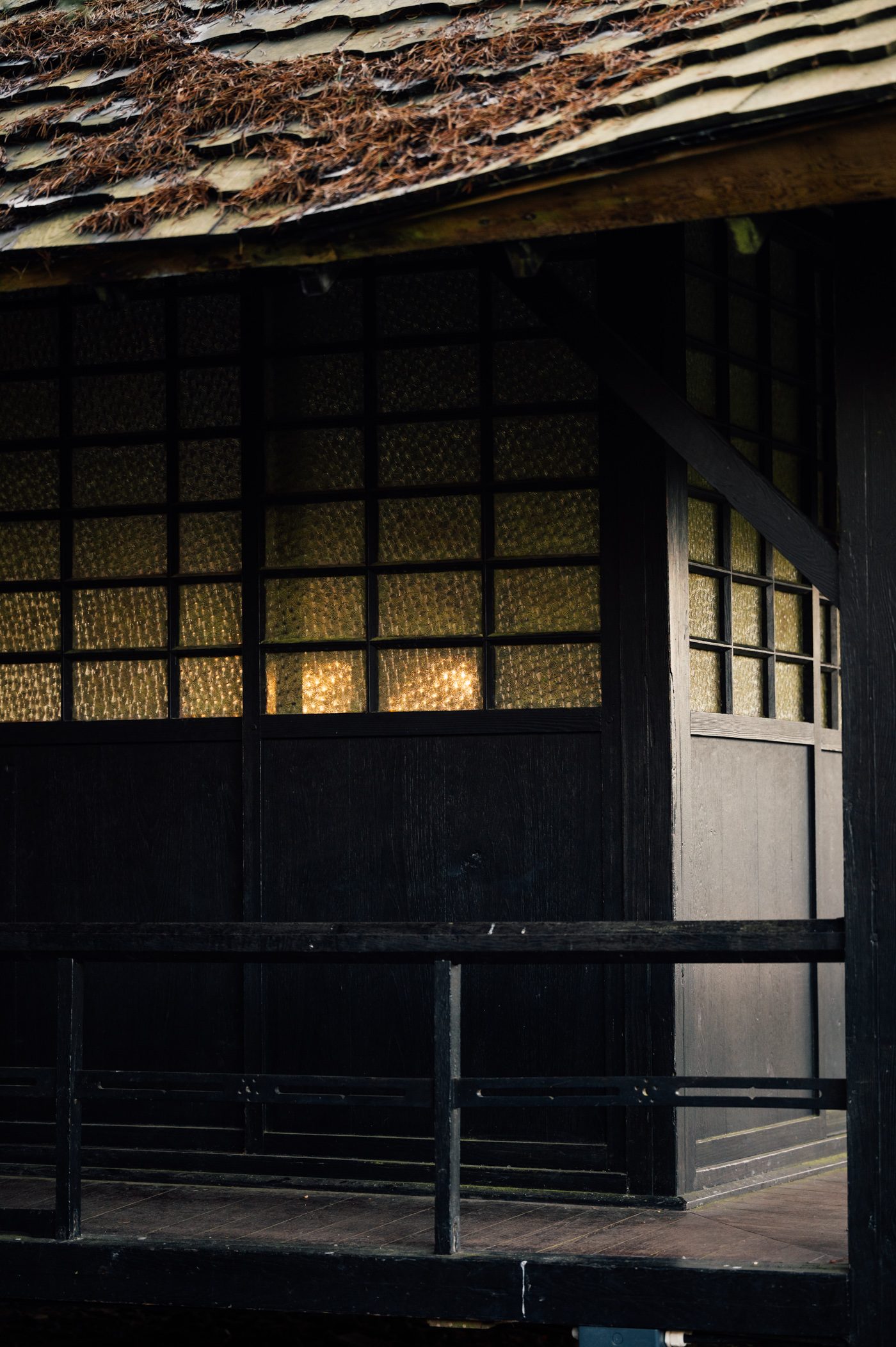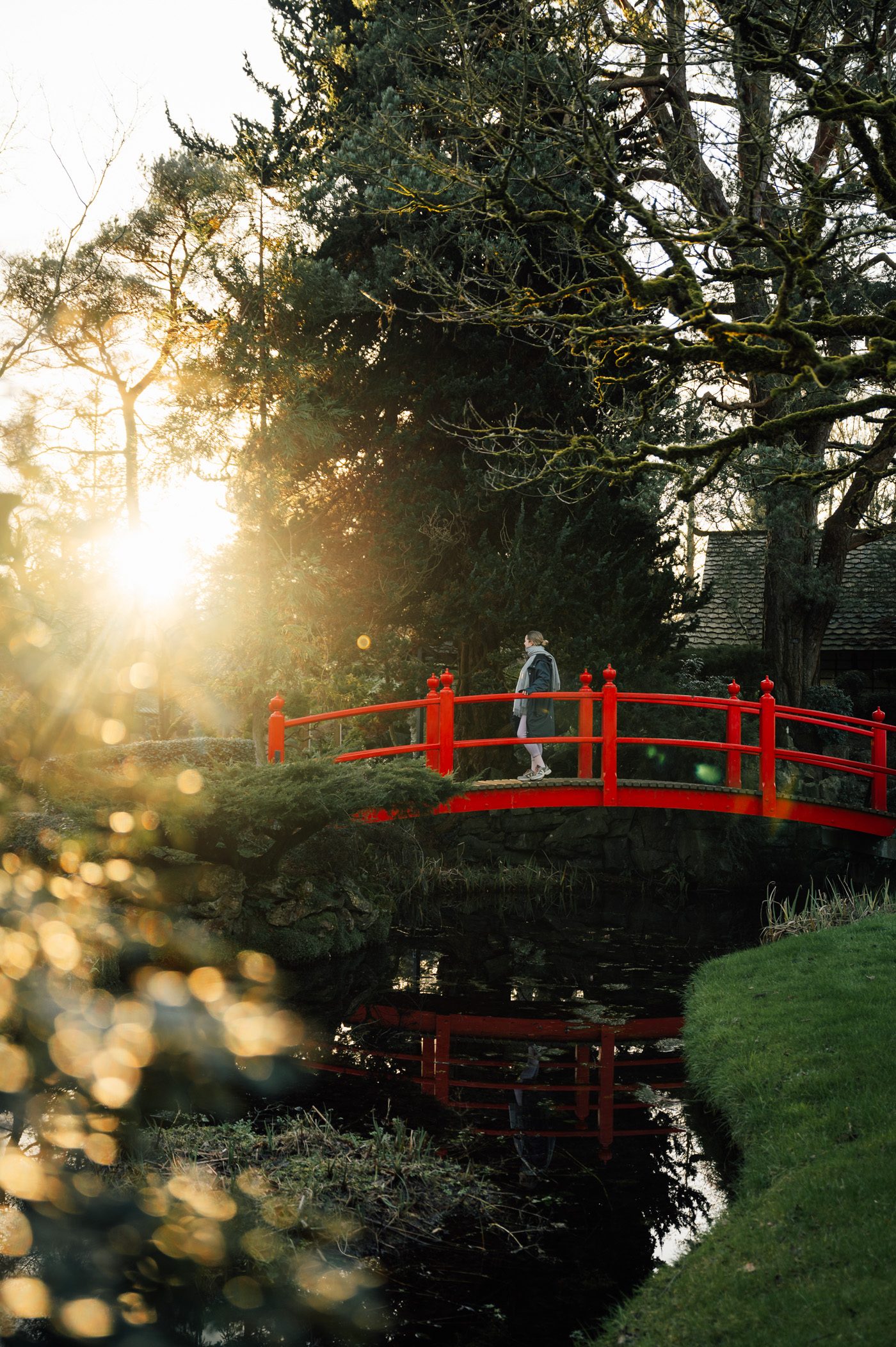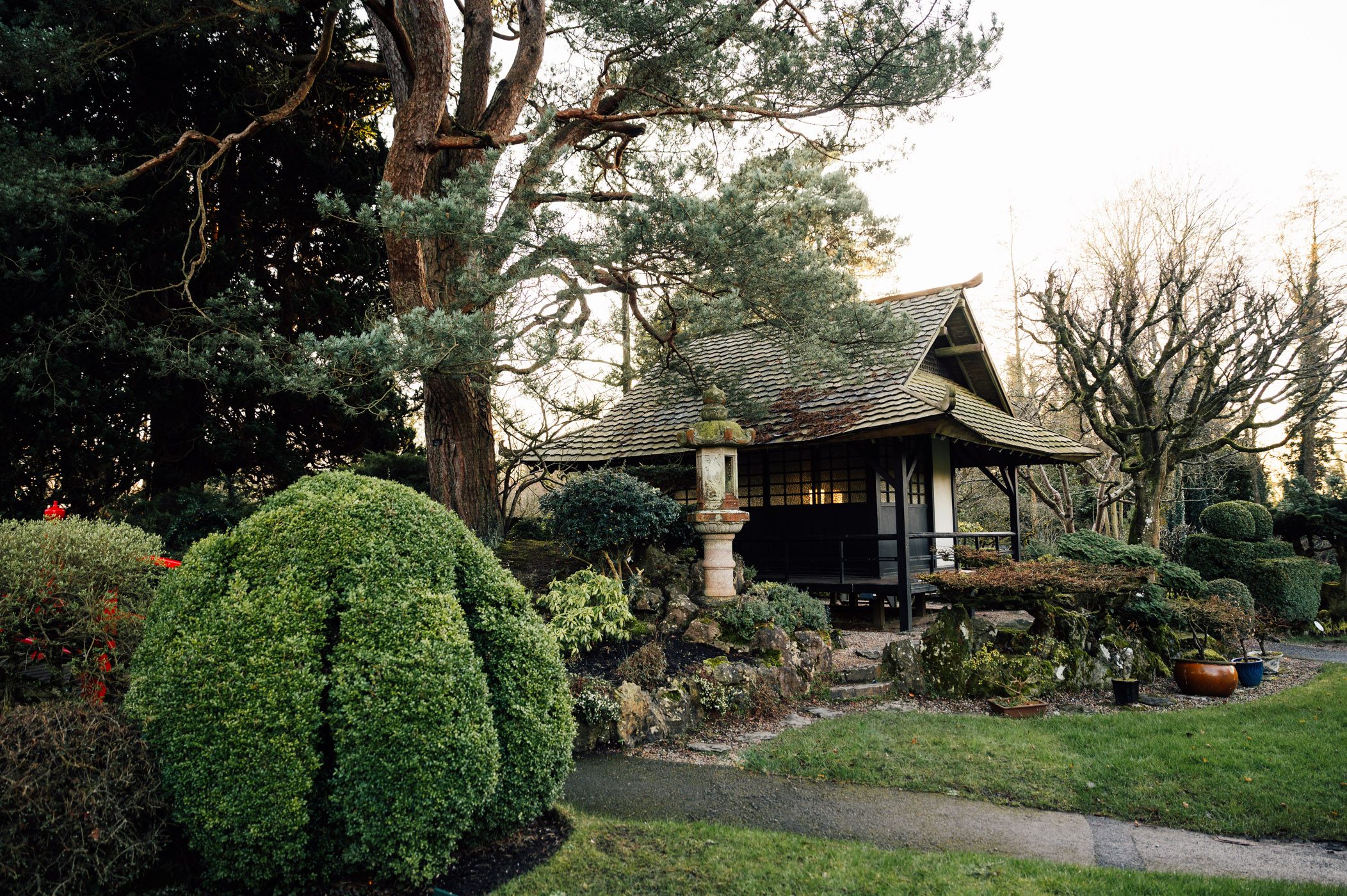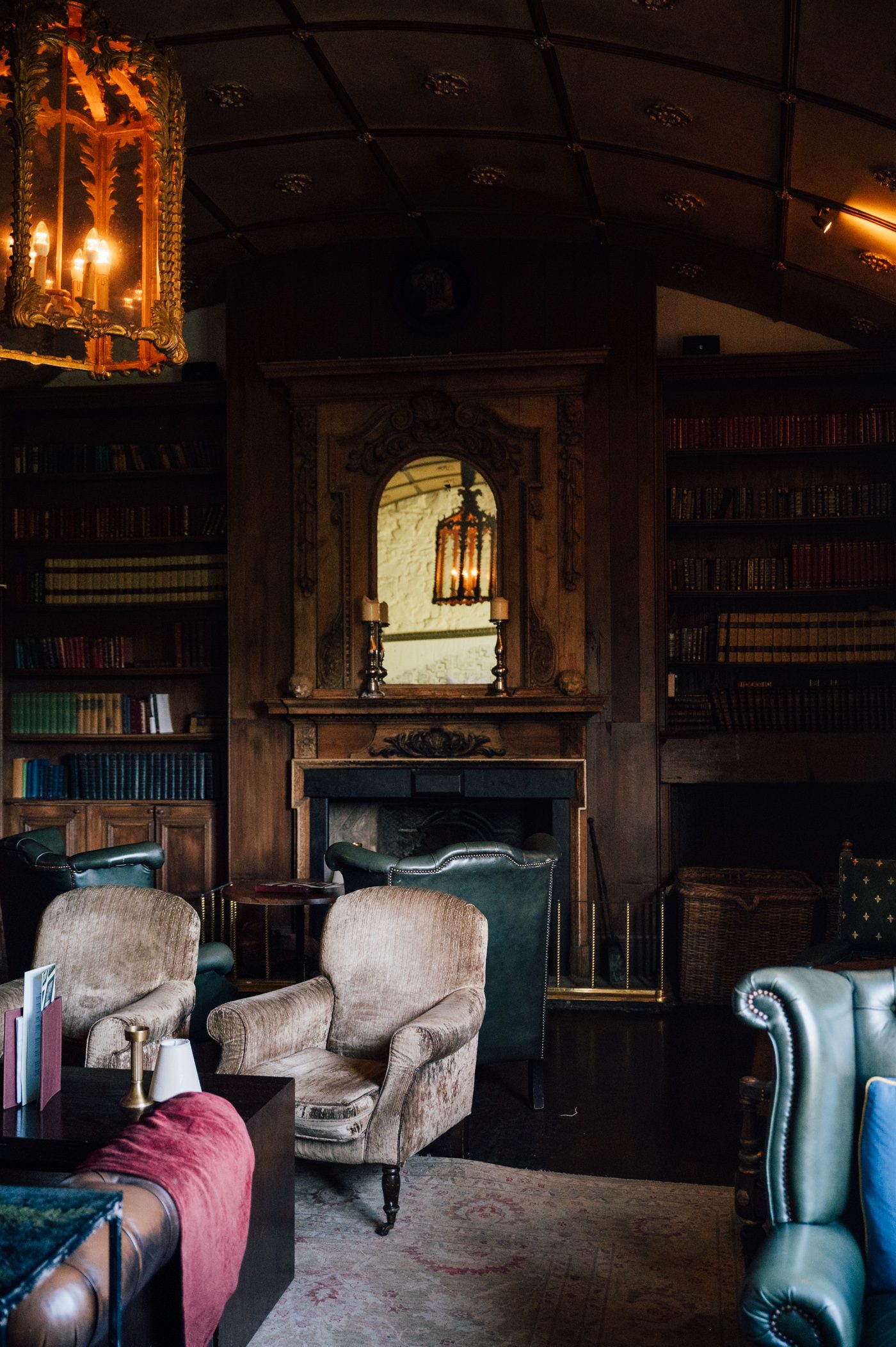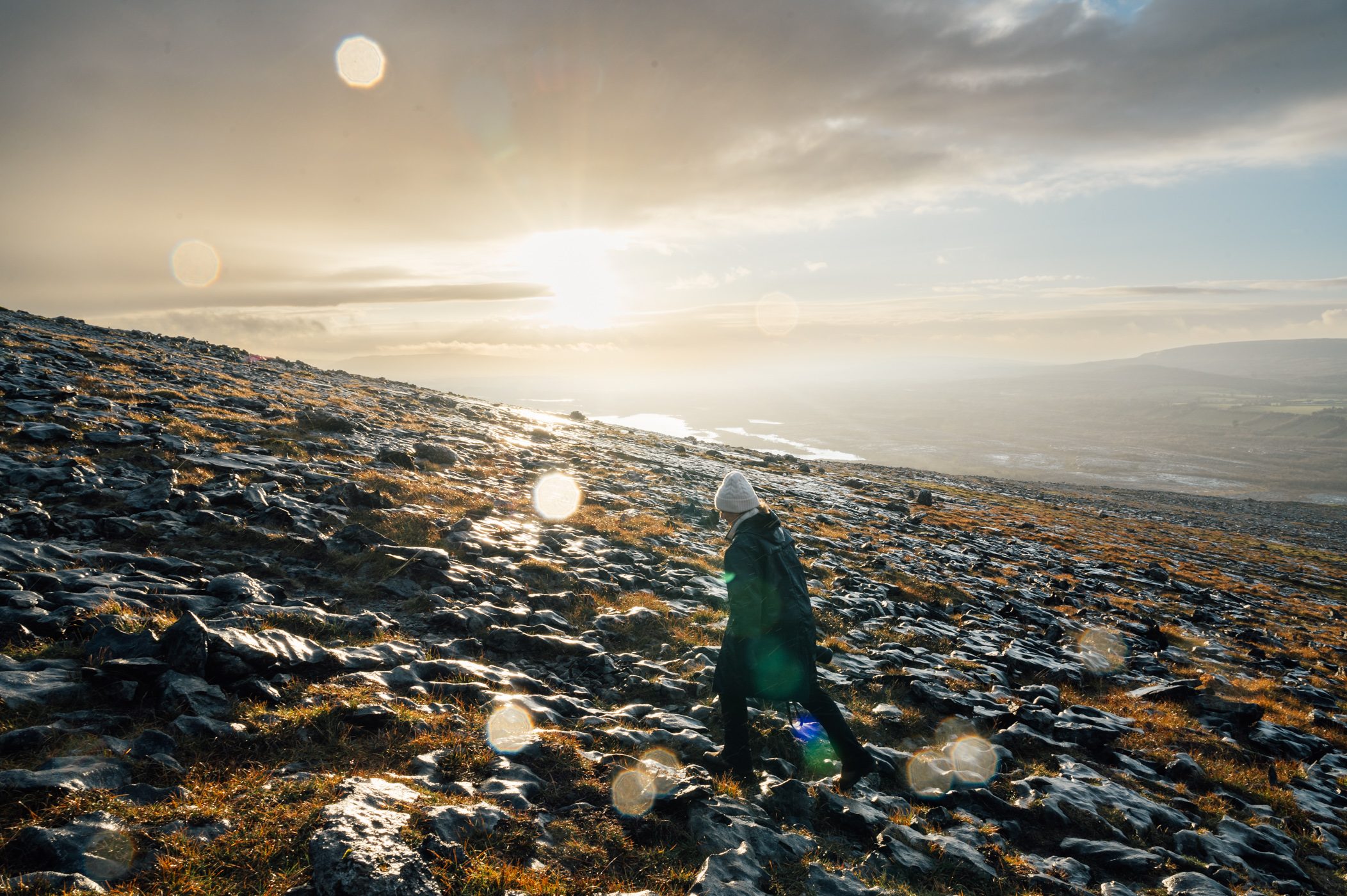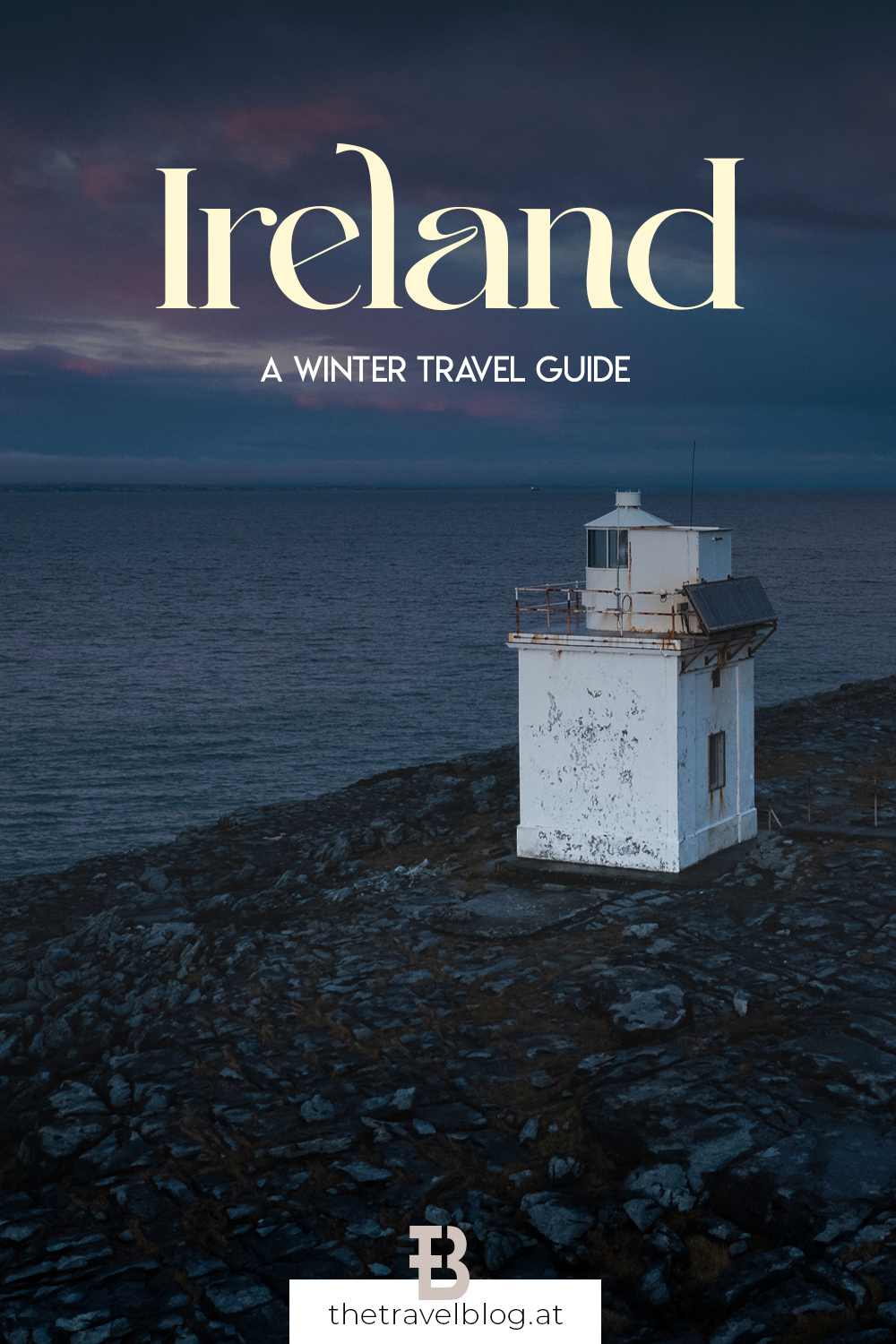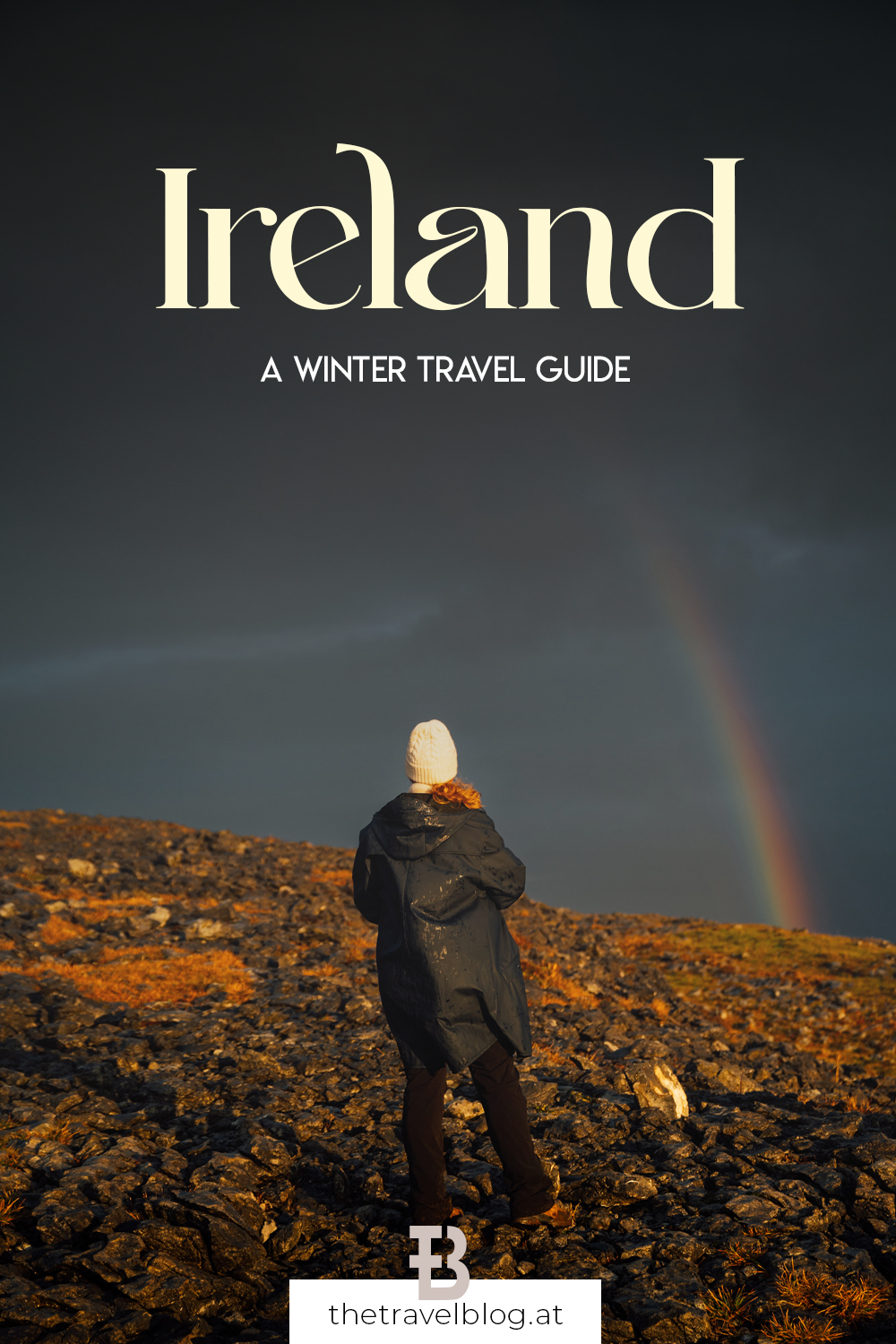„They’re the most important people in Ireland“ says Andrew, our taxi driver in Dublin, while he lets a Guinness delivery truck pass. „They always have the right of way.“ We just arrived in Dublin and outside the taxi the wind is blowing relentlessly and pushes raindrops under everyone’s umbrella. Not only once someone tells us they’re sorry about the weather that day. As if it were their fault that we’re visiting Ireland in February. But gladly it doesn’t stay that way for long. As we learn quickly – the weather changes in rapid speed here in Ireland – and sometimes it’s enough to simply drive around the hill for a different climate.
That’s Ireland in winter, and we’re here for it!
Amidst the green pastures and rich cultural heritage, Ireland stands out as a destination for travellers seeking nature and history-based travel experiences. On this trip we’re focusing on three Irish regions, that we haven’t visited on any of our previous trips – away from Ireland’s larger cities and deeper into the country. The three regions we’re covering during this trip are the peninsula of Howth, the Burren and Kildare – all of them offering a perfect blend of off-the-beaten-path experiences.
Our trip takes place in February, the very low season in most of Ireland (even the capital city Dublin seemed really quiet those days). Many hotels close for the season and Ireland isn’t really on the radar of many travellers in the winter months.
Yet, one must know that Ireland’s weather is affected by the Gulf Stream year round, making for the notorious ever-changing and unpredictable weather patterns in every season – but it’s also responsible for relatively mild winters. Temperatures rarely drop below the freezing point and even in February the island is still surprisingly lush & green. By Mid February the first cherry trees and snowdrops start blooming and the birds’ songs are already announcing the nearing spring.
Let us show you why we believe a trip to Ireland can be worth the while even in winter!
Visiting Ireland in winter
Traveling in the off-season, particularly in winter, offers a unique opportunity to experience Ireland in a more intimate and serene setting. As nature takes on a quieter demeanor and days are shorter, visitors have the chance to immerse themselves fully in the tranquility of their surroundings. In our week on the island we experienced the same unpredictable weather patterns like in our previous summer trips and there’s even a famous saying: “If you don’t like the weather in Ireland – wait 15 minutes.”. That sums up the ever changing conditions perfectly.
Not just once we drove through pouring rain only to arrive 5 minutes later to sunshine and rainbows in the distance. And that’s not just in the winter months, the very same goes for summer weather. At one hotel the manager Eánn perfectly explained things to us: “In Ireland you always have clothes for all 4 seasons in the trunk of your car.” While the weather can be unpredictable, with occasional bursts of rain and wind, there’s a certain beauty in witnessing the ever-changing skies and dramatic coastal vistas that unfold before you.
So pack your rain boots and coats, wool layers and don’t rule out a visit of Ireland in winter.
Regions to visit in winter in Ireland
Dublin: Capital city
Dublin, Ireland’s capital city, is the logical starting point of any Ireland trip. For us it was the third time visiting the historic city with its bustling pub scene, but the first trip in winter. Luckily there’s no shortage of museums and indoor activities in Dublin, as our one day in the city was particularly windy, rainy and cold.
Here’s what we would recommend for a winter visit of Dublin:
- Begin your exploration with a mandatory visit to Trinity College, where the Book of Kells illuminates centuries of Irish heritage.
- If you’re into photography like us visit the “Photo Museum Ireland” (and the next door “National Photographic Archive” with free entrance), where exhibitions showcase the artistry of Ireland’s finest photographers and Ireland’s history.
- Uncover the city’s eclectic history at “The Little Museum of Dublin“, a treasure trove of artifacts and anecdotes that offer a charming glimpse into Dublin’s past (Attention: Make sure to book a tour as only guided visits are allowed!)
- Stroll along the cobbled streets of Temple Bar in the evening, indulging in the lively atmosphere of its pubs, restaurants and bars. If you’re vegetarian like us you might enjoy a bite at “The Saucy Cow Vegan Food Temple Bar” – we can highly recommend the fried oyster mushroom burger!
- Finally, no Dublin visit is complete without a little pub crawl. This time we were invited to join two very special pubs (a little outside of the well known Temple Bar district) – called “The Crafty Fox” and “Sheehans Pub” – and can wholeheartedly recommend both!
Where to stay in Dublin:
- Luxury option: The Merrion hotel
- Boutique option: The Wilder Townhouse
Find out more about where to stay in Ireland in this post.
Howth: A coastal retreat
In Dublin we then rented a car and drove to our first destination – the peninsula of Howth. Howth, nestled on the East coast of Ireland, is a charming coastal village renowned for its breathtaking cliff walks and fresh seafood. With its picturesque harbor, historic landmarks, and stunning vistas of the Irish Sea, Howth offers visitors a tranquil escape just a short distance from bustling Dublin.
Many Dubliners come to Howth for day trips in the summer, but things get noticeably quieter in winter.
Now when we were there we encountered a relatively rare phenomena: Easterly Winds. Usually Ireland’s weather predominantly comes from the West and the Western shores of the island are known to be wild and wind-swept, while Howth’s bay is relatively protected from wind and weather. Yet, during our visit Howth was facing some of the wildest and windiest days of the season. Therefore we unfortunately couldn’t go on our planned boat ride to the small birding paradise called” Ireland’s Eye” off the coast of Howth.
Instead we stayed on solid ground and went for a guided coastal eco hike together with our local guide Shane from Howth Adventures, who showed us some of his favourite spots and shared many wonderful stories about the region, the significance of Dublin Bay as designated UNESCO biosphere reserve and the history and geology of the peninsula.
If you’re ever considering a trip to Howth here’s what we would recommend:
- Howth Cliff Walk: You could technically also go on the cliff walk alone and just marvel at the panoramic views.
- Guided Eco Walks: But we would recommend a tour with Howth Adventures – not just for its educational, but also its entertainment value. Also you’ll get to gain insights into Howth’s rich biodiversity and ecological significance.
- Culture & History: Immerse yourself in Howth’s heritage not just as fishing village, but also as defence post again Napoleon’s army. Learn about the viking invasion and more by booking a guided tour.
- Harbor Exploration: Wander through Howth’s picturesque harbor and visit Howth Market with it’s Crepe stall and fresh coffee joint.
- (Sea)Food: Well, and if you’re not vegetarian like us, this is the place to have some fresh seafood. We were treated to home made lentil lasagne instead at King Sitric’s seafood bar!
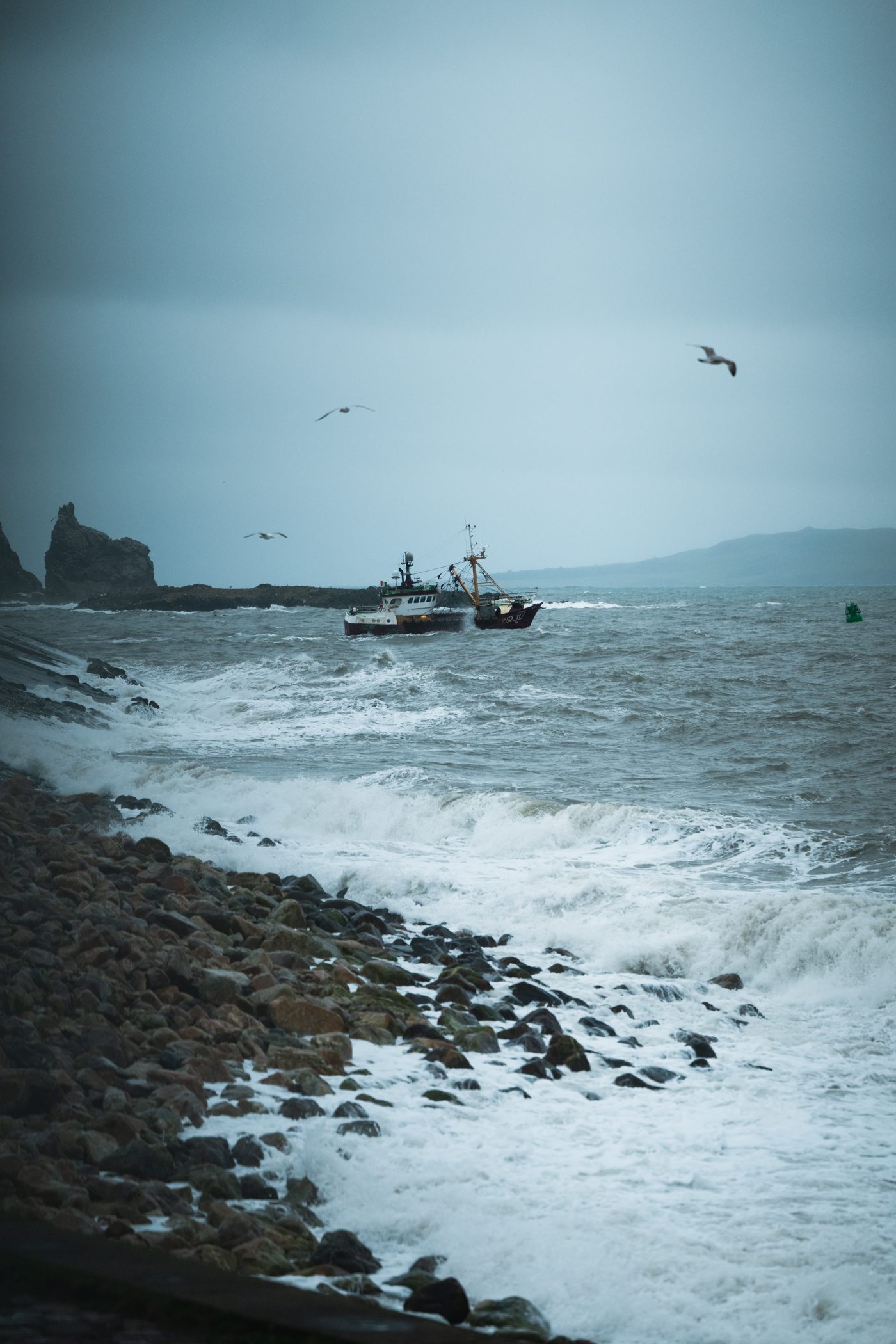
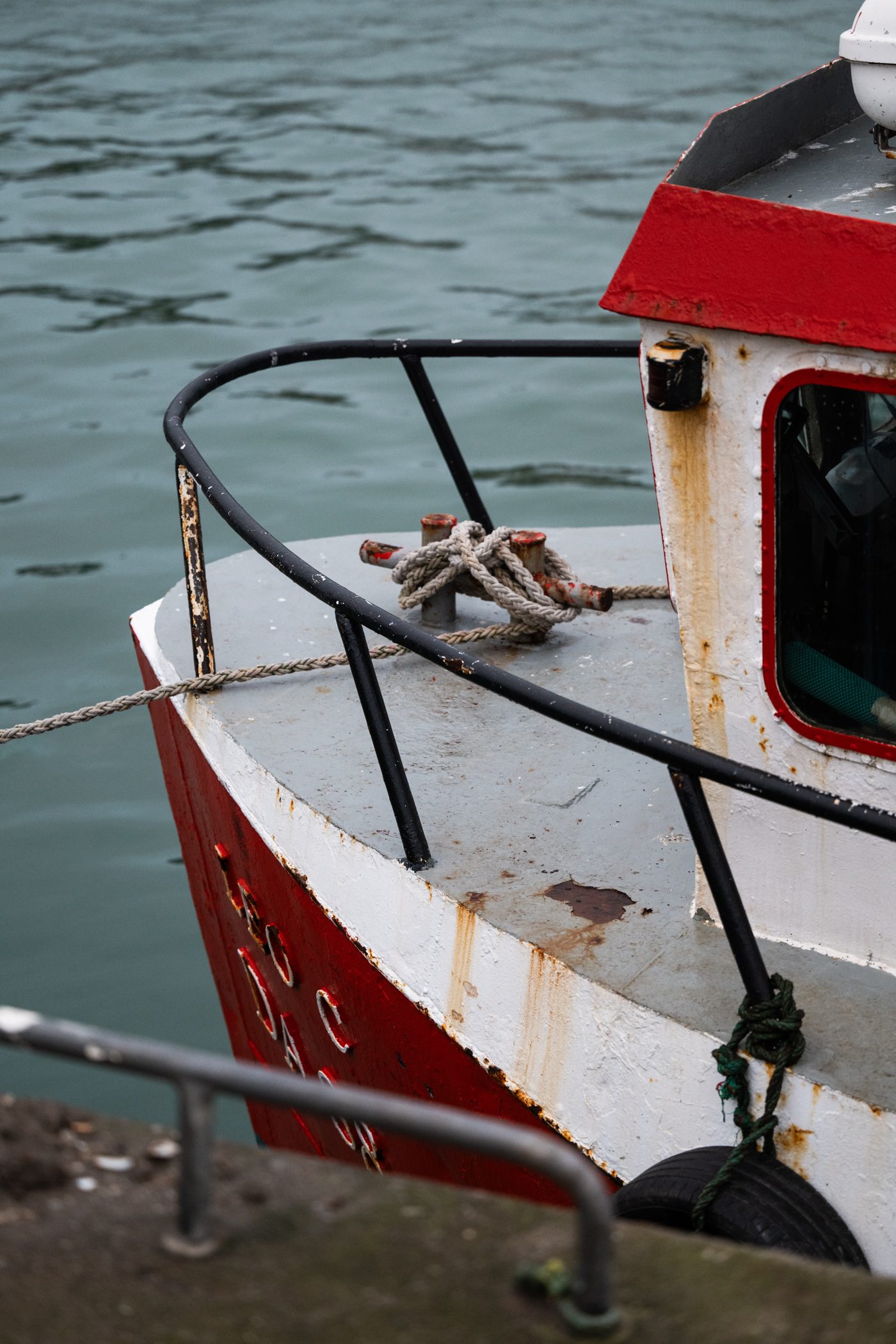
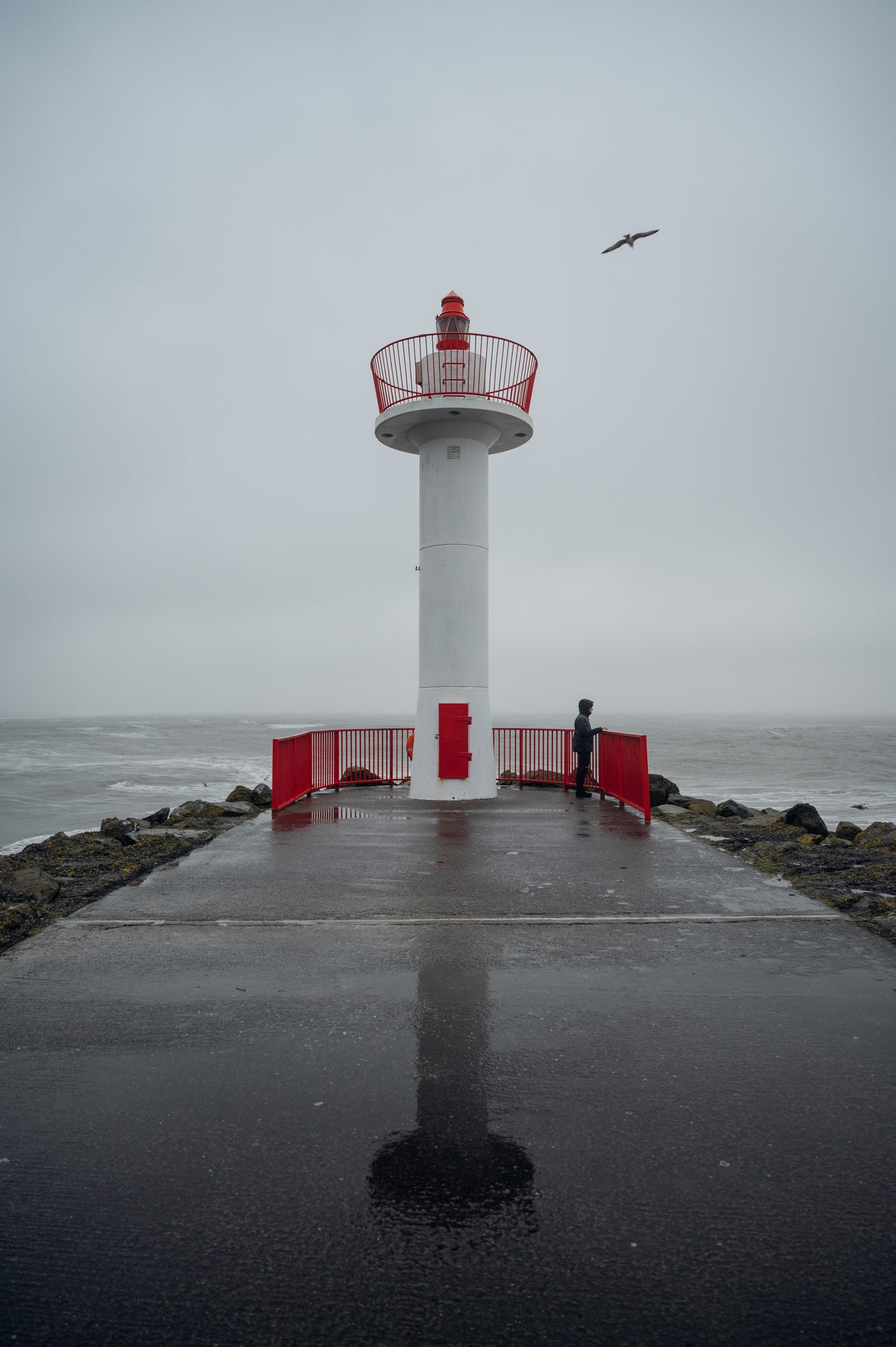
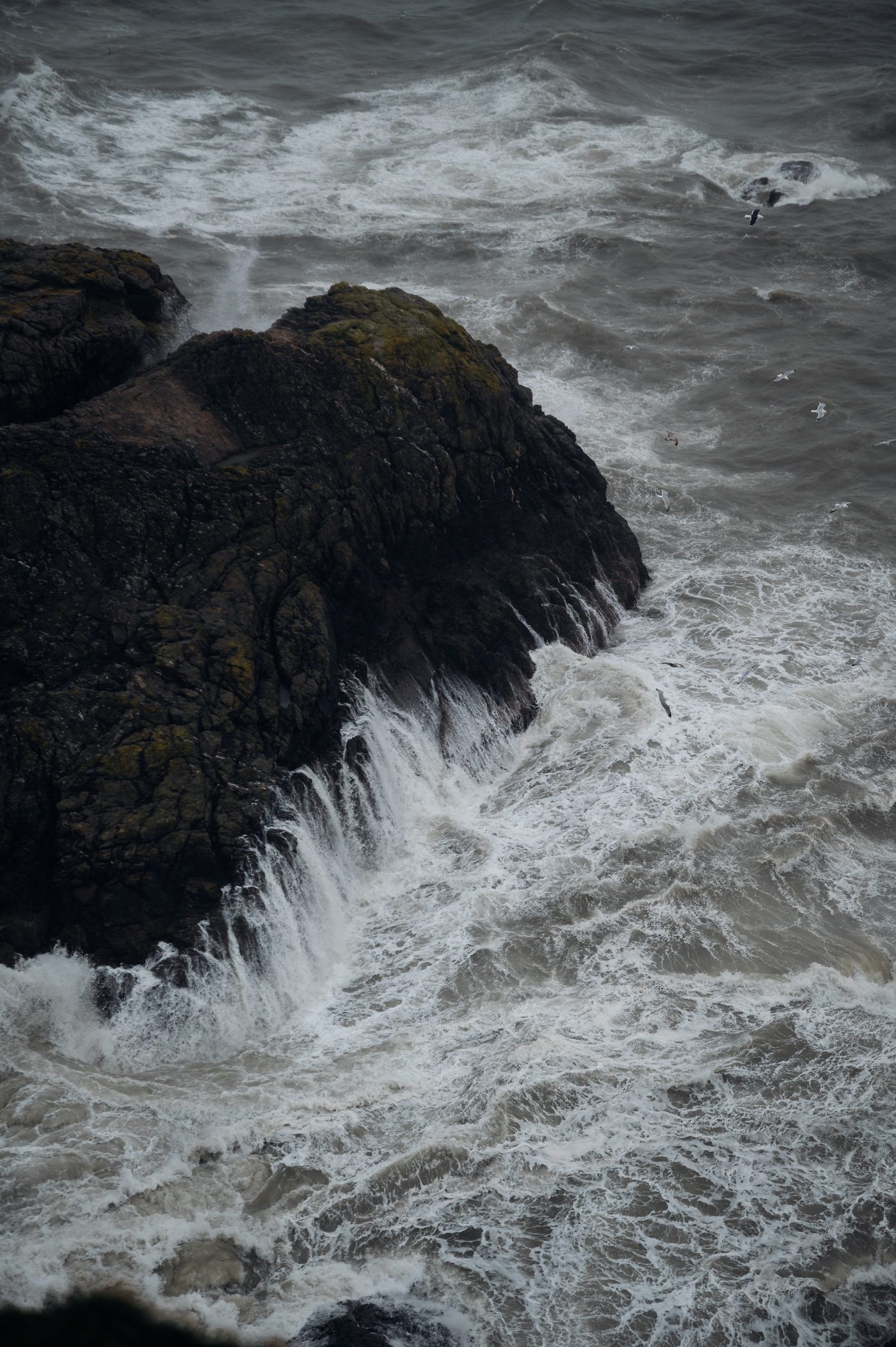
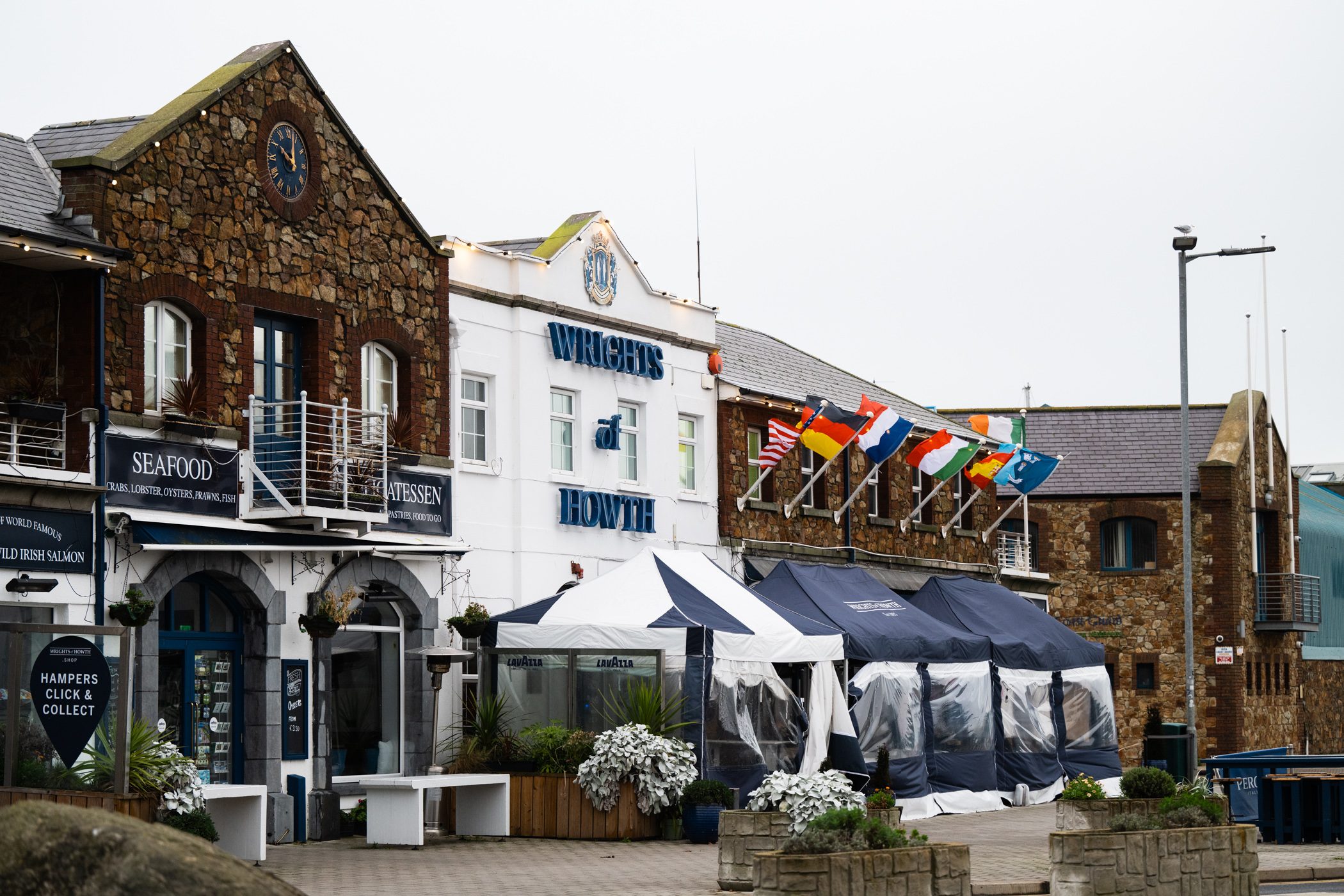 Where to stay in Howth:
Where to stay in Howth:
- Budget option: King Sitric Seafood Bar & Accommodation
Find out more about where to stay in Ireland in this post.
The Burren: Mystical & quiet in winter
The next day we bid farewell to the wild coast of Howth and set your sights on the mystical landscapes of the Burren, a rugged expanse of limestone terrain located in County Clare at the West Coast of Ireland. Most famous for the world renowned “Cliffs of Moher” the rest of the Burren is somewhat hidden under the shadows of the iconic rocks.
Yet there’s much more to it than just the cliffs. We stayed at the Burren for two nights and absolutely fell in love with the region.
Here, amidst ancient stone formations and meandering trails, we felt that innate sense of timelessness of quiet winter days in nature. We went hiking in the Burren National Park, went on a guided tour of The Burren perfumery, tasted chocolate at Hazel Mountain Café and stopped counting rainbows at some point.
Here’s our recommendation for what to do in The Burren in winter:
- Go on the Mullaghmore Return Hike at The Burren National Park: There’s 7 different hikes at the Burren National Park, but only 3 of them lead to the top of Mullaghmore mountain, which offers the best views of the iconic swirl-like limestone structures of the Burren. We chose the 6,5km long Mullaghmore Return hike as we didn’t have enough time for the circular Mullaghmore loop (7,5km), which is a bit more popular. If you have a bit more time we recommend doing the full loop. We only started our hike at 3pm and made it to the top shortly before sunset at 5pm, so that didn’t leave us enough time to do the loop. The hike itself is fairly easy for the most part, just the final ascent can be a bit tricky as there’s a few passages where you have to climb over some rocky outcrops. It had rained as well, so the stones were quite slippery and wet. So this isn’t for inexperienced hikers, but for us as Austrians we wouldn’t call it a very difficult hike ;-). You can find all the Burren hiking routes here.
- Botanical Exploration: Delve into the Burren’s unique ecosystem on guided eco walks, discovering rare wildflowers and learning about conservation efforts to protect this fragile landscape. What we didn’t know before: 70% of Ireland’s biodiversity can be found here in the Burren, making it a very important protected land.
We also recommend visiting the Burren perfumery, which was inspired by the abundance of wildflowers of the region and where you can sample scents that represent the different seasons (no wildflowers were harmed in the making of their perfumes though as plucking wildflowers is prohibited in the protected ecosystem here). This also makes for a perfect souvenir, where the scent will always remind you of your visit of the Burren!
- Artisanal Treasures & hip newcomers: It’s surprising that such a seemingly barren landscape is home to a flourishing scene of arts and crafts. Next to the Burren perfumery we also visited Hazel Mountain Chocolate Café, where you can shop for locally made chocolate from bean to bar and learn how they use the original Burren hazelnuts, that grow right here. In fact the Burren used to be covered in hazel bushes before the first pastoralists arrived and their cows transformed the landscape into what it is today. Without human and cattle intervention the Burren would still be covered mostly in hazels!
- Visit the Cliffs of Moher: Well and of course there’s no way around visiting the famous Cliffs of Moher. During our first Ireland visit in 2016 this was on top of our list (and we also found a way to hike a less crowded part of the cliffs back then). This time we took the main entrance through the Cliffs of Moher visitor center (with a lovely exhibition, 4D experience and a café) as we wanted to see a different part of the cliffs. If you’re visiting for the first time we recommend at least half a day for this, so you have enough time for an extended coastal hike alongside the incredibly impressive cliffs (and the 12 Euro parking fee – per person! – can be justified).
- And if you’re already in the region – make sure to stop and shop for whiskey mustard and local apple jelly at Clare Jam Shop, a local artisanal marmalade shop!
Where to stay in The Burren:
- Boutique option: Gregan’s Castle
Find out more about where to stay in Ireland in this post.
Kildare: Horses & Japanese gardens
Our final stop on our Ireland winter road trip was Kildare. Kildare, a county in Ireland’s eastern region, is famous worldwide for its horse racing and studs. Personally we love animals and wildlife, but aren’t so interested in horse racing as a sports. But there’s still a very good reason to visit the Irish National Stud – as it’s also home to a famous Japanese Garden! Designed over a century ago by Japanese master horticulturist Tassa Eida, the garden is a masterpiece of design, featuring lush foliage, winding paths, and tranquil ponds as well as a tea house.
We also wanted to visit Castletown House, Ireland’s largest and earliest Palladian-style mansion, but unfortunately it was closed during our visit. But we did the next best thing and stayed at one of the most iconic countryside retreats, which is located in its very own estate and felt quintessential Kildar-ian (if that’s a word at all).
Where to stay in Kildare:
- Luxury option: Cliff at Lyons
Find out more about where to stay in Ireland in this post.
Final thoughts on a winter trip to Ireland
In the embrace of Ireland’s mystical allure, winter travelers can discover a true sense of stillness and timelessness. We strongly believe this trip wouldn’t have felt as calming and tranquil in the summer months. We cherished the early evenings at the fireplace, savouring exceptional meals with winter vegetables like celeriac and chard in cozy countryside retreats and waking up to a late sunrise at 8am every day.
But what will stay with us for longer is the energy regained from the slow pace and quietude of winter in Ireland.
So yes, we believe Ireland is worth a trip in winter. Turn on the songs of Enya and finally get a sense for how she became inspired to write tunes like “Aníron”, that feel like they are steeped deeply in those mystical winter days of Ireland. (Oh, and don’t forget to shop for some handmade wool sweaters from the famous Aran Islands, a place where we want to go by boat when we visit the next time! But that’s another story.)
P.S. And even if you can’t make it to Ireland in winter, now that spring is around the corner the landscapes of Ireland will soon turn to vibrant colours as flowers everywhere begin to bloom, providing another good reason to visit the island sooner than later!
For further information on Ireland, please visit www.ireland.com.
Find out more about where to stay in Ireland in this post.

